By Louise Irvine
The legend of King Midas, who turned everything he touched to gold, has inspired Louise’s article on gilding in the fired arts. However, the glistening exhibits at WMODA do not rely on the magic of the gods but on the expertise of European porcelain artists. The first European porcelain, created by alchemists in the 18th century, was known as white gold but there were many experiments to further enhance this precious material with gold decoration.
One of the earliest methods of embellishing with gold involved grinding gold leaf in honey and then applying it to the ceramic body using a suitable fixative. At one time, a garlic and vinegar solution was used and after firing at a low temperature it was lightly burnished to produce a soft lustrous effect. The finish was not very durable and in the late 1790s it was discovered that better adhesive qualities could be achieved by using mercury to break down the gold. Mercury gilding gave a richer more brilliant effect. Continued experimentation during the 19th century eventually resulted in a liquid gold which could be painted easily on to the ware and was more economical and durable.
The apprenticeship to become a gilder was long and arduous and at the Derby factory in Britain it is recorded that 15 months were spent practicing brush strokes, and patterns before the gold could even be touched. The precious metal was precisely measured before use and the apprentice had to account for every trace. Excessive usage could mean dismissal. The brushes and cloths used by the gilders were sent to the smelting company to recover the gold particles.
An important aspect of the gilding process is the burnishing which transforms the gold after firing from a dull matt finish to a lustrous gleam. First, the burnisher scours the surface with a very fine grain silver sand and then a burnishing stone is rubbed firmly over the gold surface to polish it. This is an extremely skilled and time-consuming operation – one slip can damage the finished result.
Decorating with gold assumed particular importance at the Minton factory after the acid gold process was pioneered in 1863. Hydrofluoric acid is used to engrave a low relief pattern into the glazed bone china and then it is coated with gold. The raised parts of the designs are burnished leaving the recessed areas matte, which creates a rich textured effect similar to brocade. Intricate border designs were used on prestige tablewares for aristocratic and wealthy customers. A pageant of emperors, kings, maharajas, and sultans commissioned designs with their individual monograms and crests from the Minton factory.
Raised paste gold is another way of creating opulently textured ware and this technique became very fashionable in the late Victorian era. Aspects of the border designs were raised with an enamel paste and after firing gold is applied with a fine sable hair brush. Raised paste gilders at Minton and Royal Doulton typically served a seven-year apprenticeship before they were permitted to decorate the most prestigious patterns. The use of Sevres style ground colors, such as Mazarine blue, Malachite or Rose du Barry, often provided a dramatic background for the most stunning encrusted gold work.
Gold was used lavishly at the Chicago exhibition of 1893 where the Royal Doulton artists won the highest number of awards granted to a pottery manufacturer, including gold medals. William Hodkinson excelled in free-hand gold embellishment, such as the trailing seaweed design on the Mermaid centerpiece. Fine gold traceries of flowers and arabesques on a Vellum ground became fashionable as Spanish Ware. Charles Noke’s first Vellum figurines were often enhanced with gold details. Although gold is most often associated with porcelain, the Doulton factory experimented with golden effects in Lambeth stonewares, such as the lacy textured Chiné wares and the Gilt Circle wares.
During the roaring 1920s, Royal Doulton clad entire figures and wall masks in burnished gold costumes. The Lion of the East by Richard Garbe could be King Midas himself at the height of his amazing powers. Gold is also used to effect in Garbe’s sculpture of The Cloud, which depicts the maiden Io being seduced by Jupiter disguised as a golden cloud. Princess Badoura, the most prestigious figure in the HN collection, was finished with best-burnished gold to complete the stunning effect. Golden highlights were added to Royal Doulton’s new luxury wares, such as the Titanian and Rouge Flambé glazes. Traditional methods of hand application continued alongside new styles of printed gold.
Some of the most opulent gilded china was produced by the Royal Crown Derby factory. Their sumptuous Japan and Imari patterns have been made since the 18th century and continue in production today. They are seen to best advantage by candlelight as the flickering flame catches the burnished gold and rich shades of cobalt blue and iron red. A Royal Crown Derby dinner table is a veritable feast for all the senses. The rich Imari patterns enjoyed a renaissance in the 1980s with the launch of Derby’s collectible paperweights. The lustrous golden sheen is achieved by printing and hand-painting the gold before a final firing and burnishing with “bloodstone” a variety of agate which does not scratch the surface of the gold.
The Wedgwood factory added gilded outlines of cobwebs and leafy forests to their luxurious Fairyland Lustre wares. The technique is known as “pluck and dust” or “best gold”. Pure gold in powder form is combined with mercury and a suitable flux. It is dusted on to a sticky printed design with a cotton-wool pad and all surplus gold is gently brushed off. Gold edges or rims are painted on by hand with a brush and the piece is fired again in a low temperature kiln. Fairyland Lustre wares are fired five or six times to achieve their glimmering effect. For three years, from 1923 until 1926, Wedgwood printed some of the Fairyland patterns in gold and emphasized details in a matt vermillion coral color.
Pure white porcelain enhanced with gold is a specialty of the Lladró factory in Spain. Several contemporary designs in their Naturo Fantastico collection are offered with gold embellishment together with sculptures in their High Porcelain collection such as the Great Golden Dragon and The Kiss. There’s even a version of the Niagara chandelier where the fairies have received the Midas touch.
Read more about Legendary Lladró
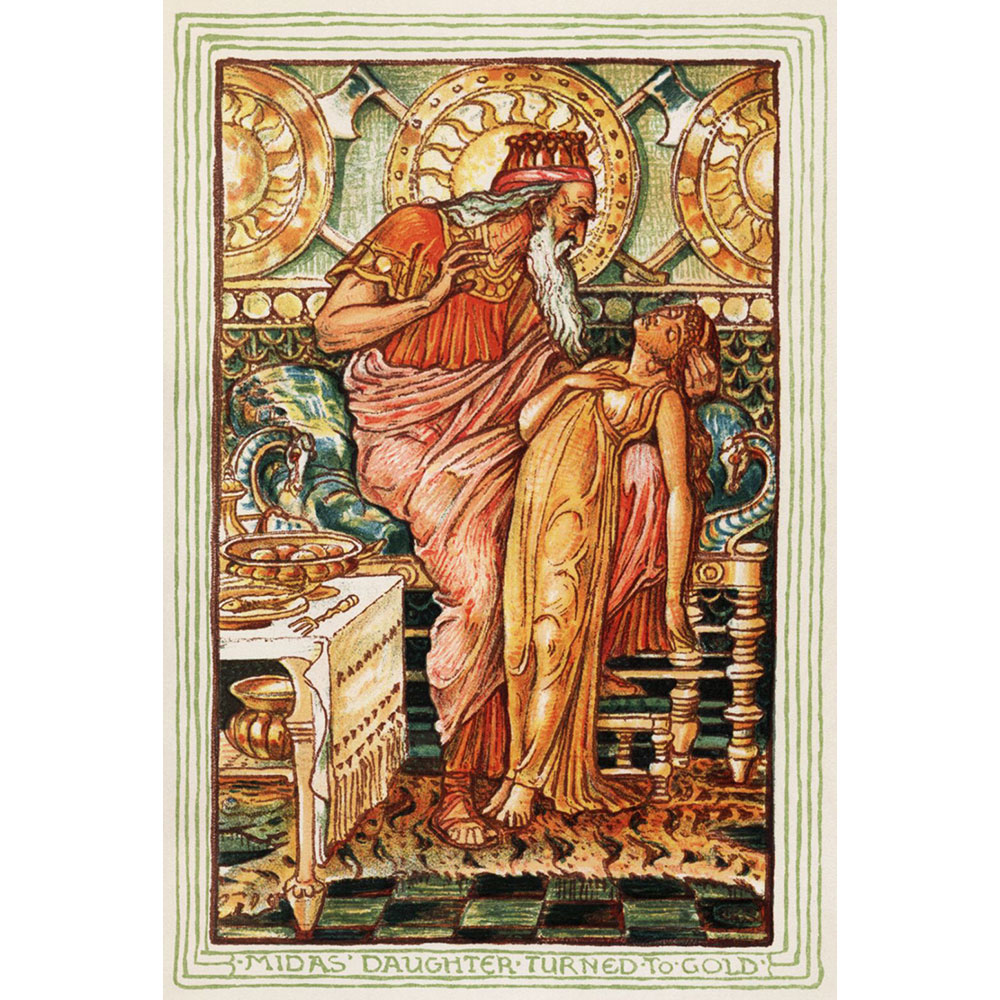
King Midas
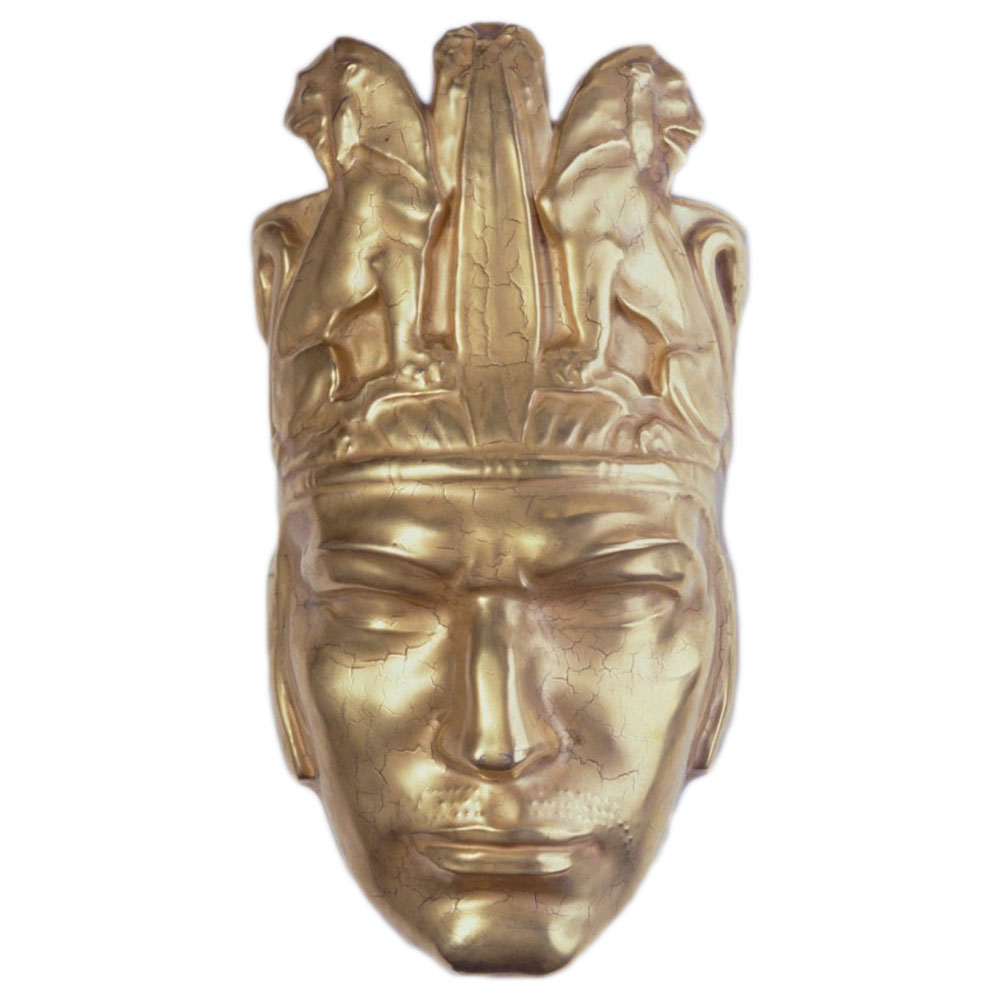
Royal Doulton Lion of the East by R. Garbe
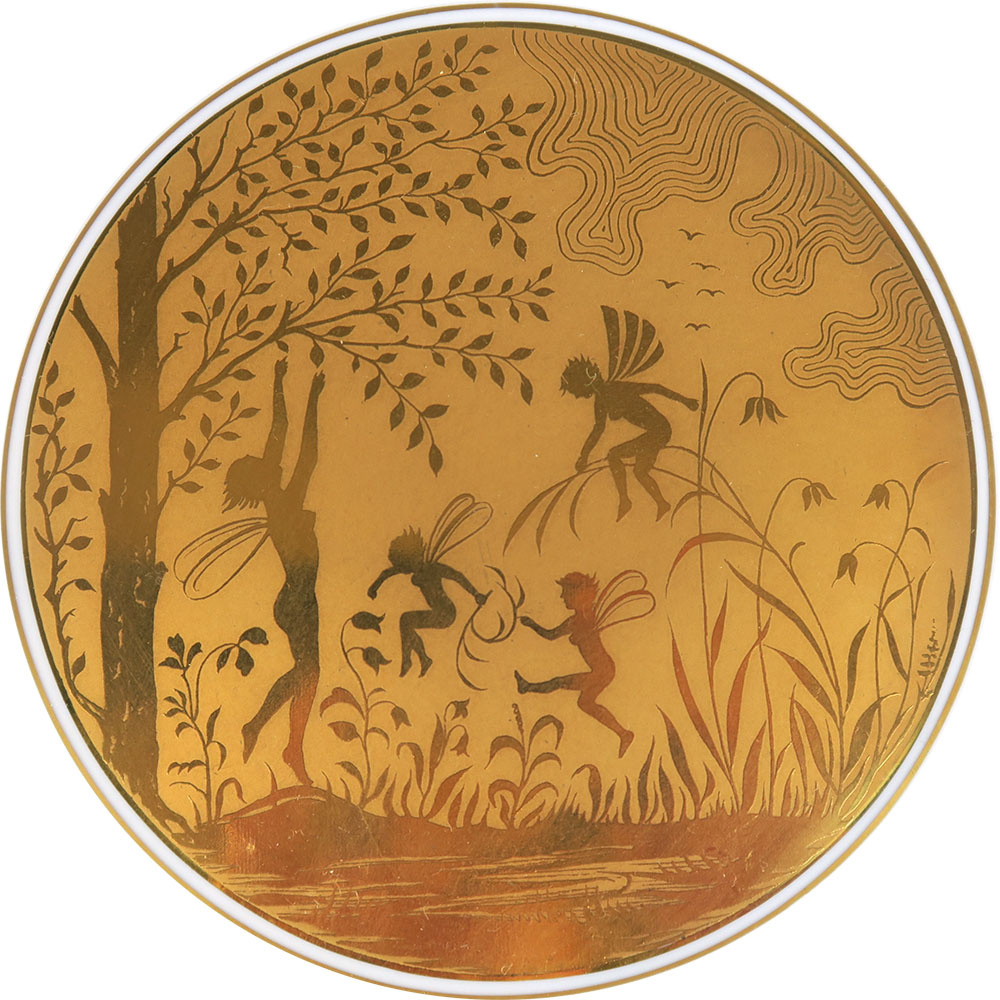
Gloria service plate detail
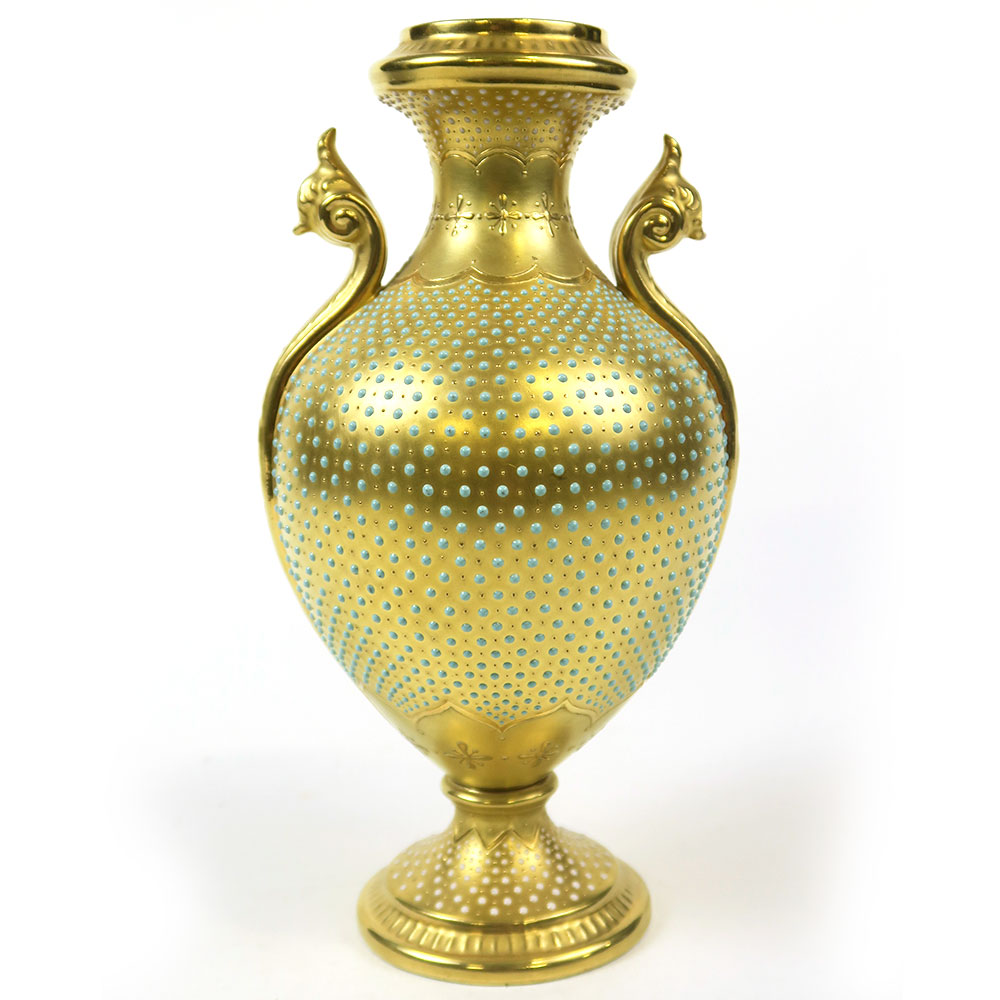
Coalport Gold & Enamel Vase
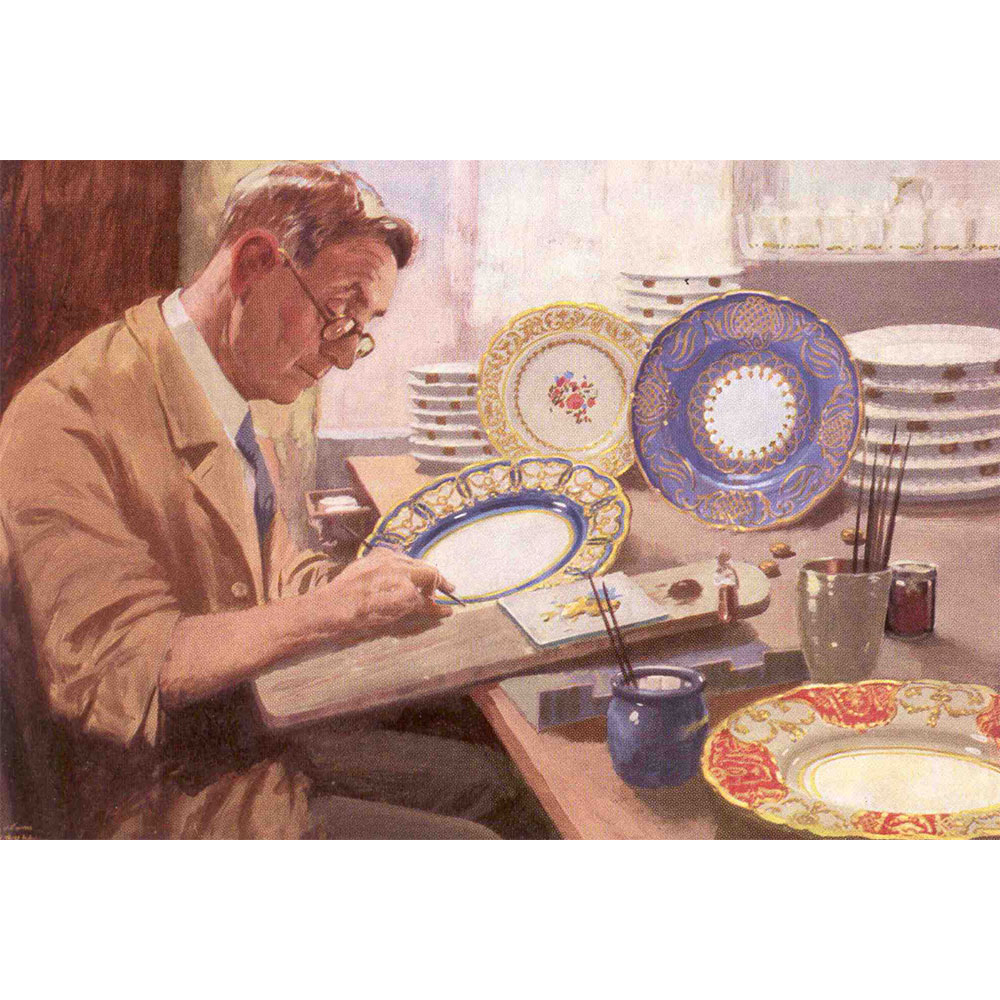
The Gilder Gordon Nicoll
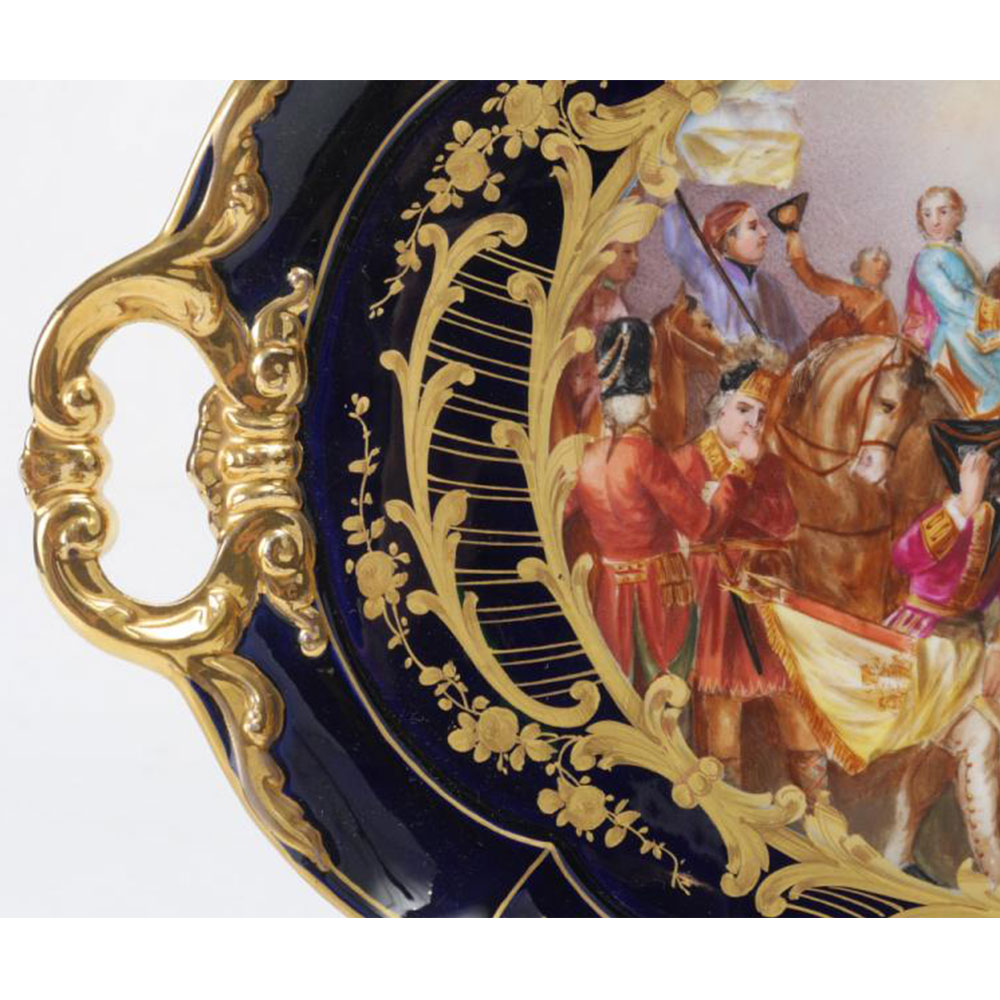
Sevres gliding
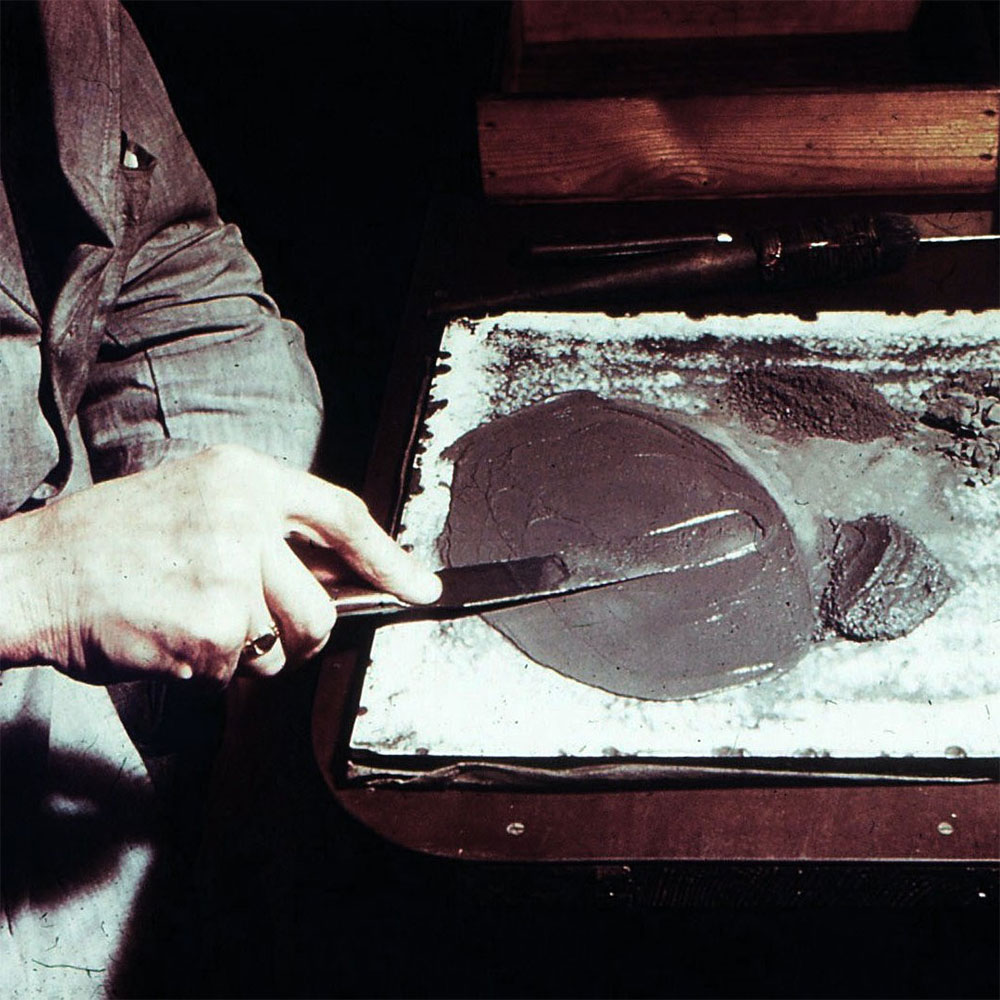
Mixing gold and flux
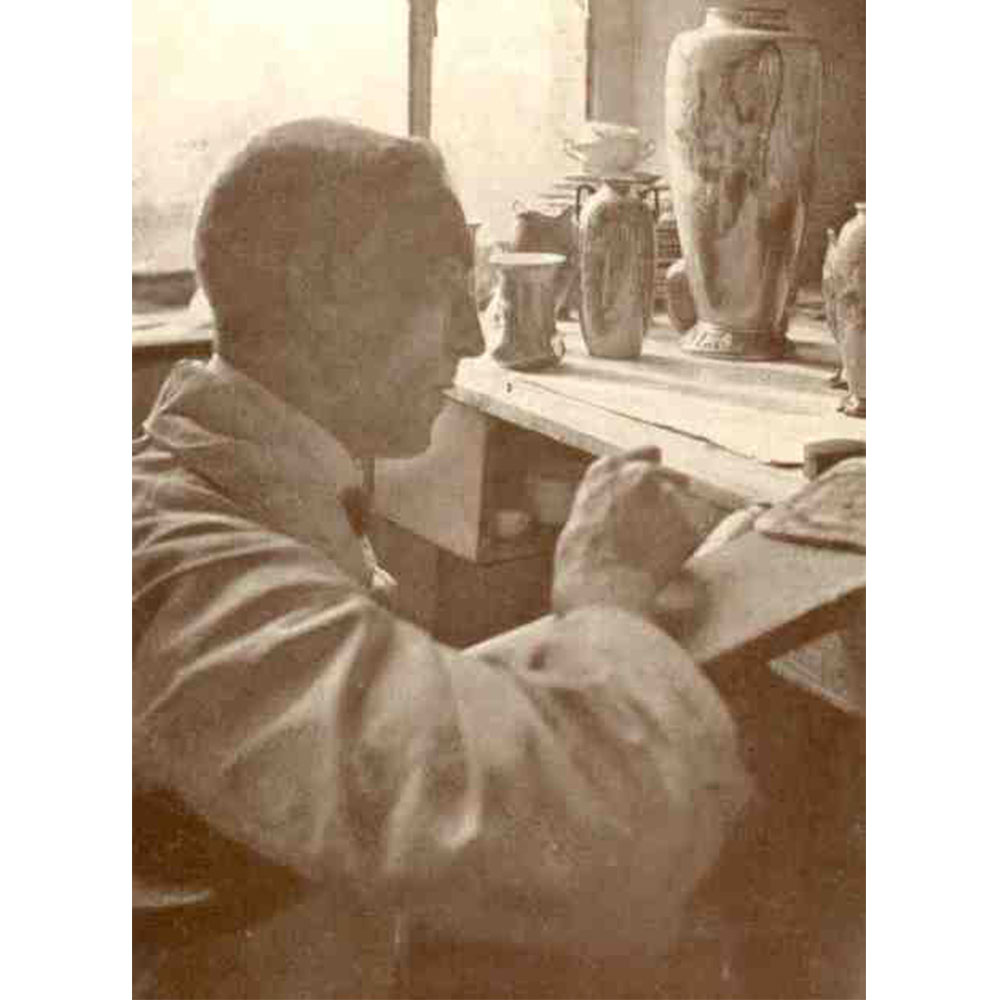
Royal Doulton Gilder
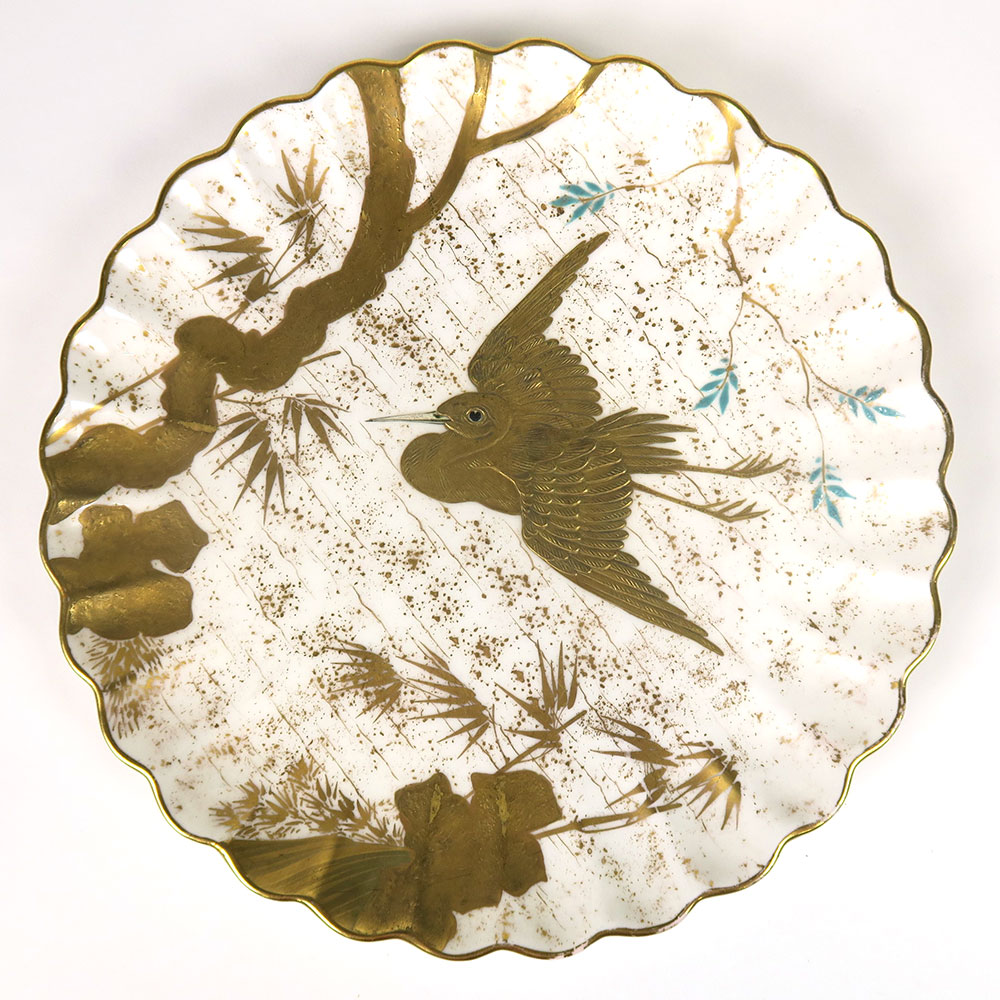
Spode plate by C.B Brough
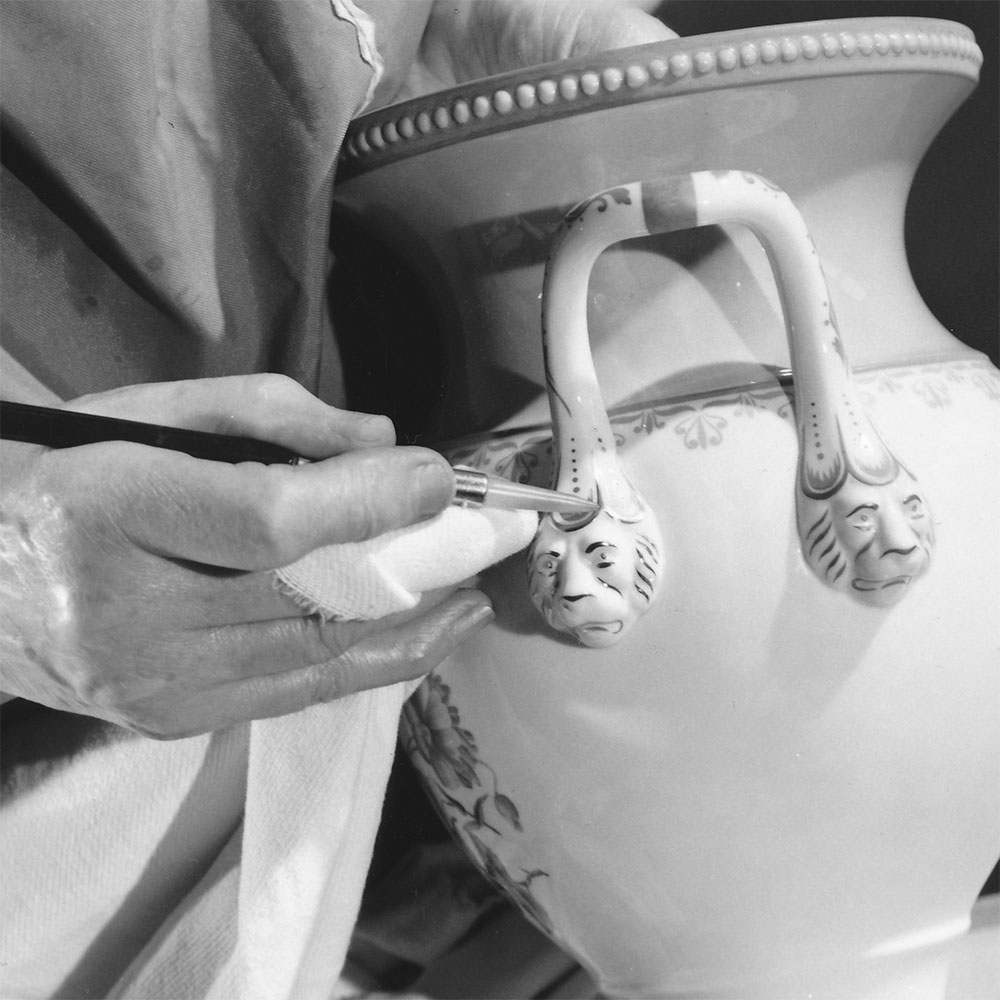
Burnishing gold
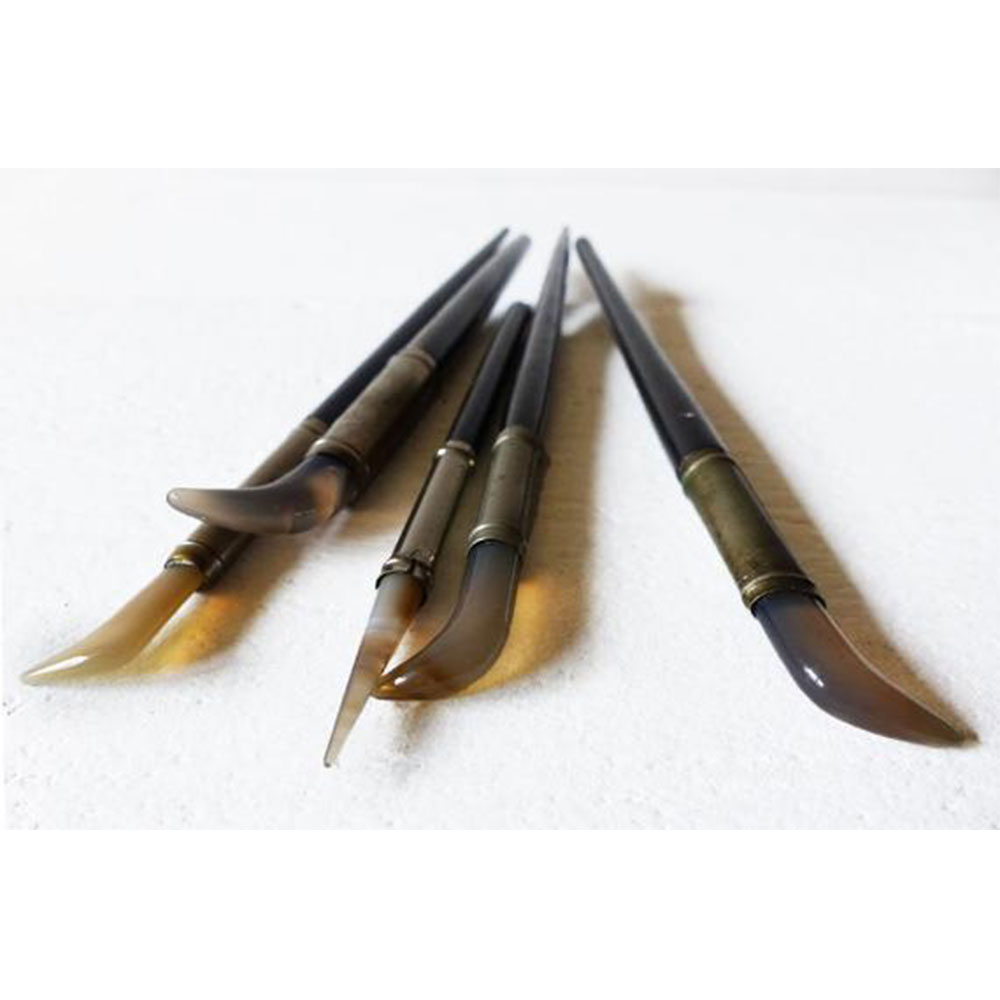
Agate gold burnishing tools
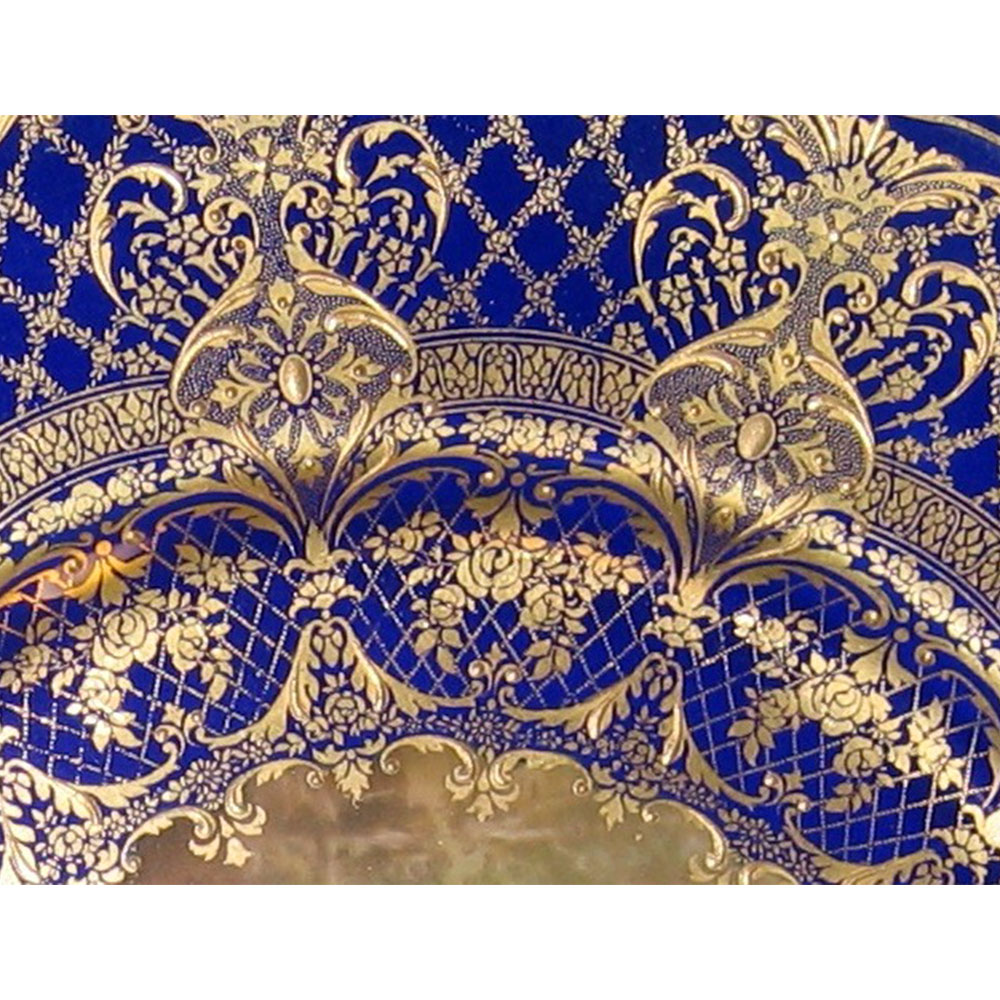
Detail of raised paste gilding
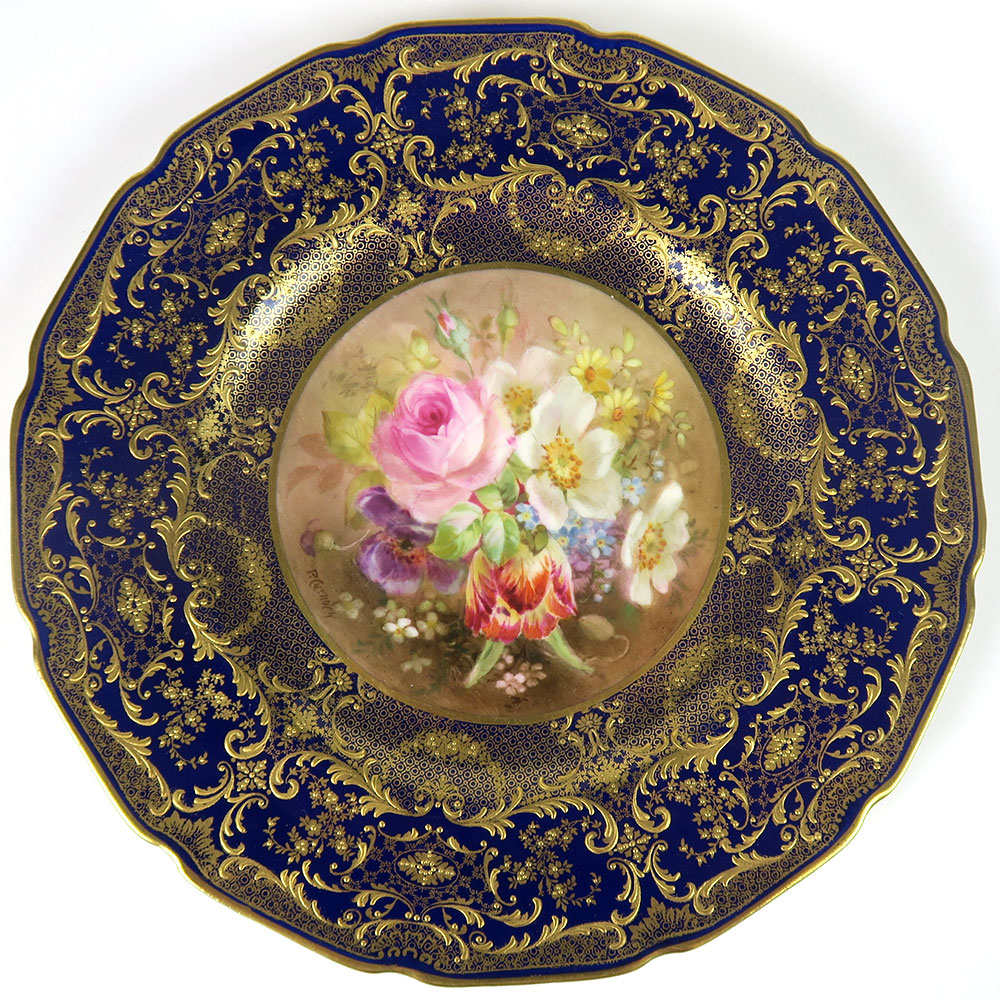
Royal Doulton for Tiffany Plate by P. Curnock
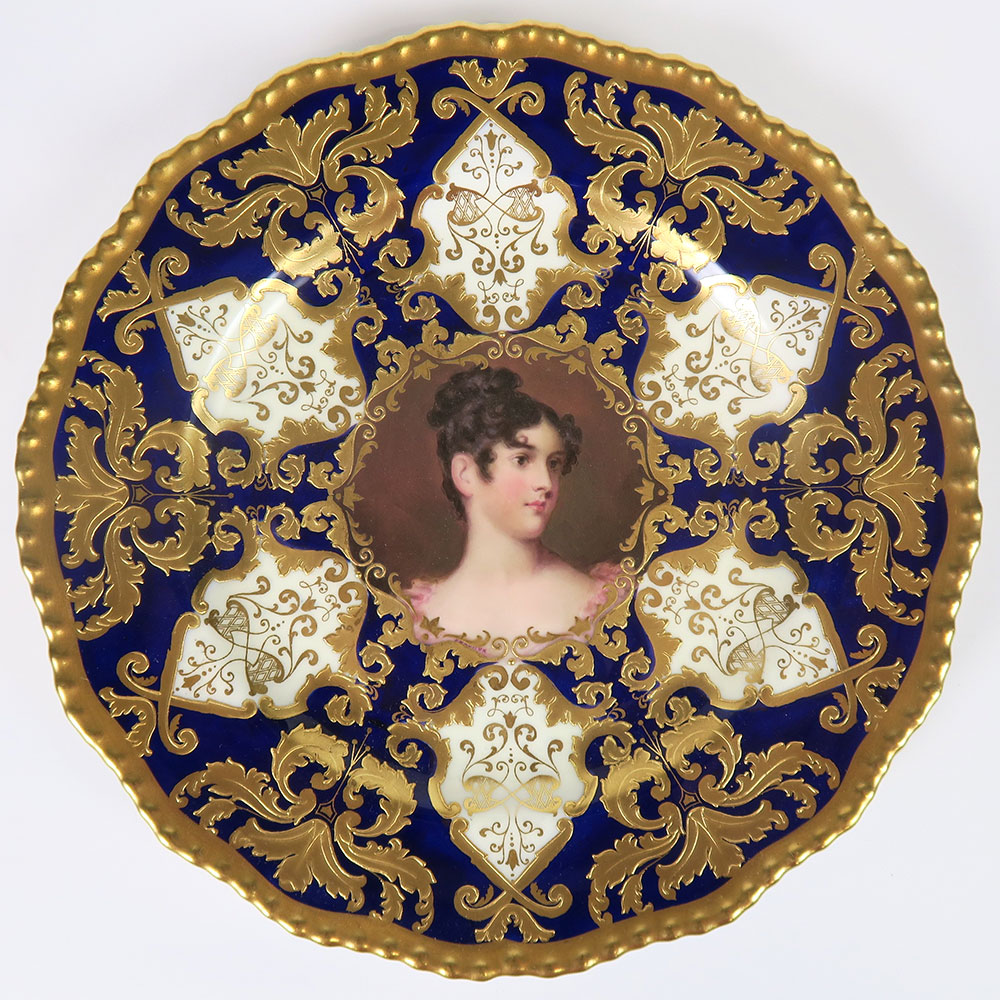
Royal Doulton for Tiffany Plate by F. Sutton
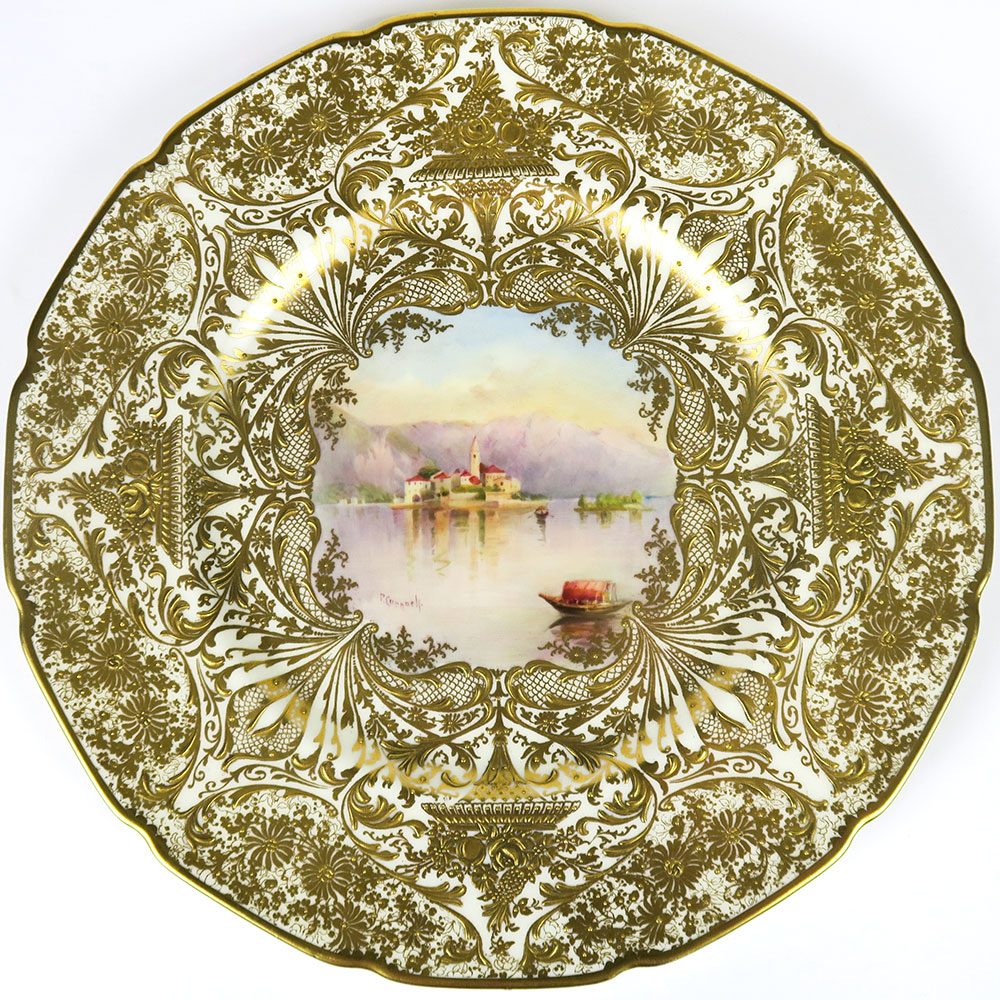
Royal Doulton Italian Lake by P. Curnock
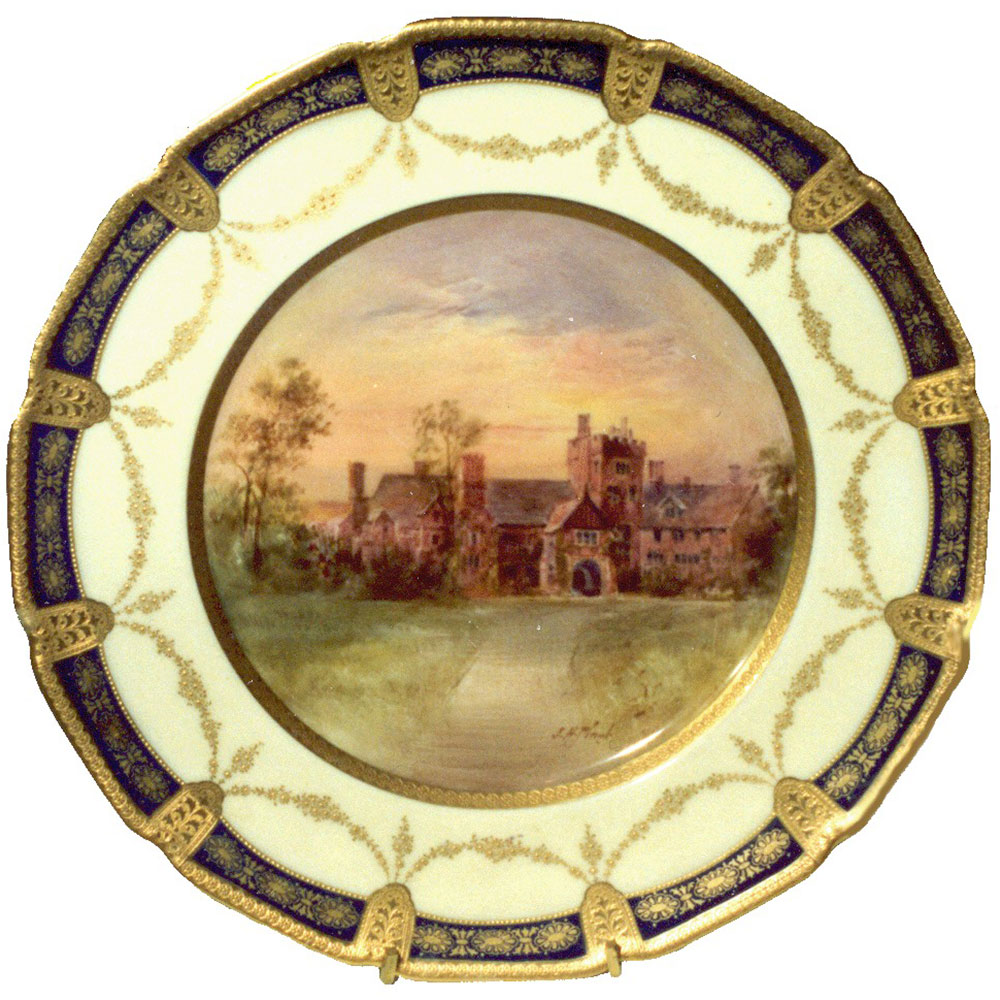
Royal Doulton Stan Hywet Plate
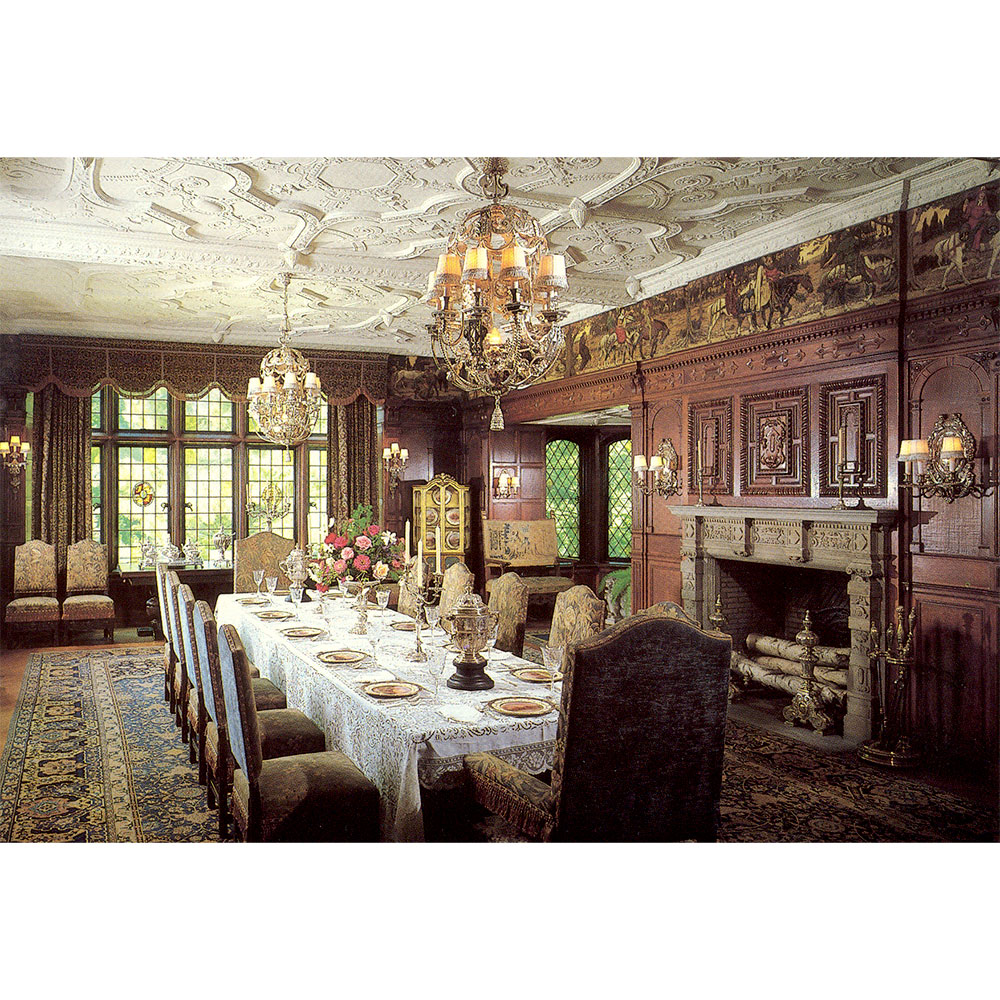
Stan Hywet Dining Room, Ohio
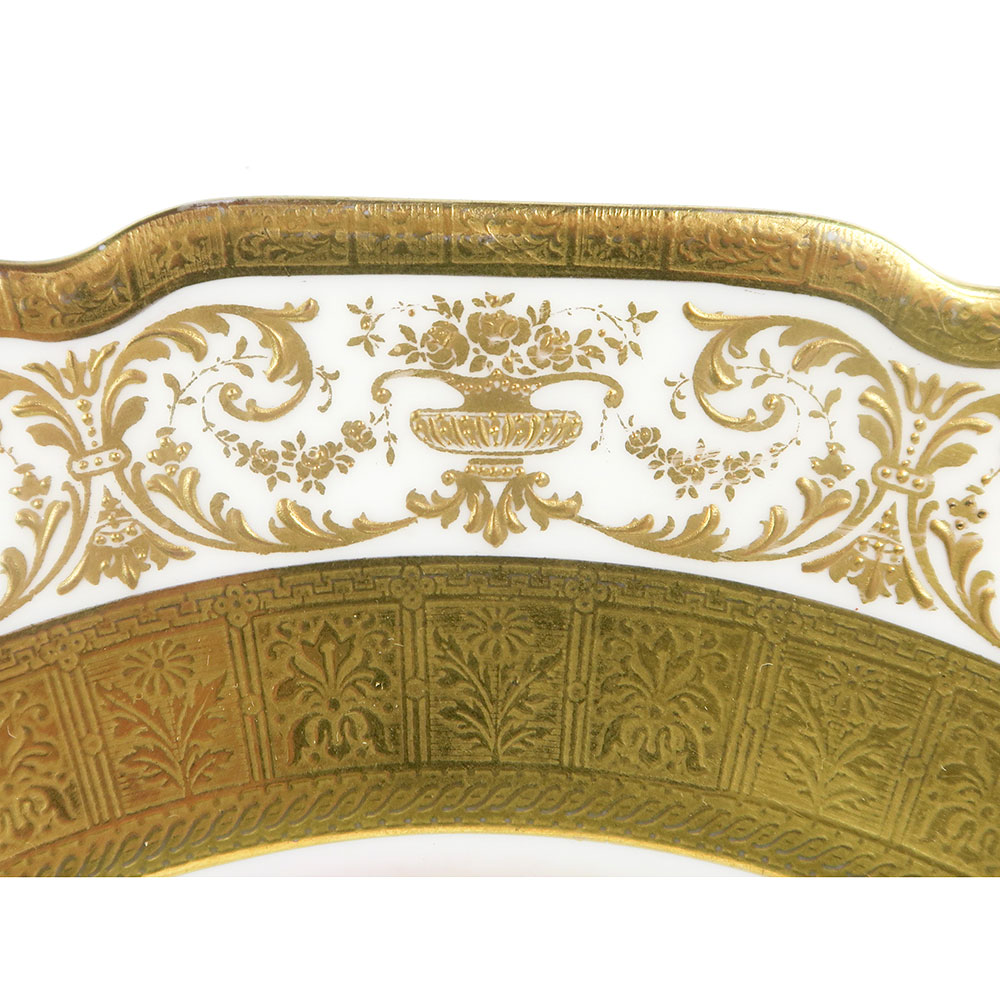
Raised paste and acid gold detail
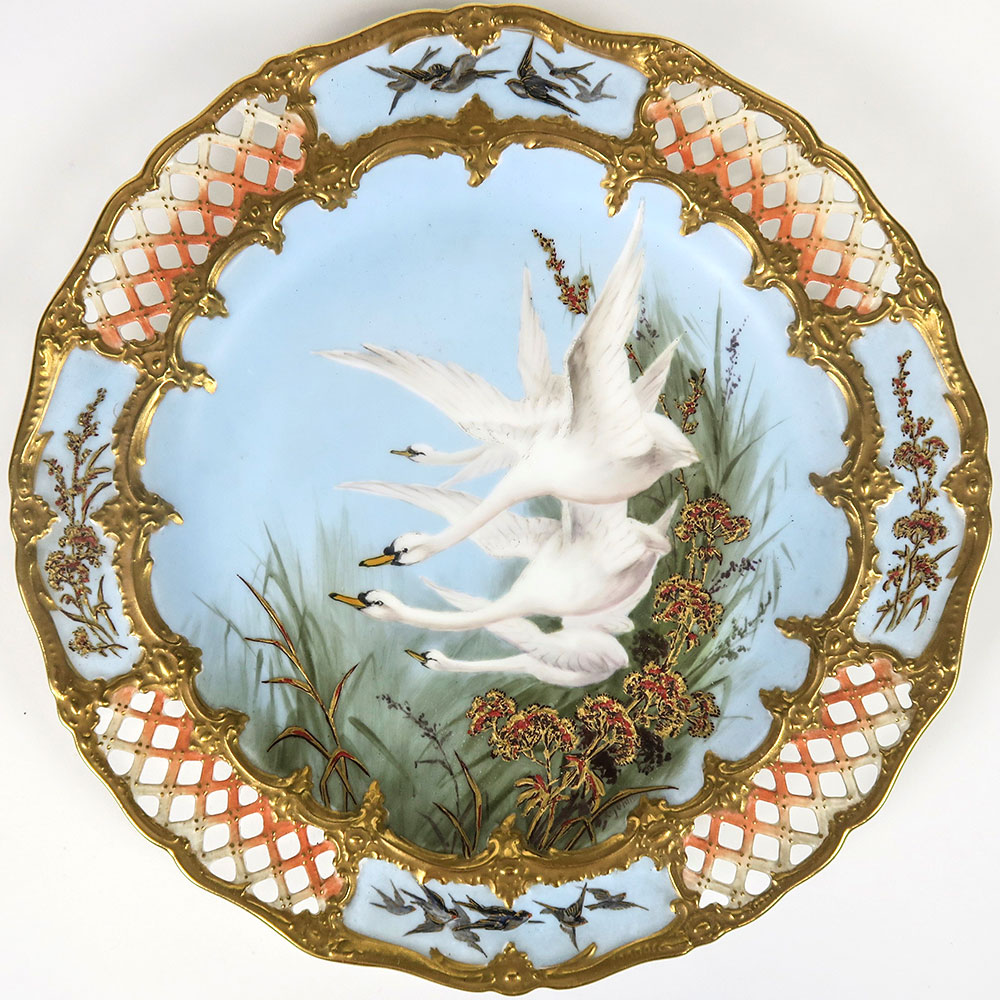
Royal Worcester by G. Johnson
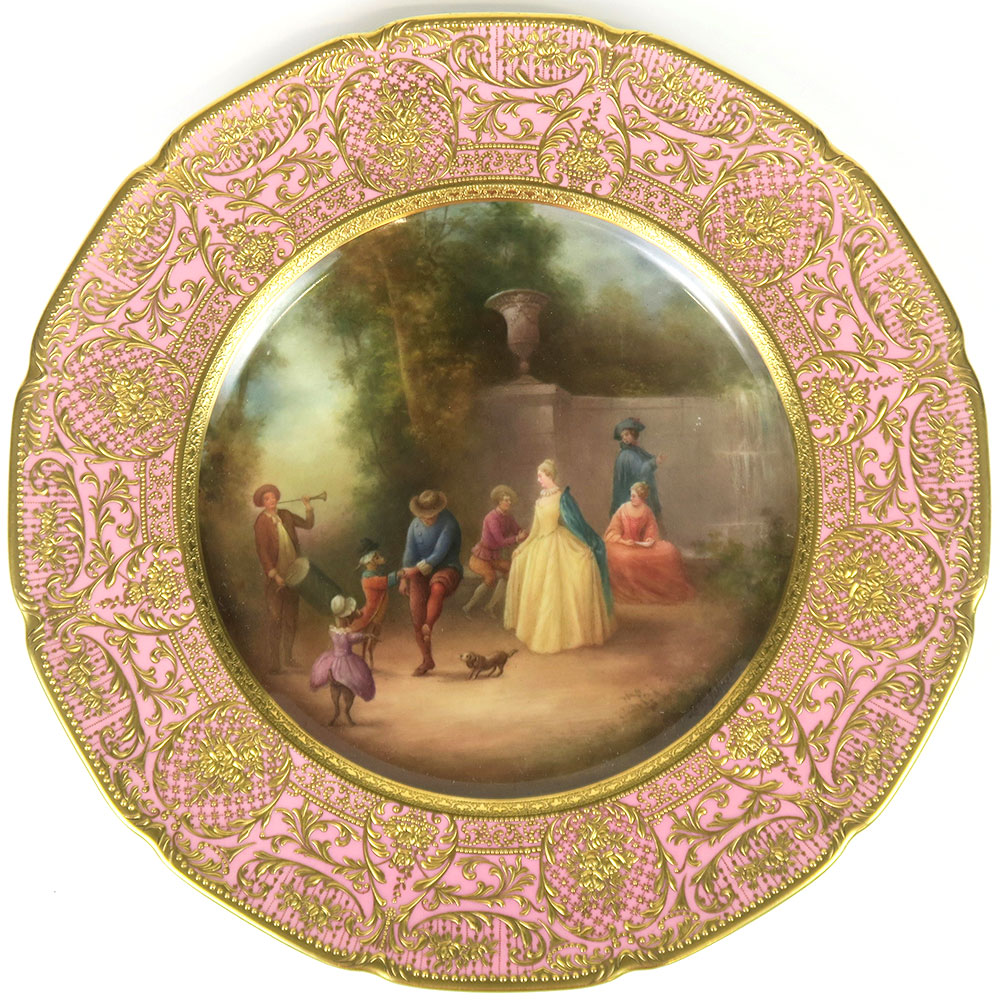
Royal Doulton Entertainment by L. Johnson
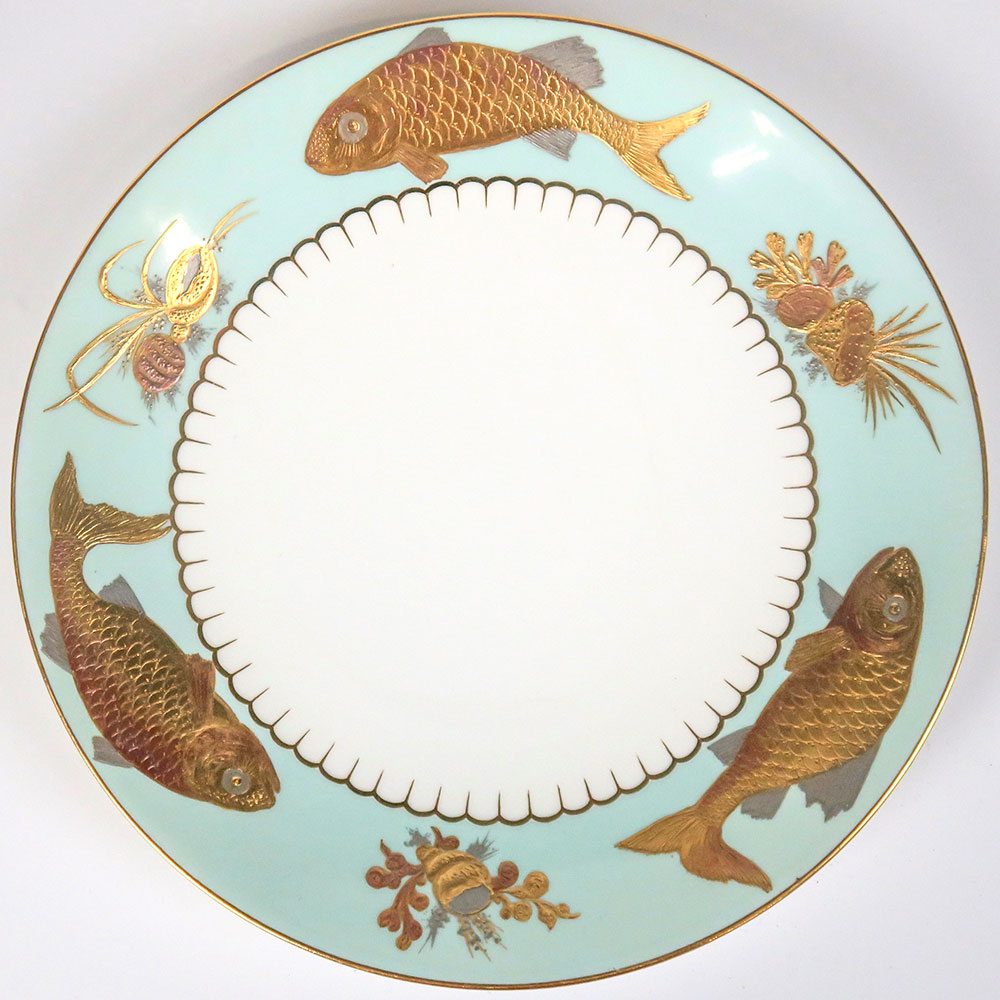
Minton for Thomas Goode
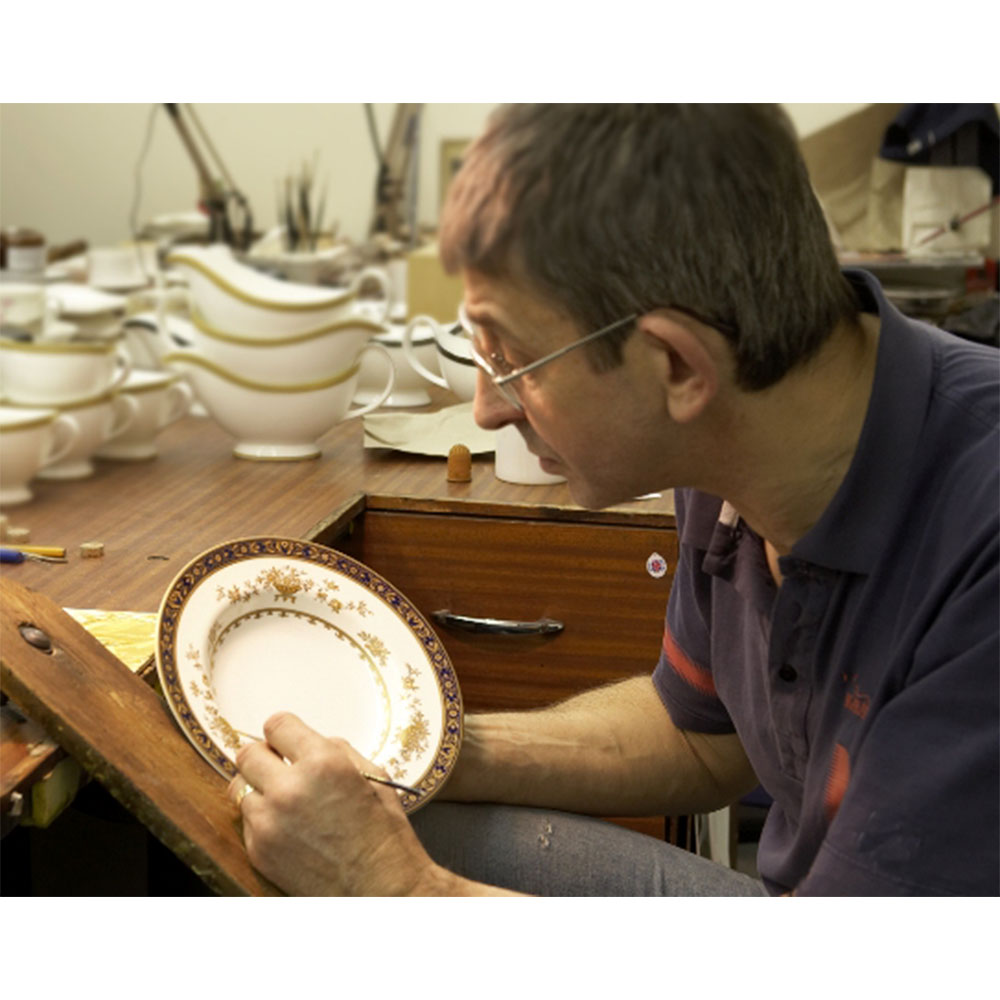
Minton gilder
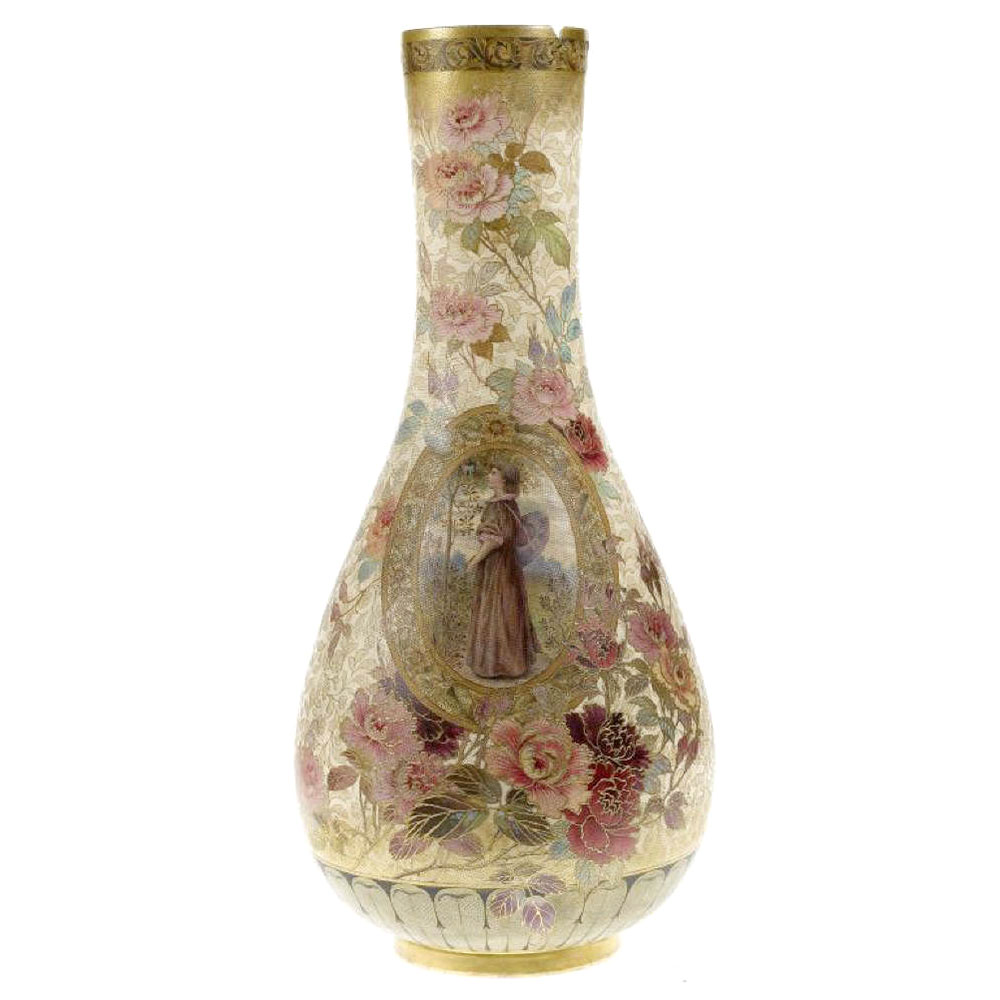
Doulton Slater’s Patent vase
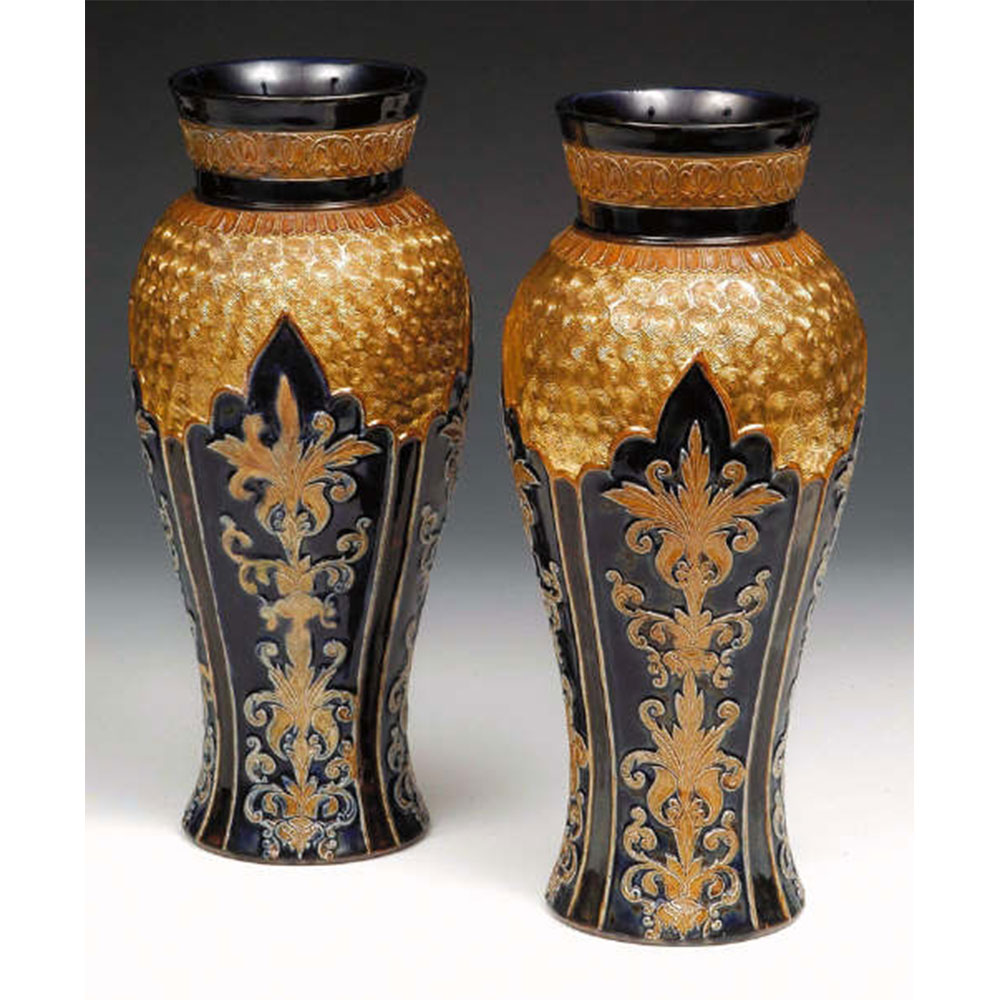
Doulton Gilt Circles
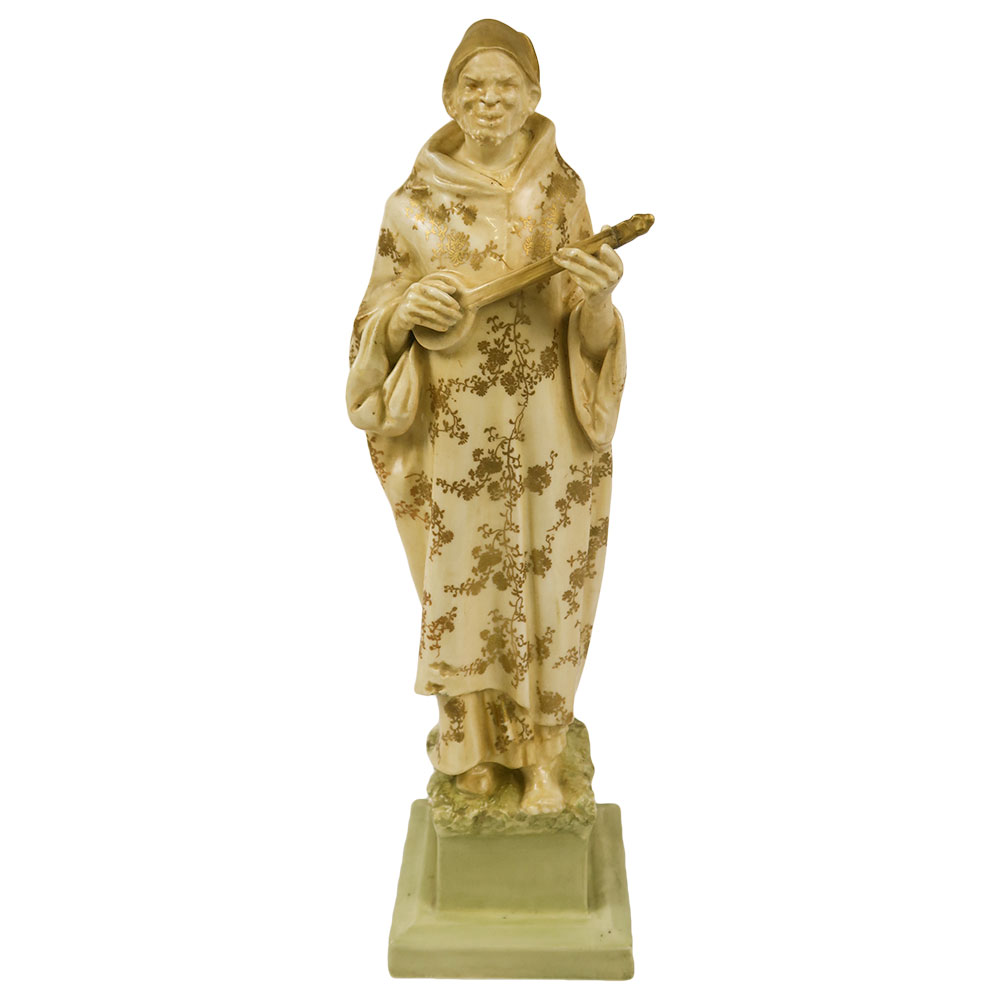
Doulton Minstrel vellum & gold
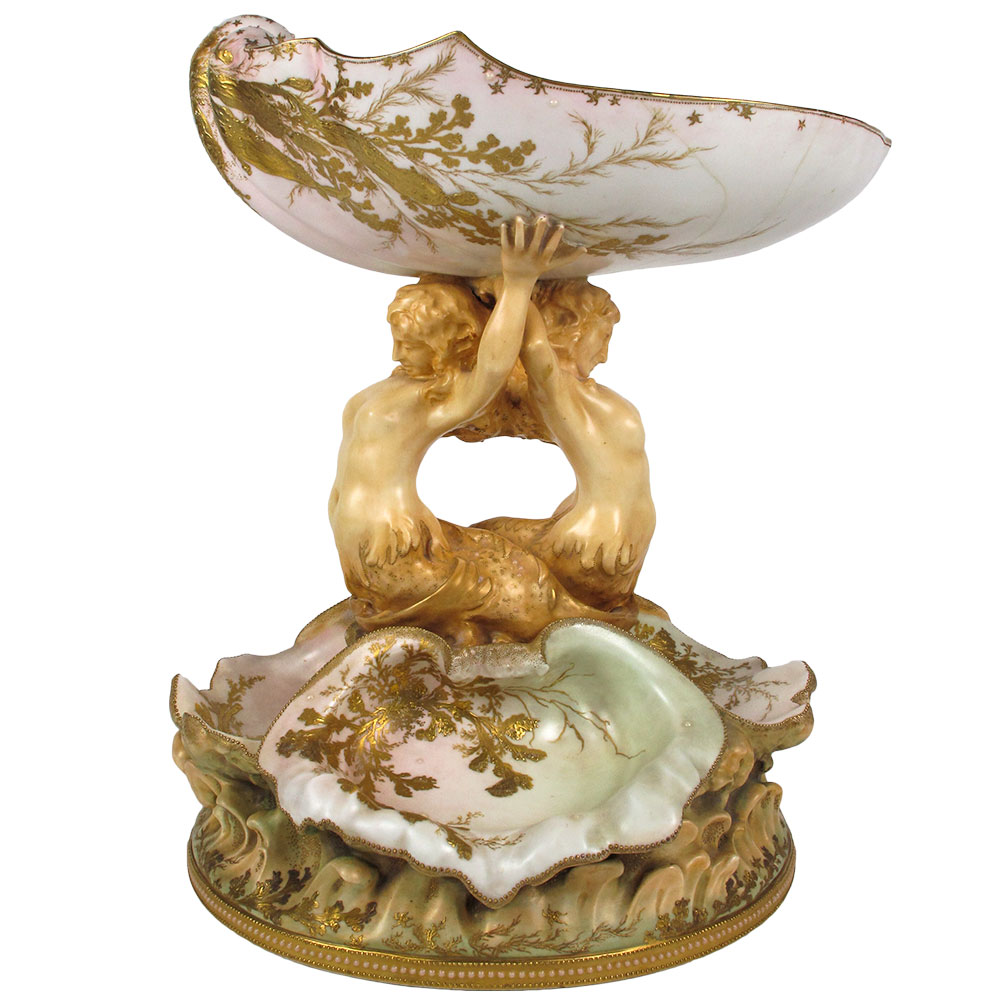
Doulton Mermaid Centerpiece by C.J. Noke
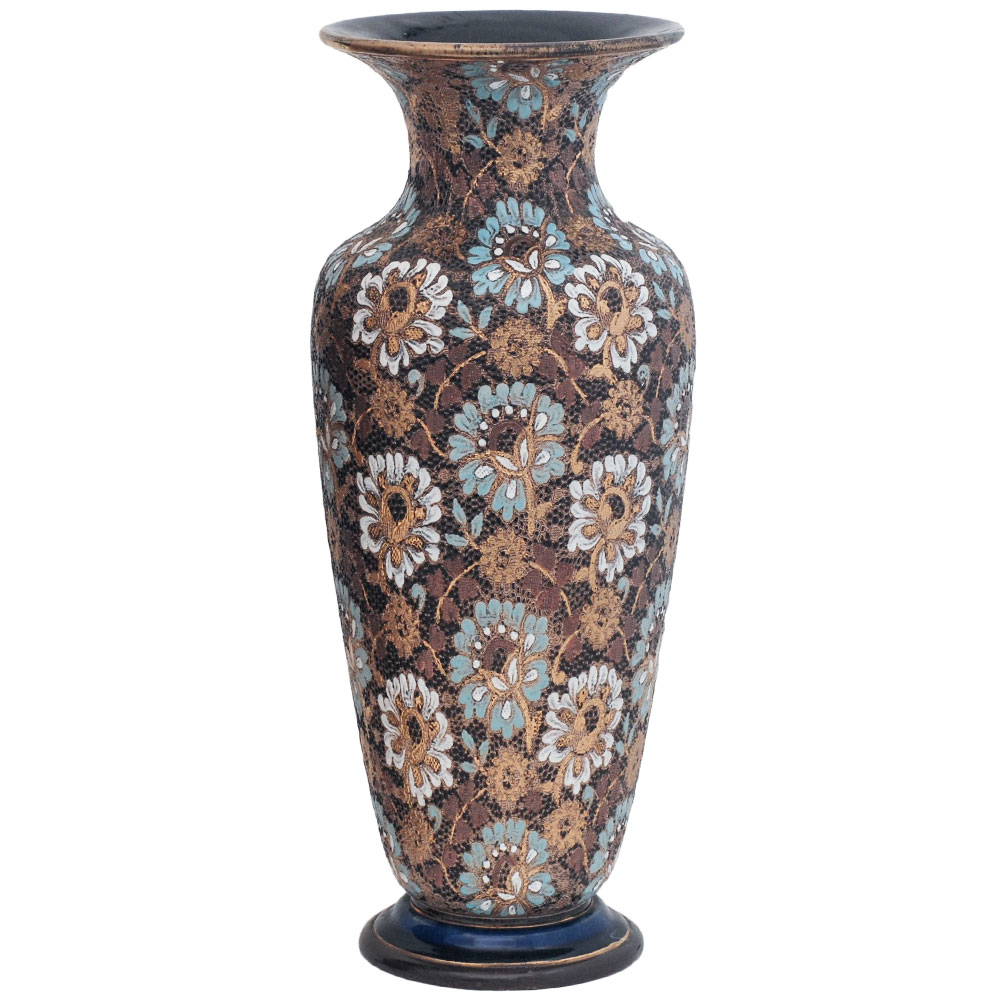
Doulton Lambeth Chiné vase
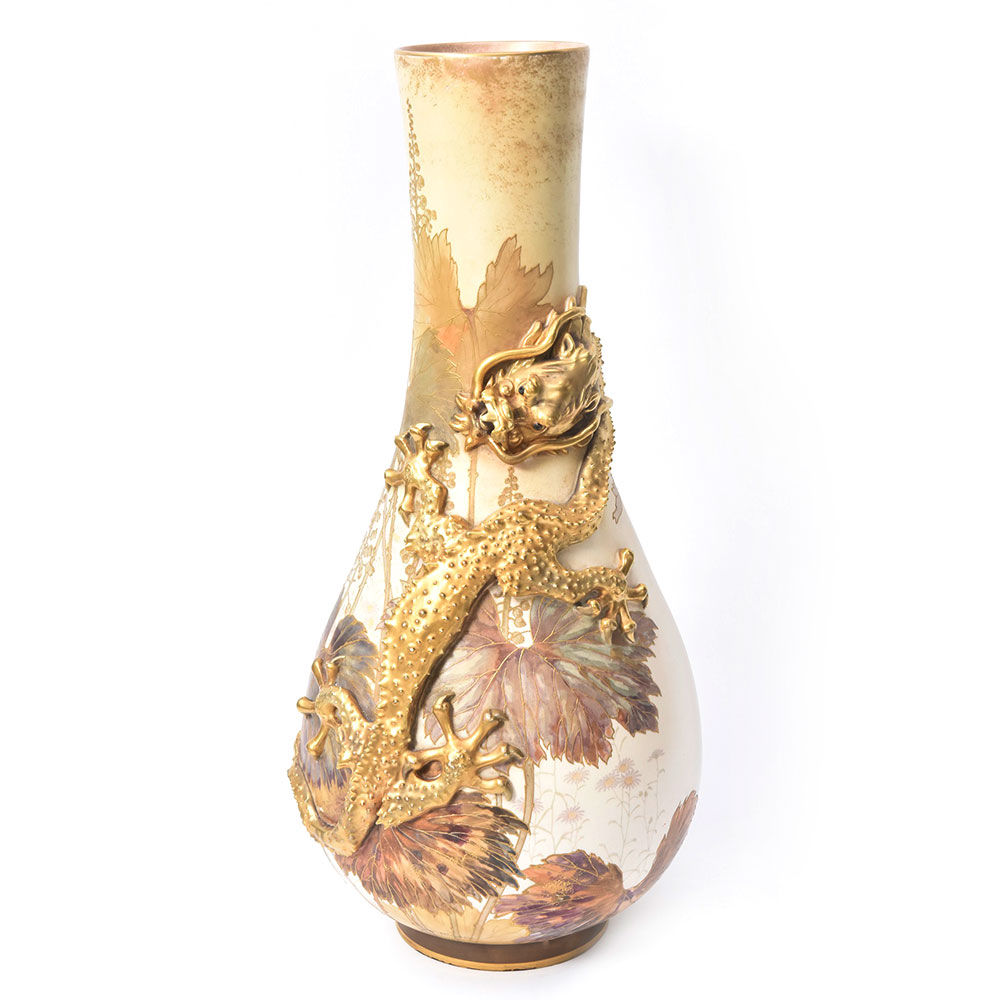
Doulton Golden Dragon vase
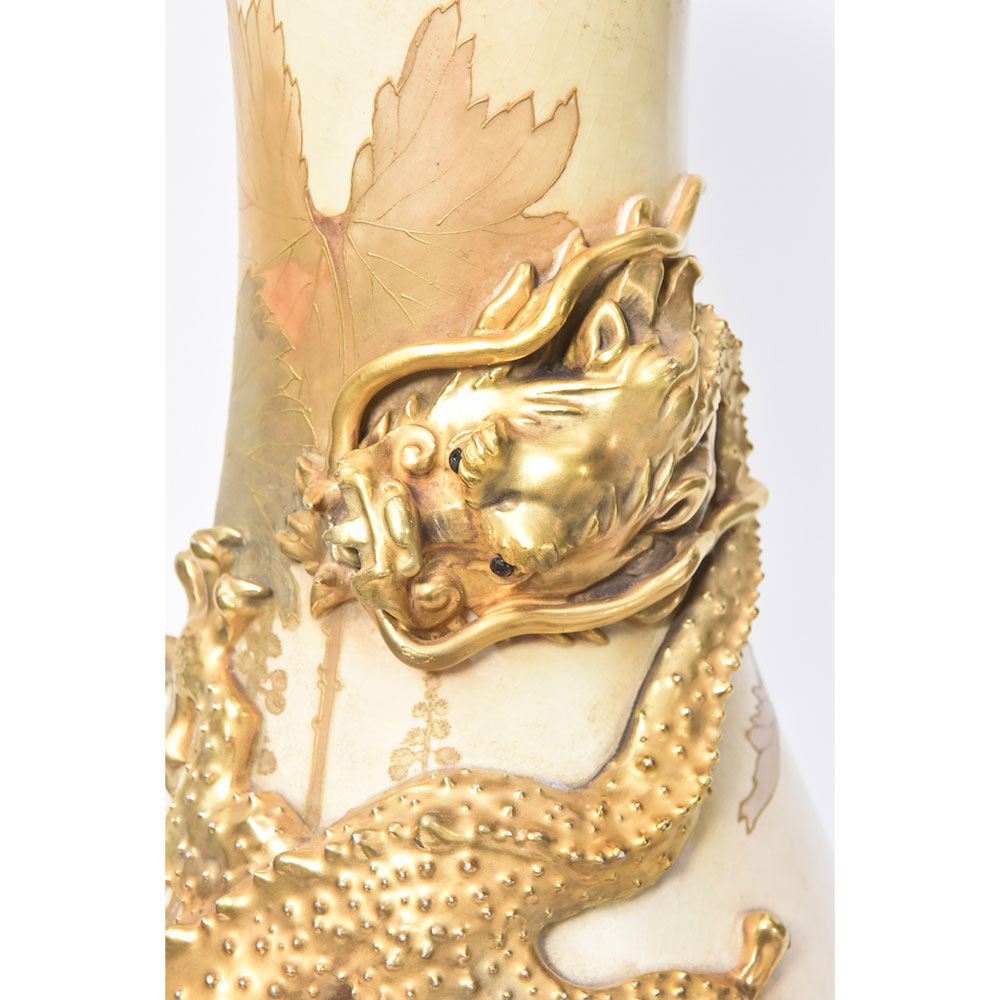
Golden Dragon Vase detail
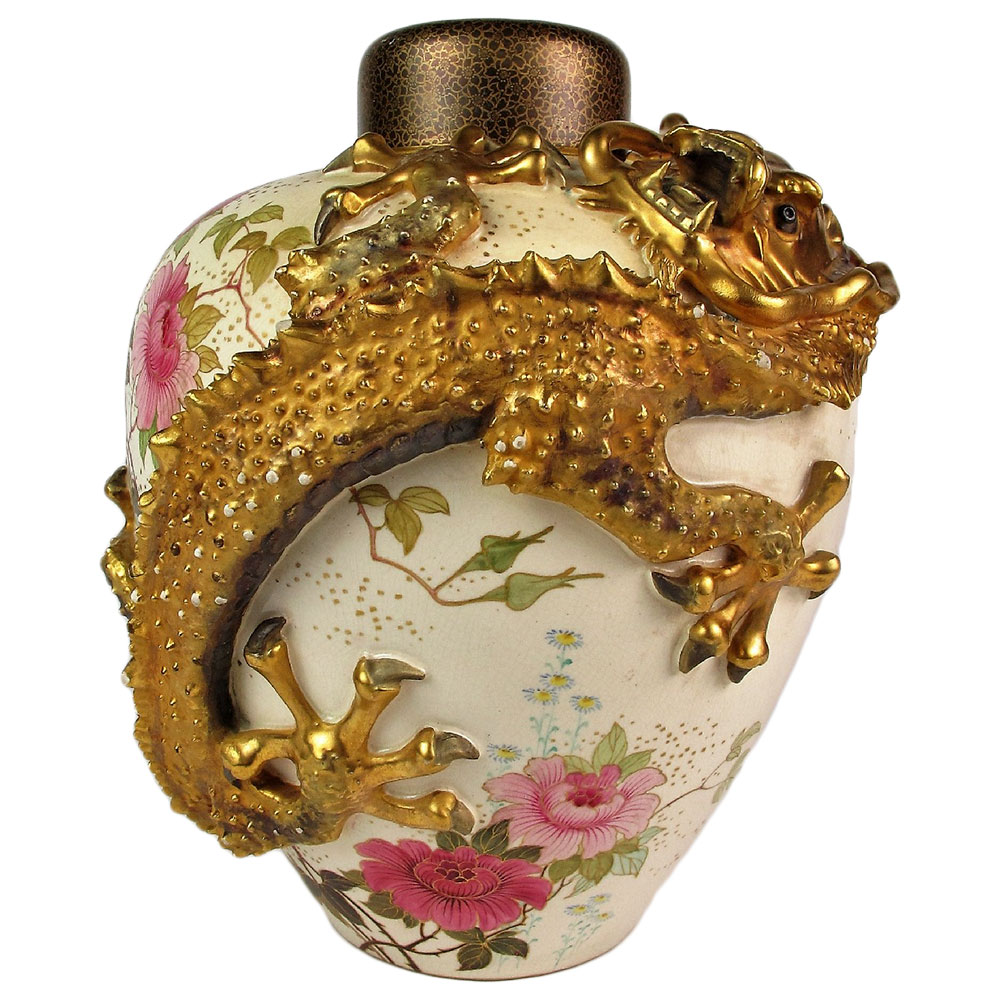
Golden Dragon Jar
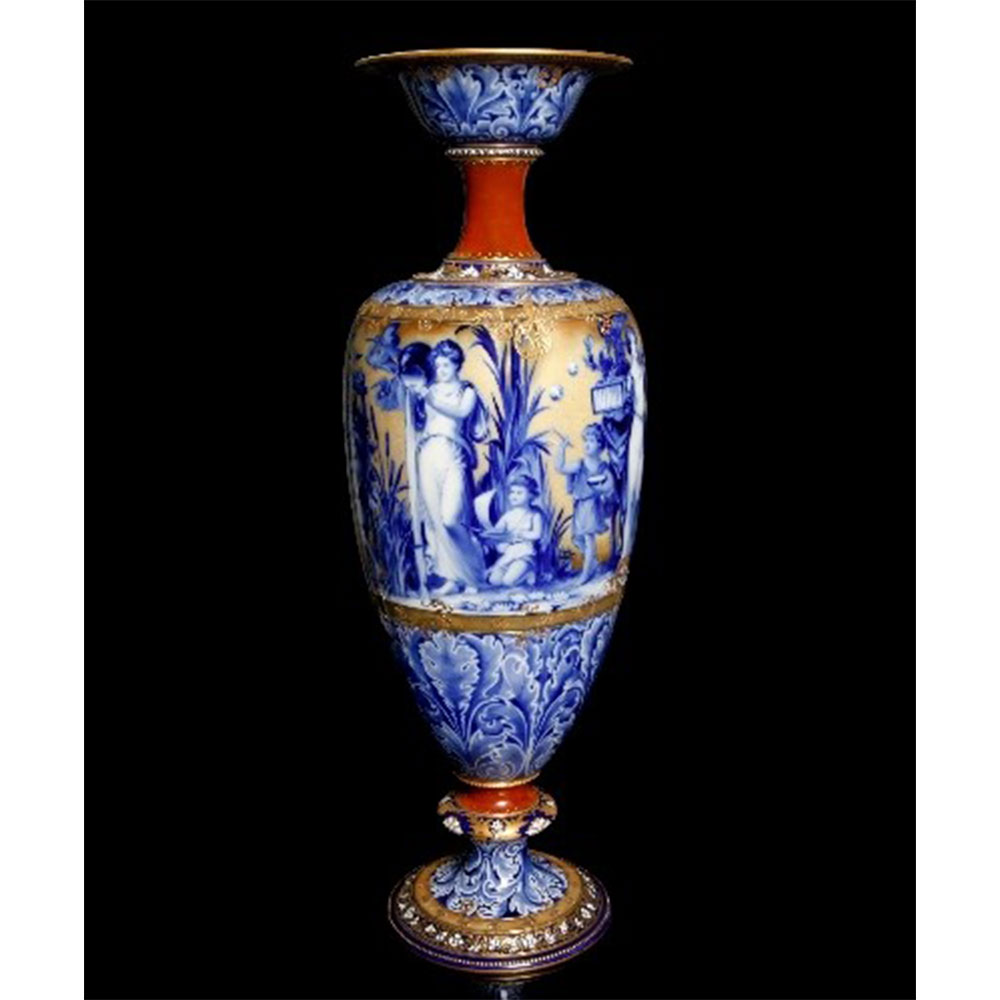
Doulton Flow Blue Exhibition vase by G. White
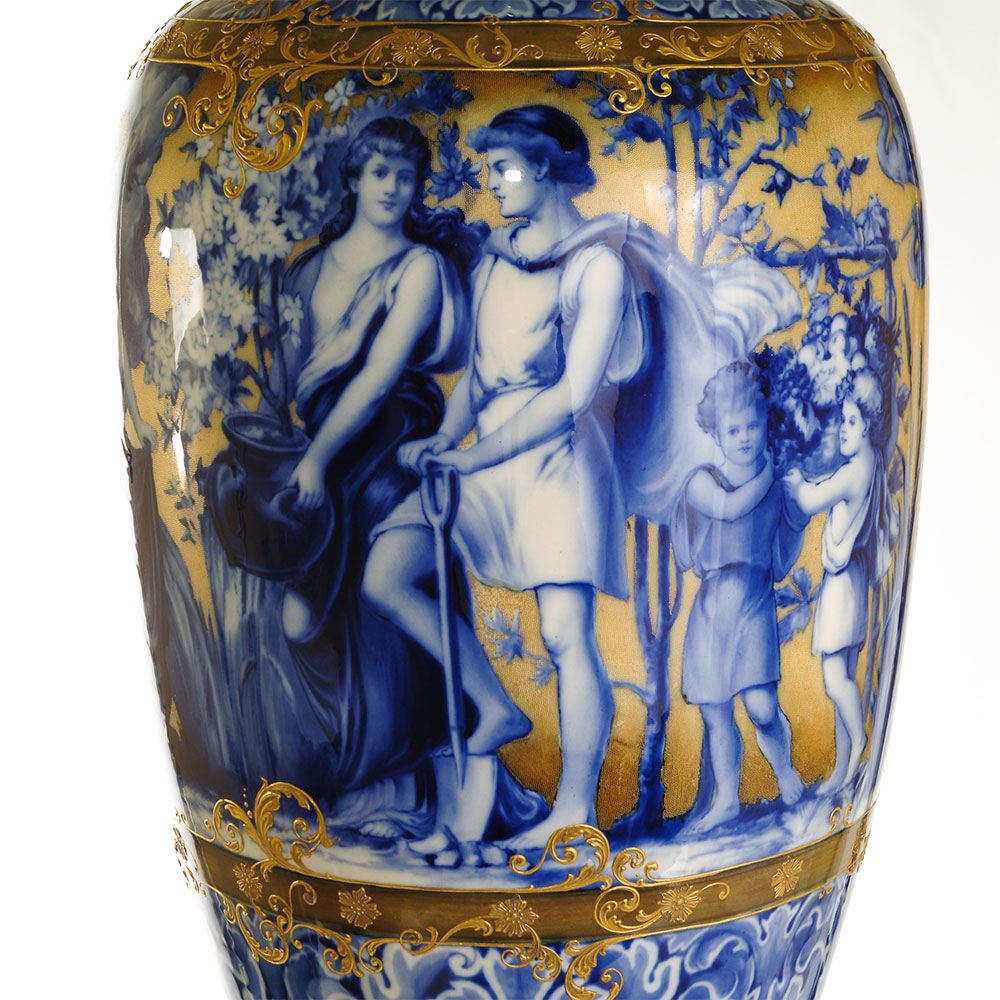
Doulton Flow Blue Exhibition vase detail
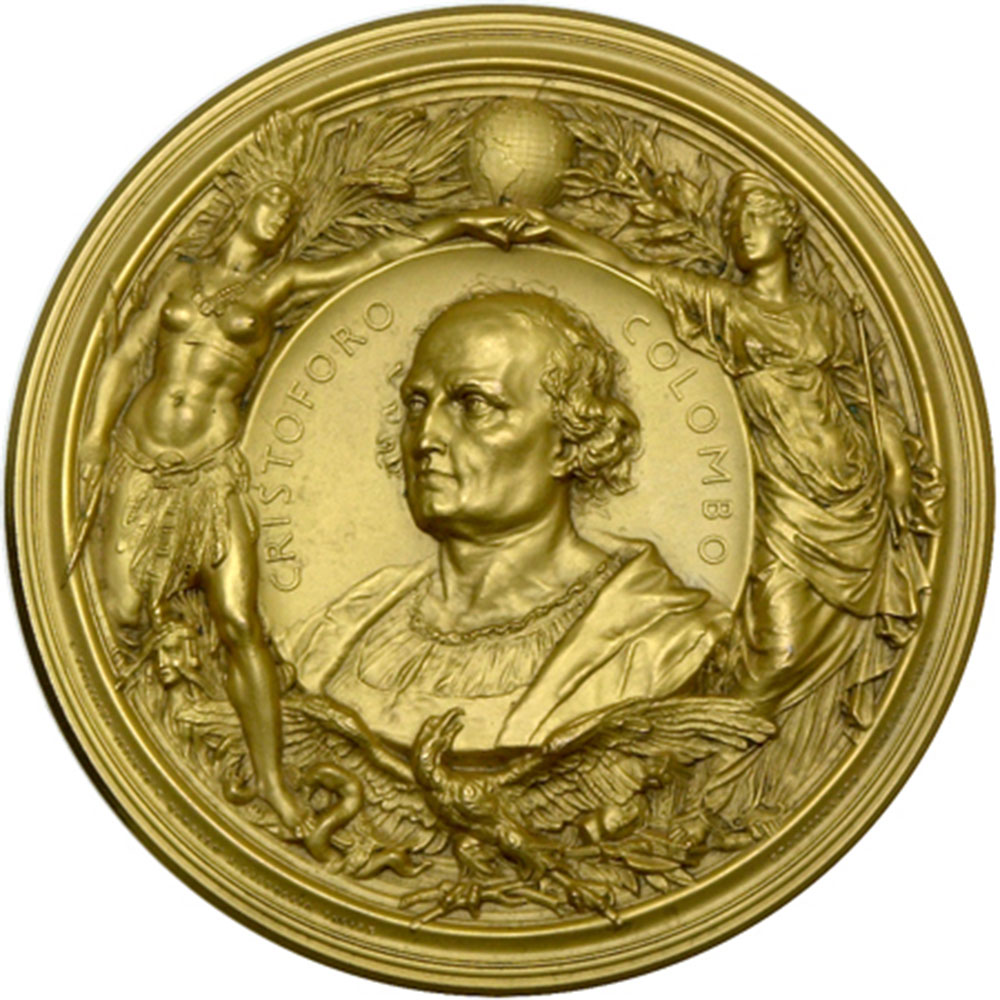
Chicago gold medal
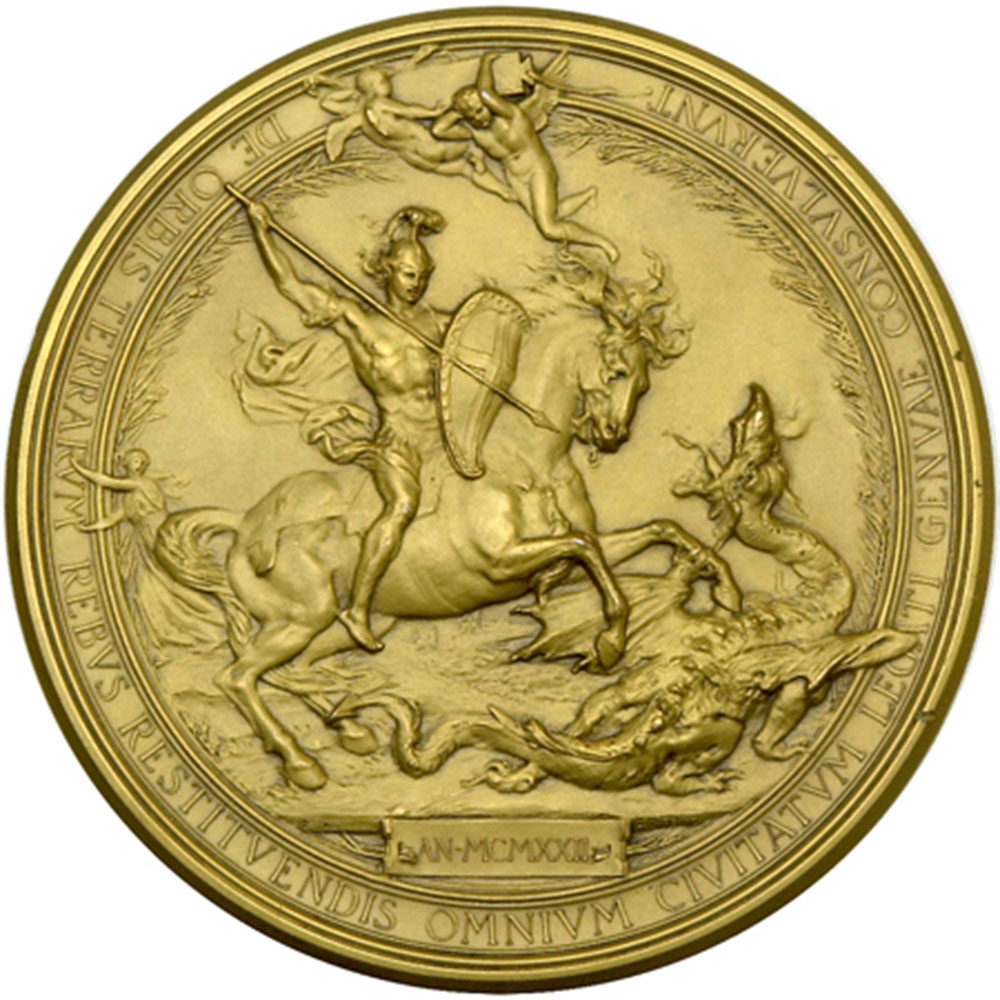
Chicago gold medal
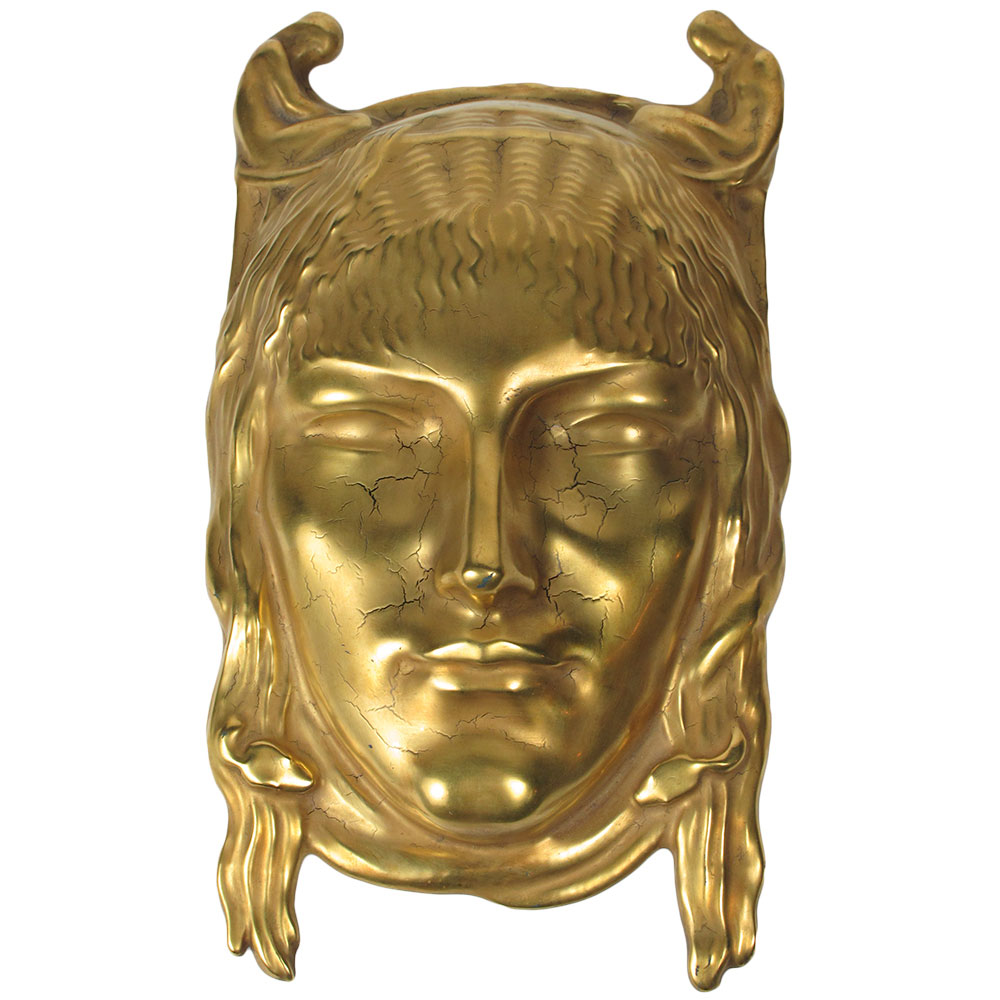
Royal Doulton Fate by R. Garbe
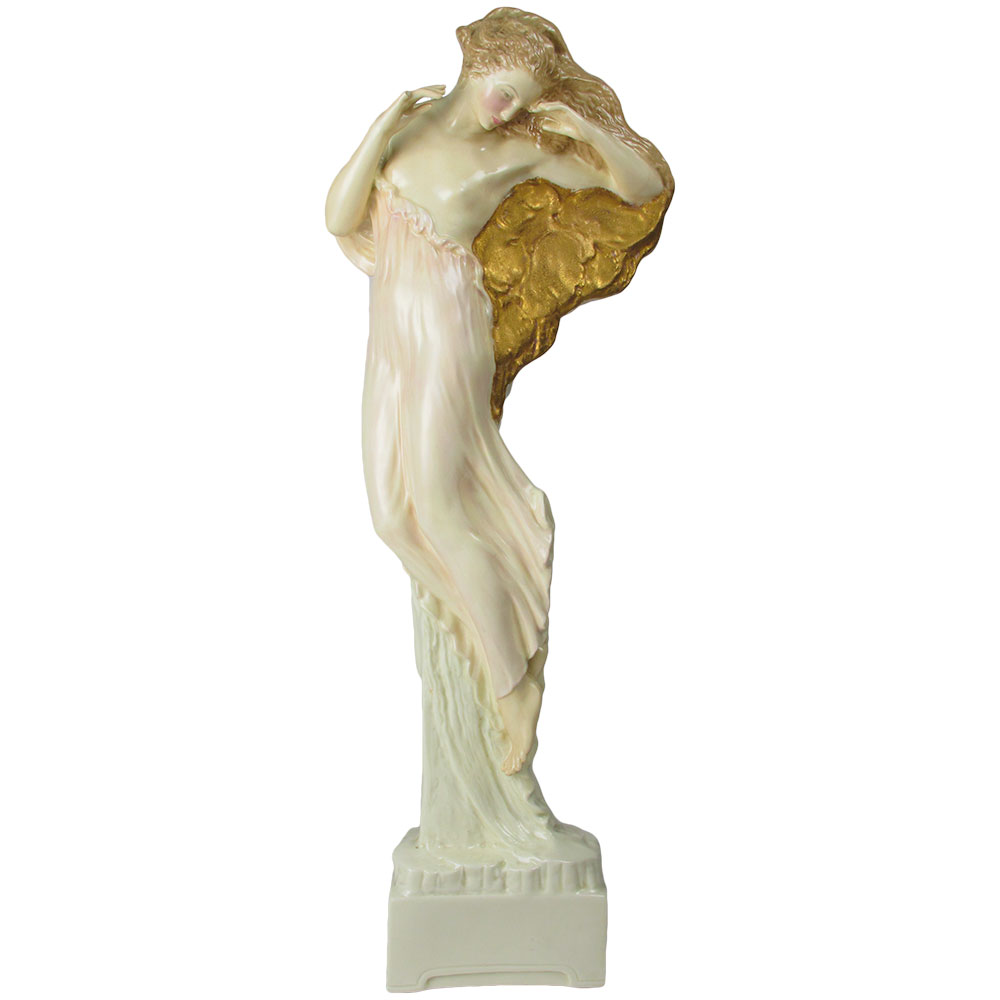
Royal Doulton The Cloud by R. Garbe
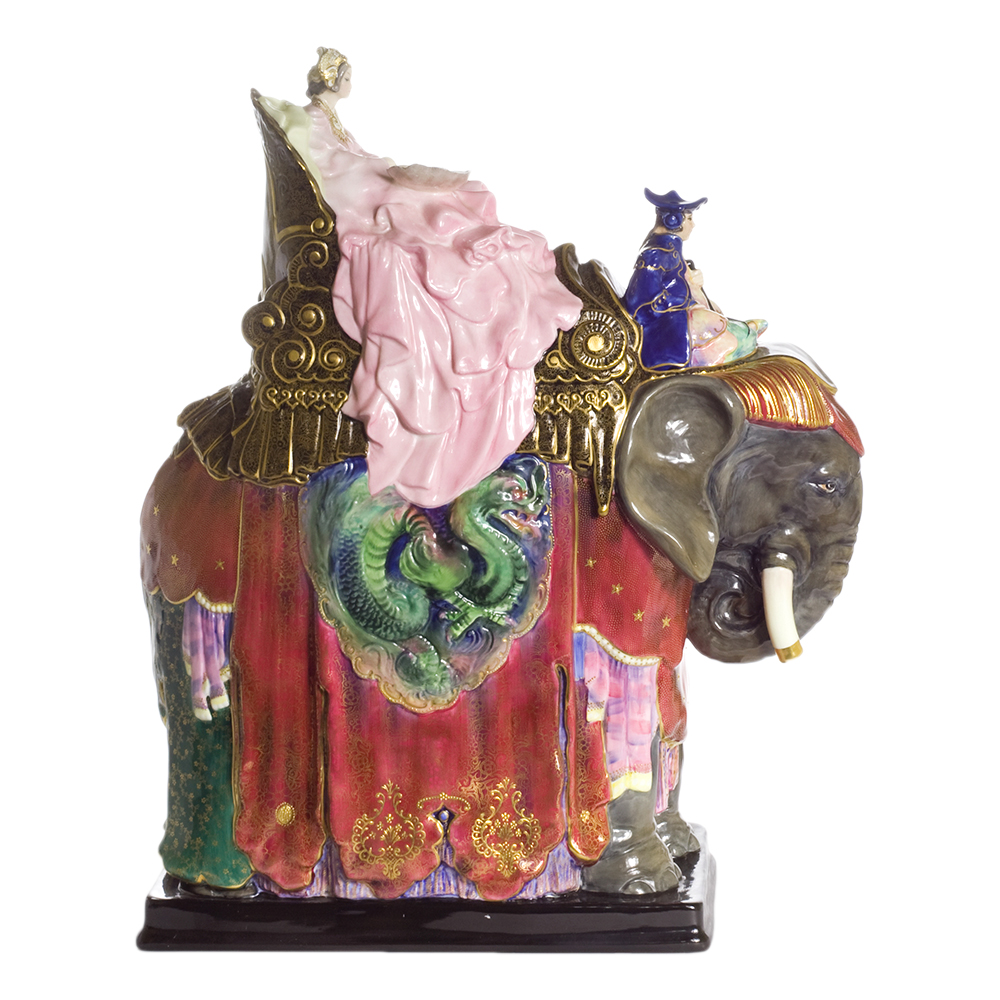
Royal Doulton Princess Badoura HN2081
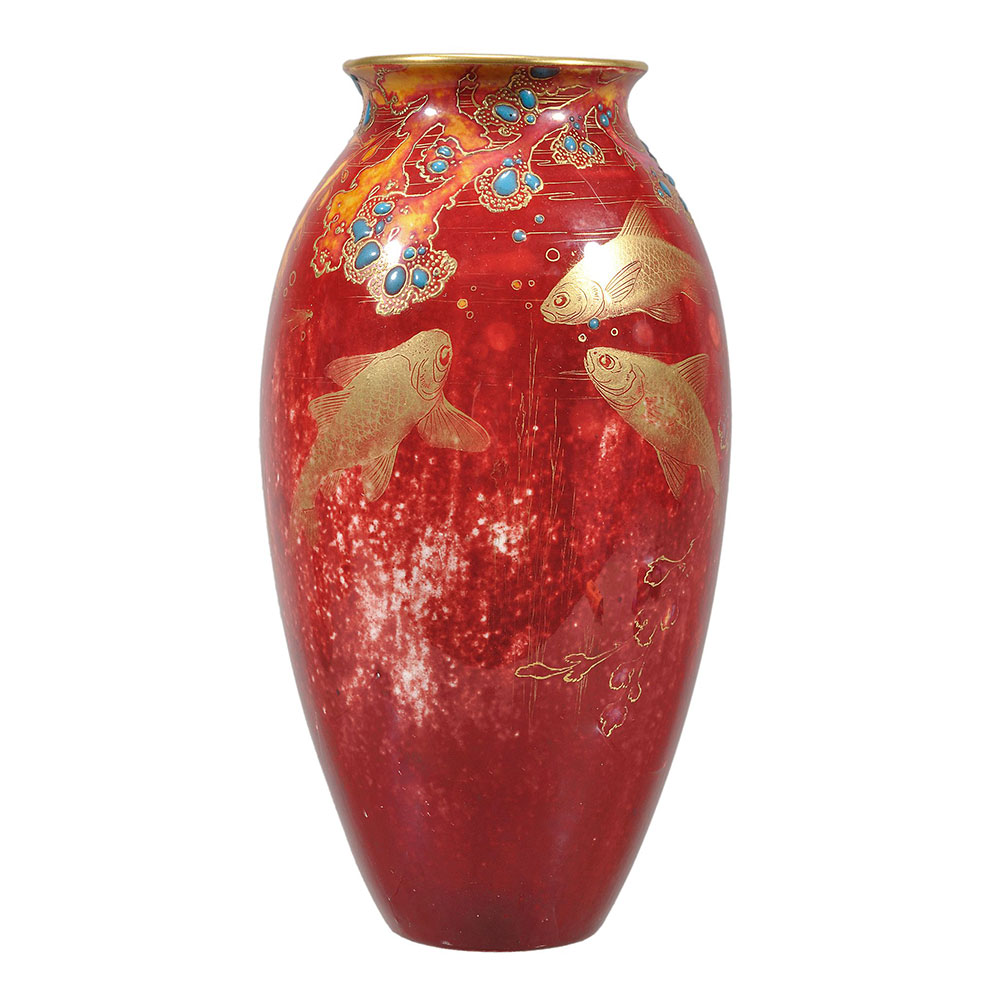
Royal Doulton gold and turquoise Flambé vase
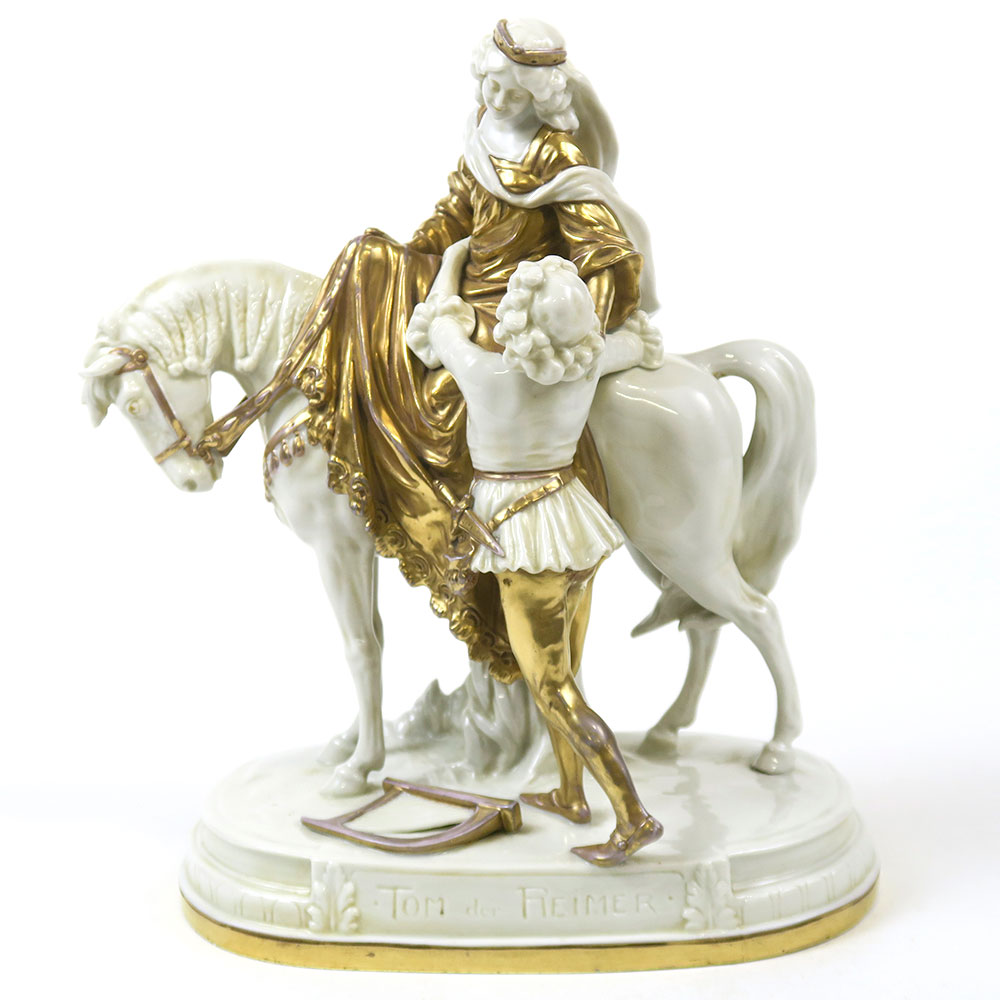
Scheibe Alsbach Maiden on Horseback
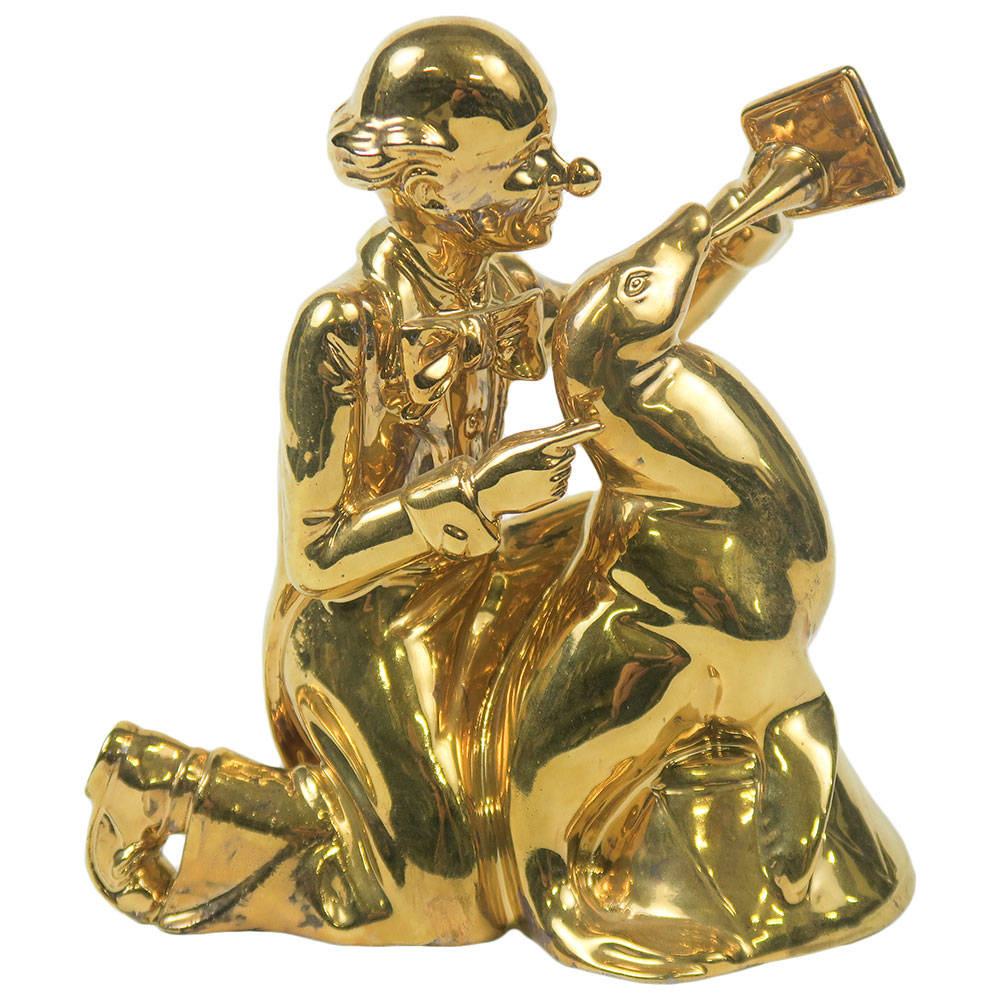
Royal Doulton Partners Prototype
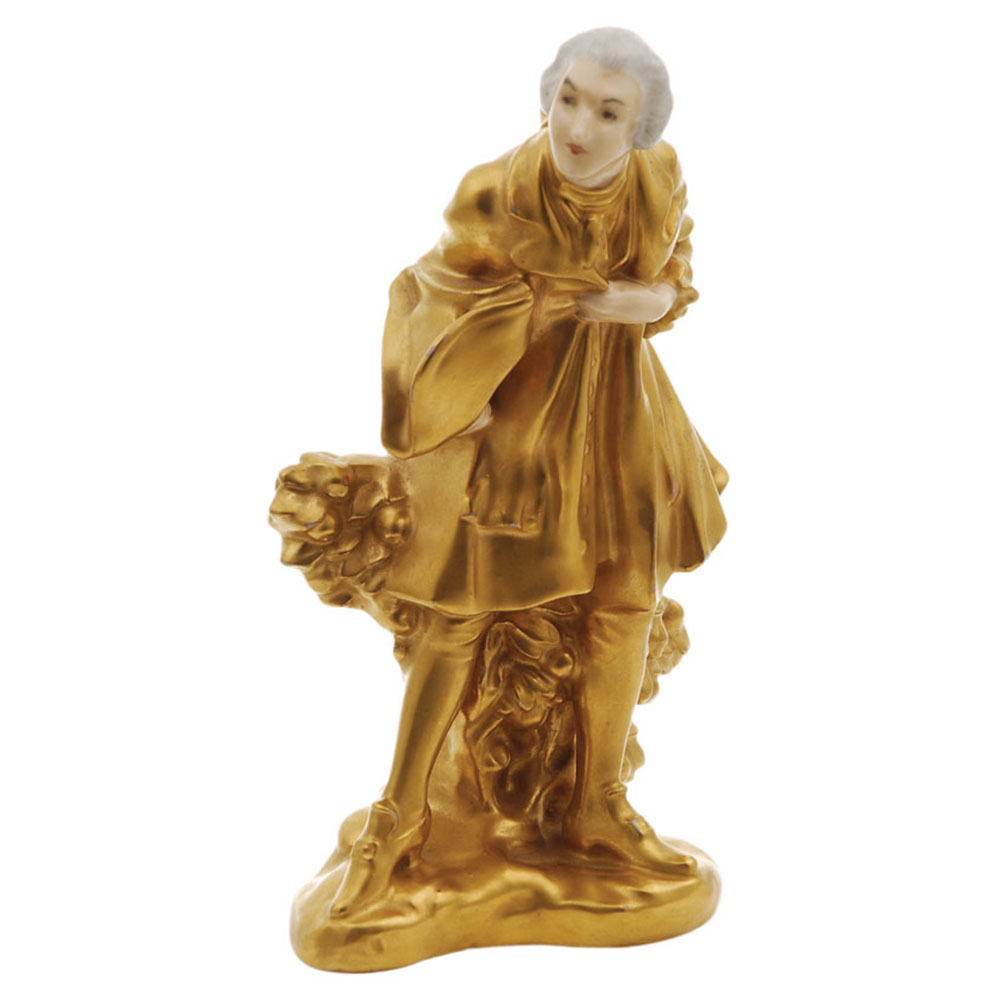
Royal Doulton Masquerade
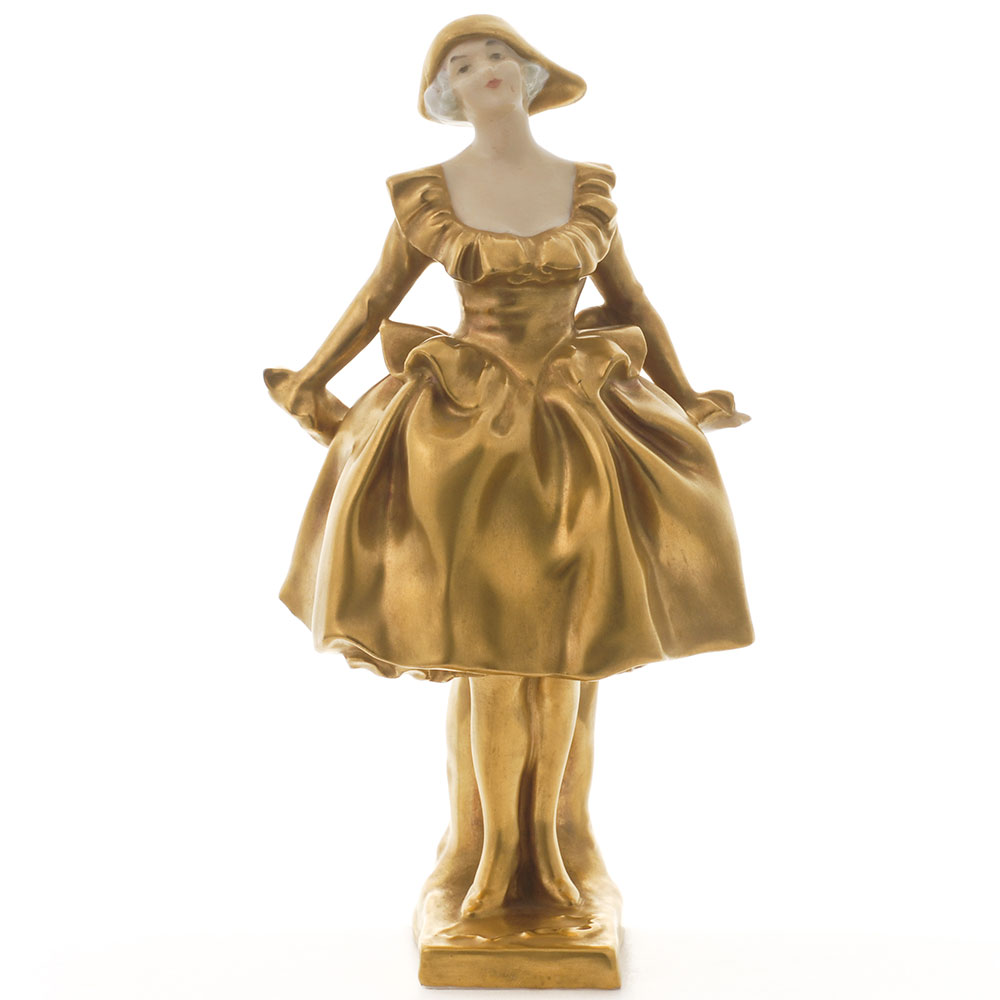
Royal Doulton Harlequinade
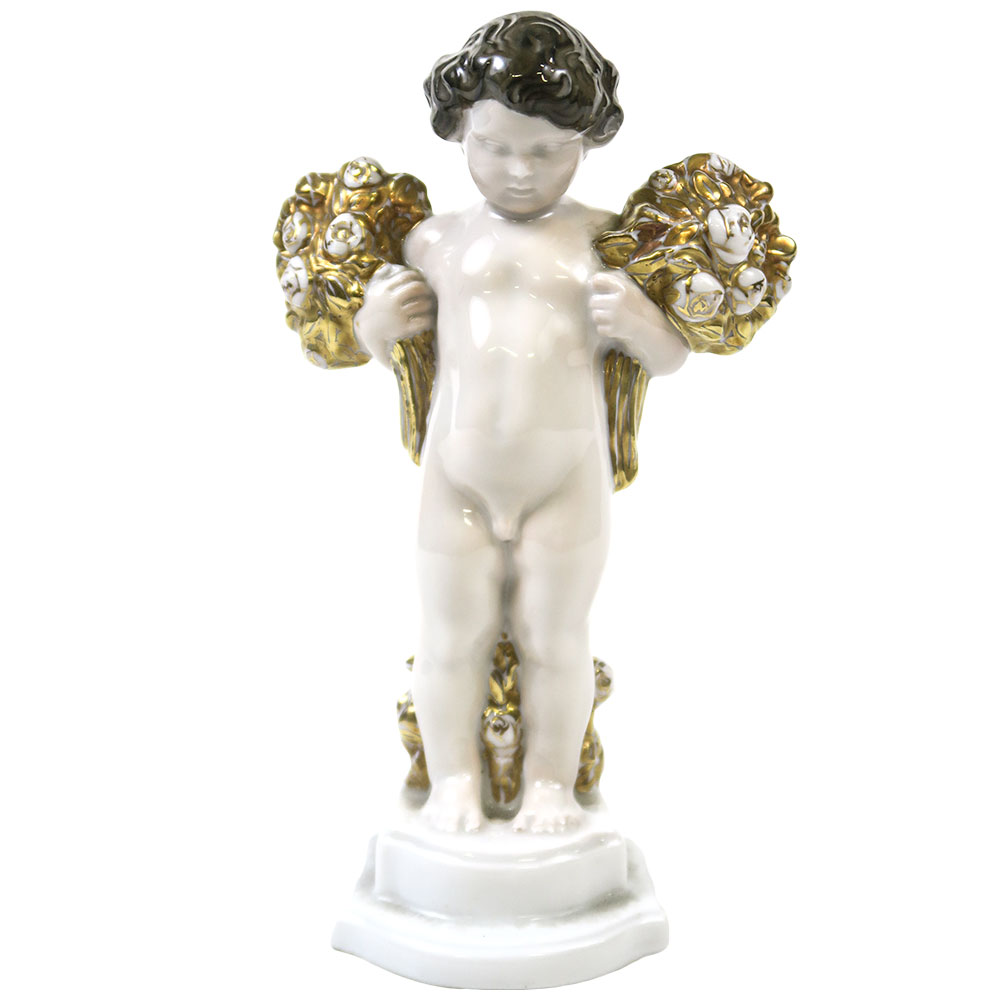
Rosenthal Congratulations
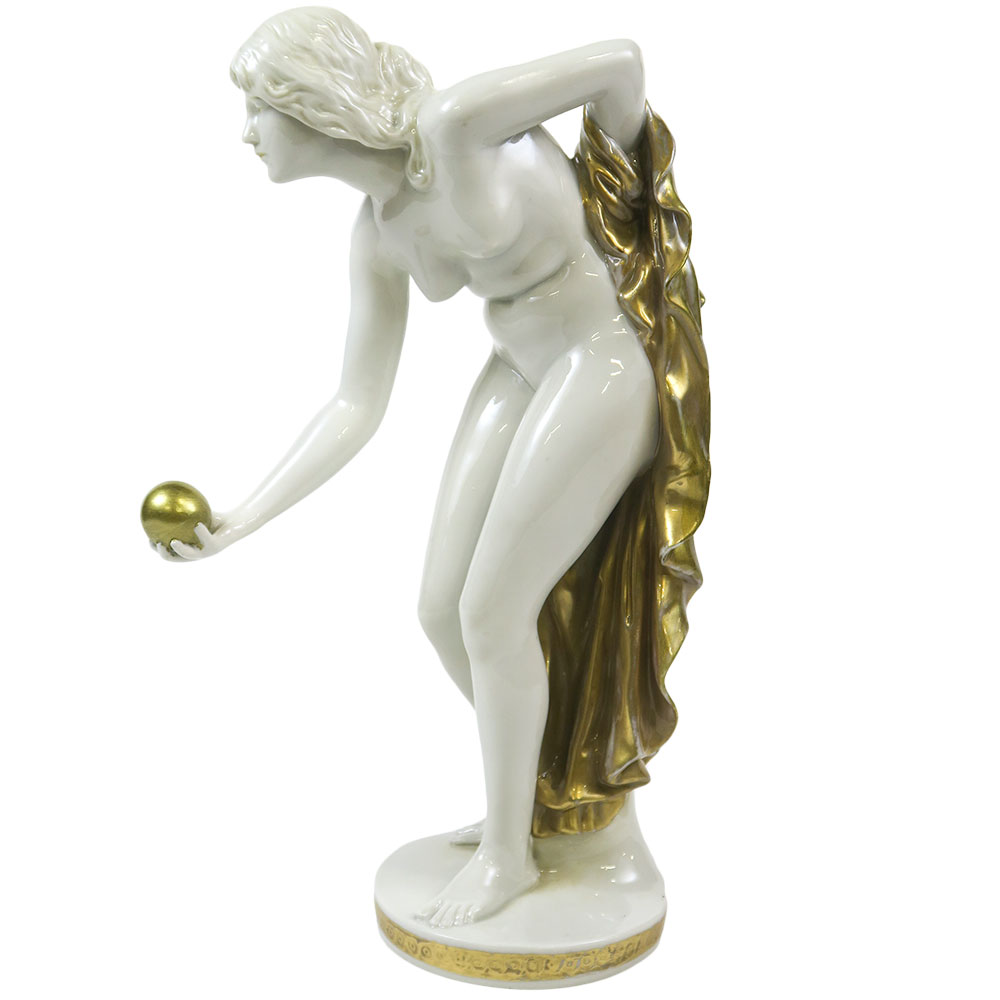
Scheibe Alsbach Bowler
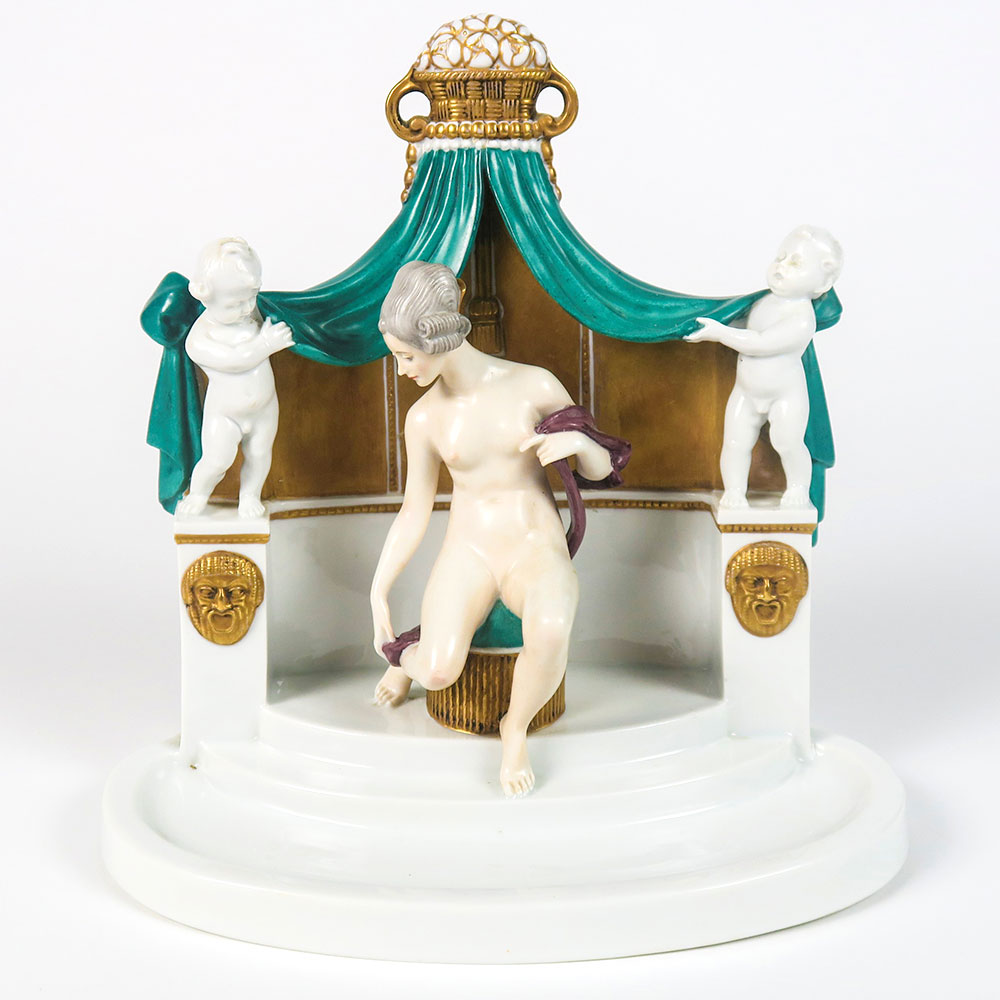
Rosenthal Venus Bathing
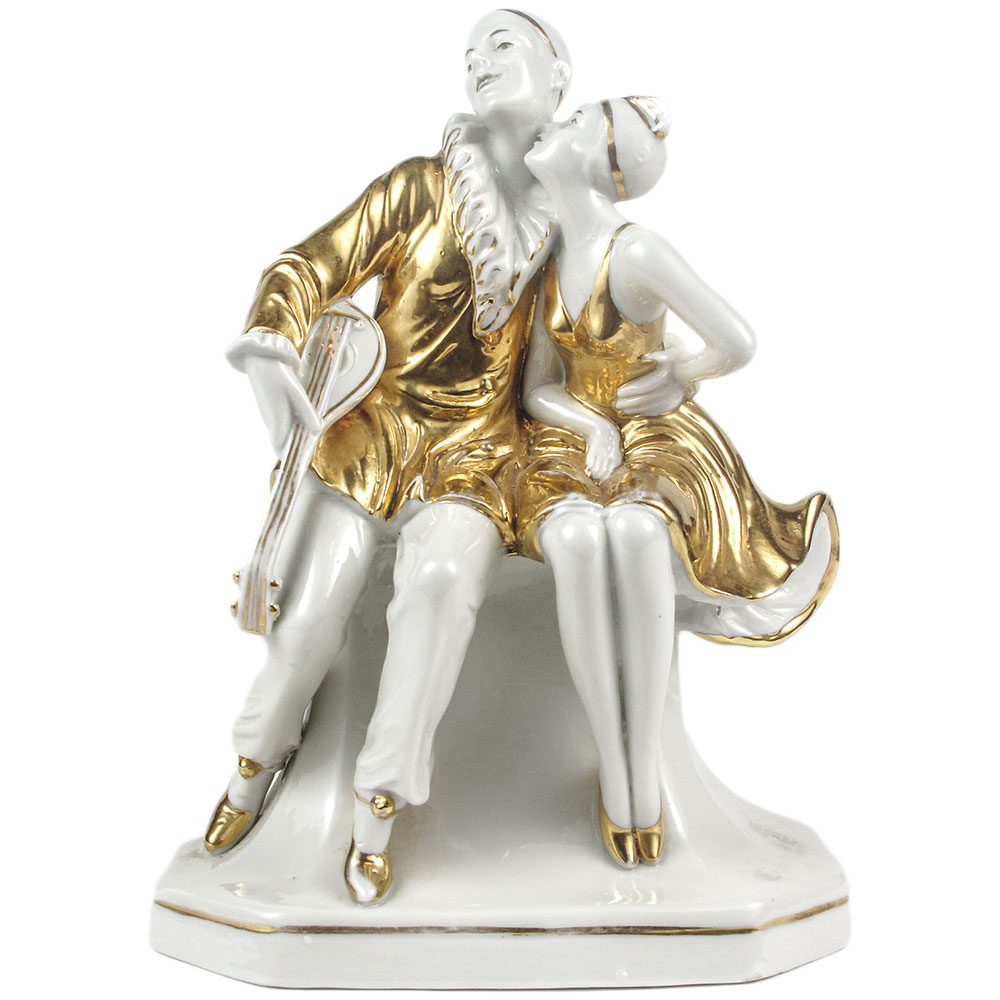
German Pierrot & Columbine
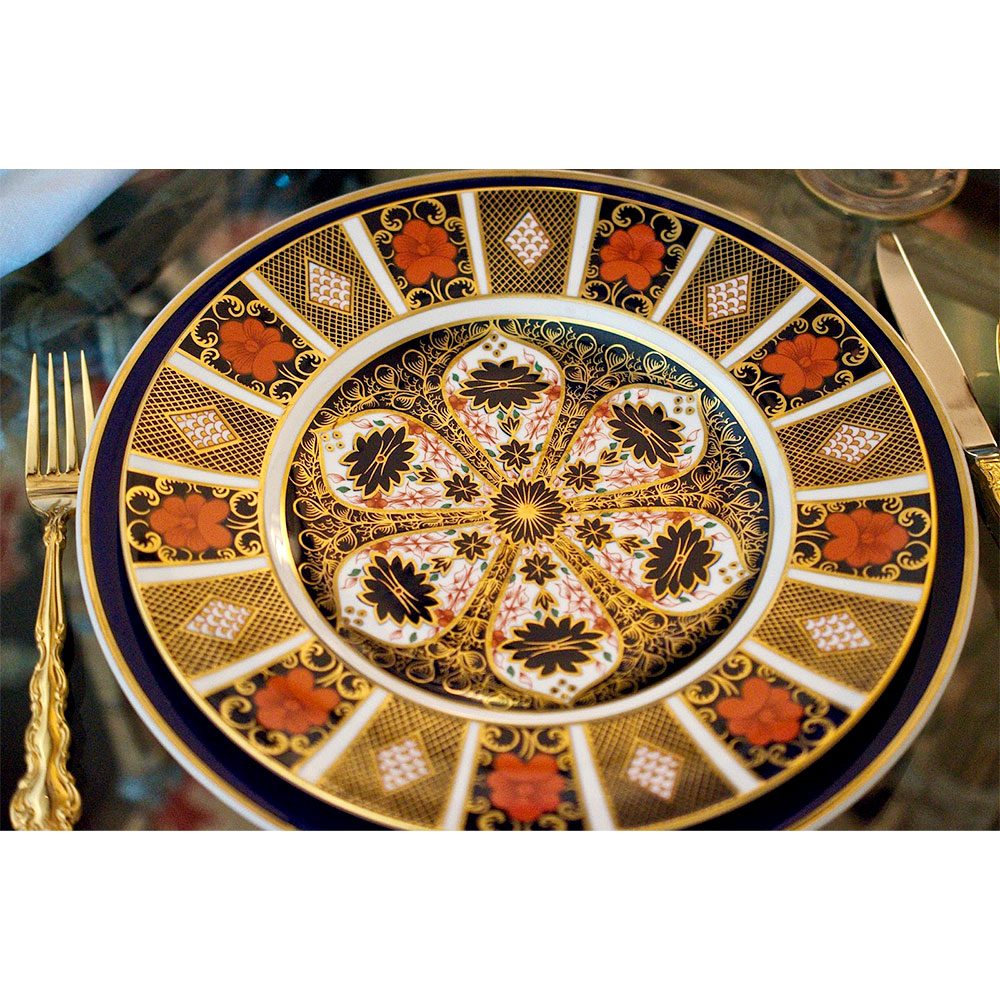
Royal Crown Derby Imari
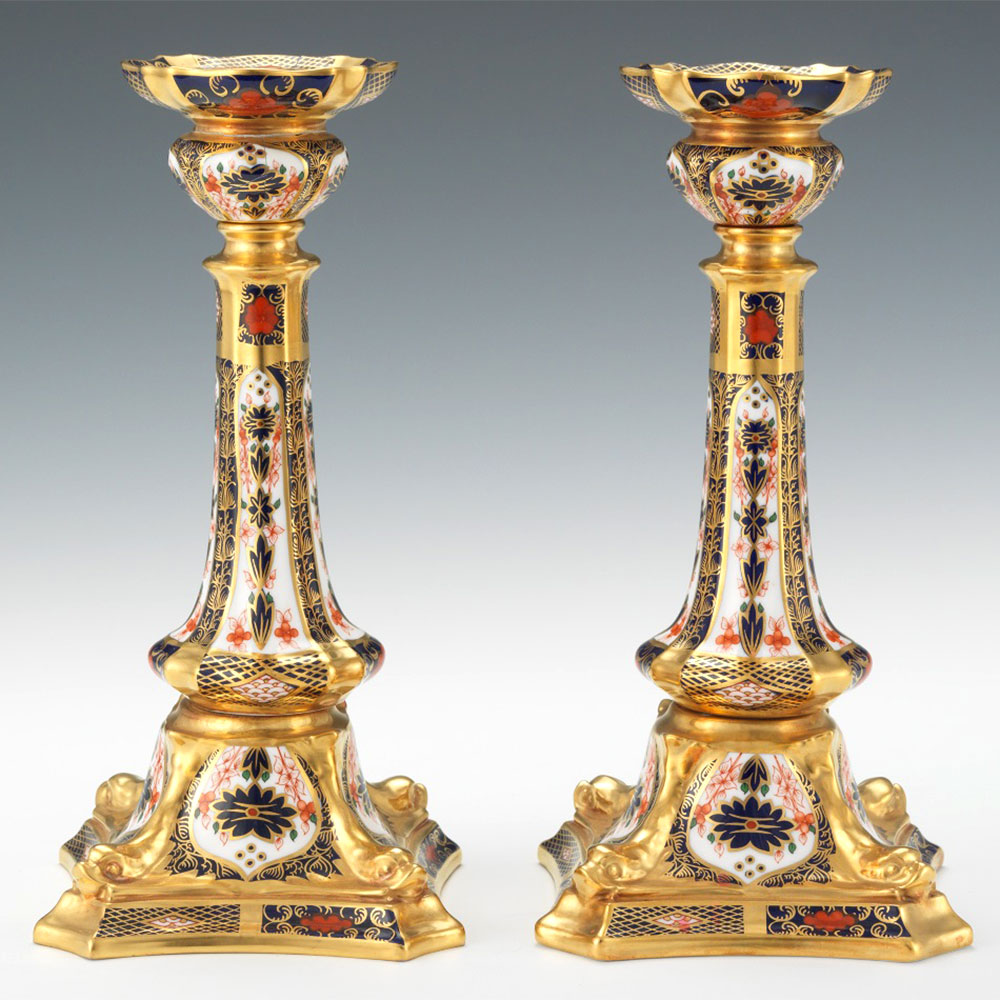
Royal Crown Derby Imari Candlesticks
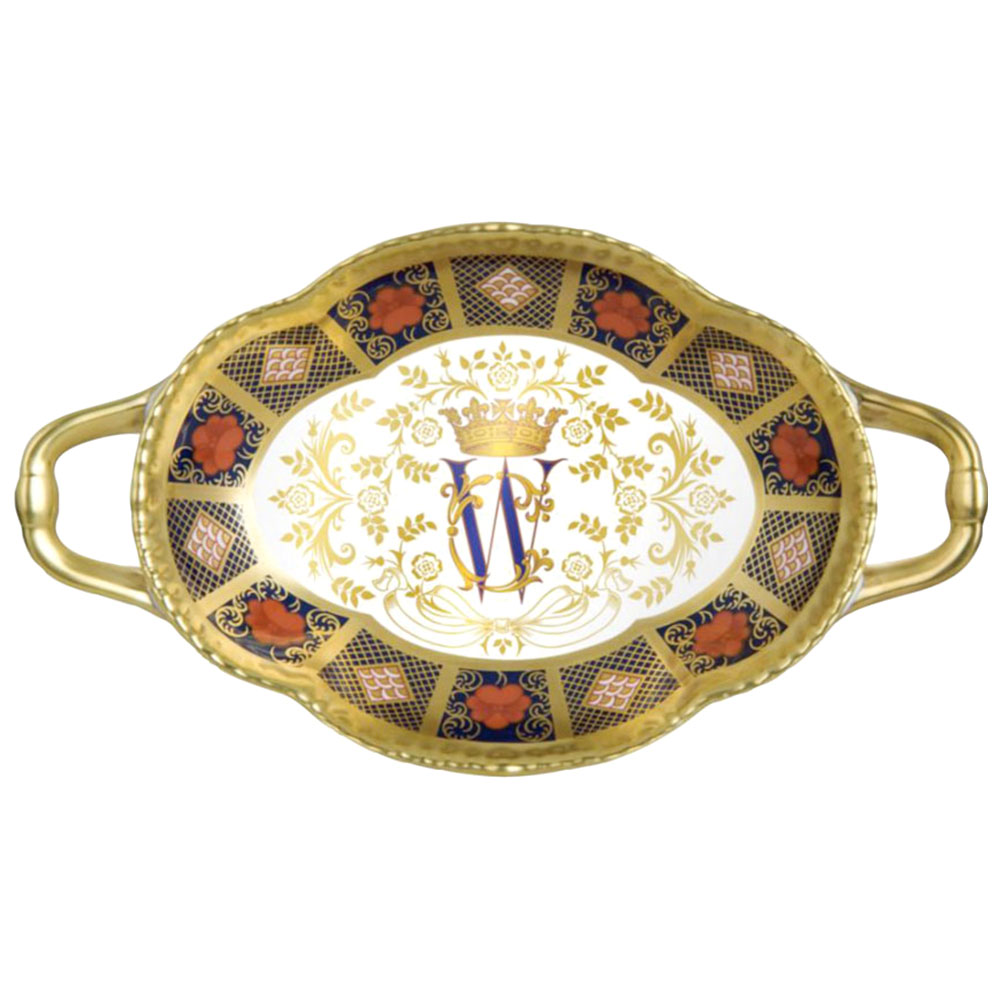
Royal Crown Derby Royal Wedding
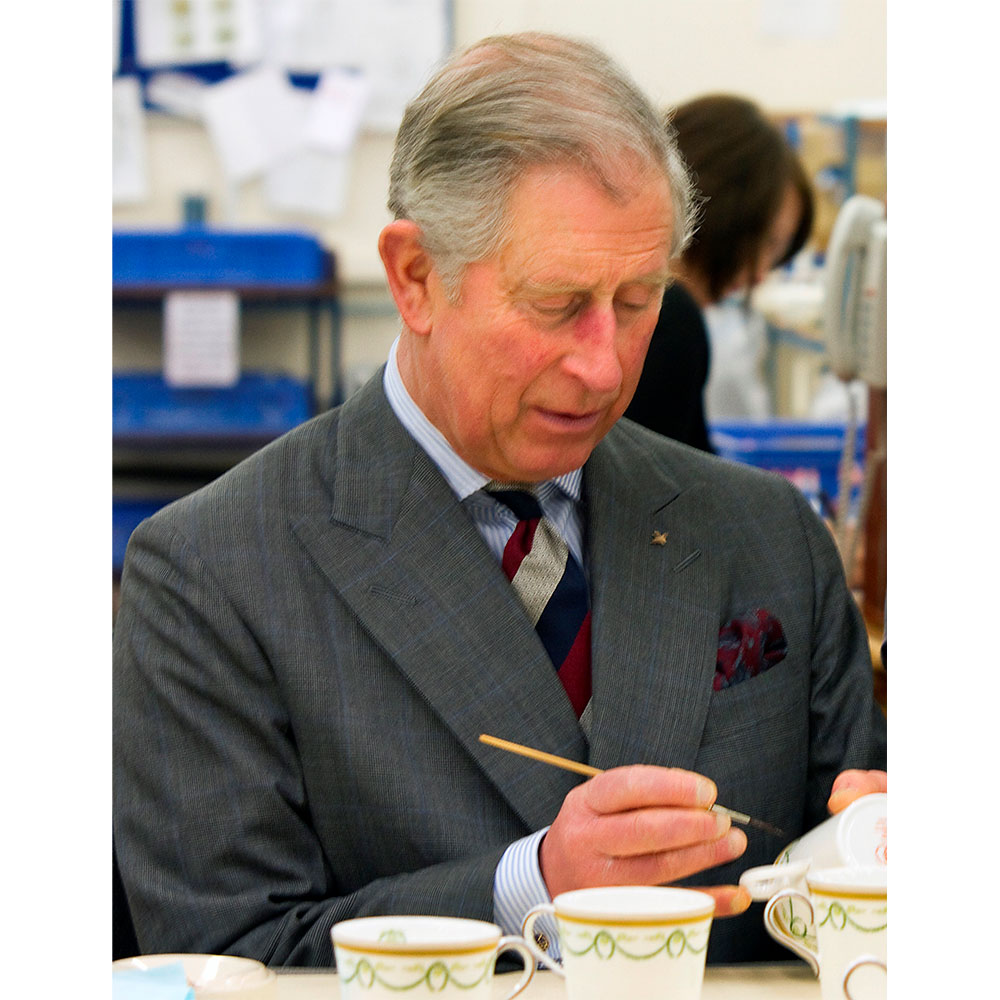
Prince Charles gilding a plate at Royal Crown Derby
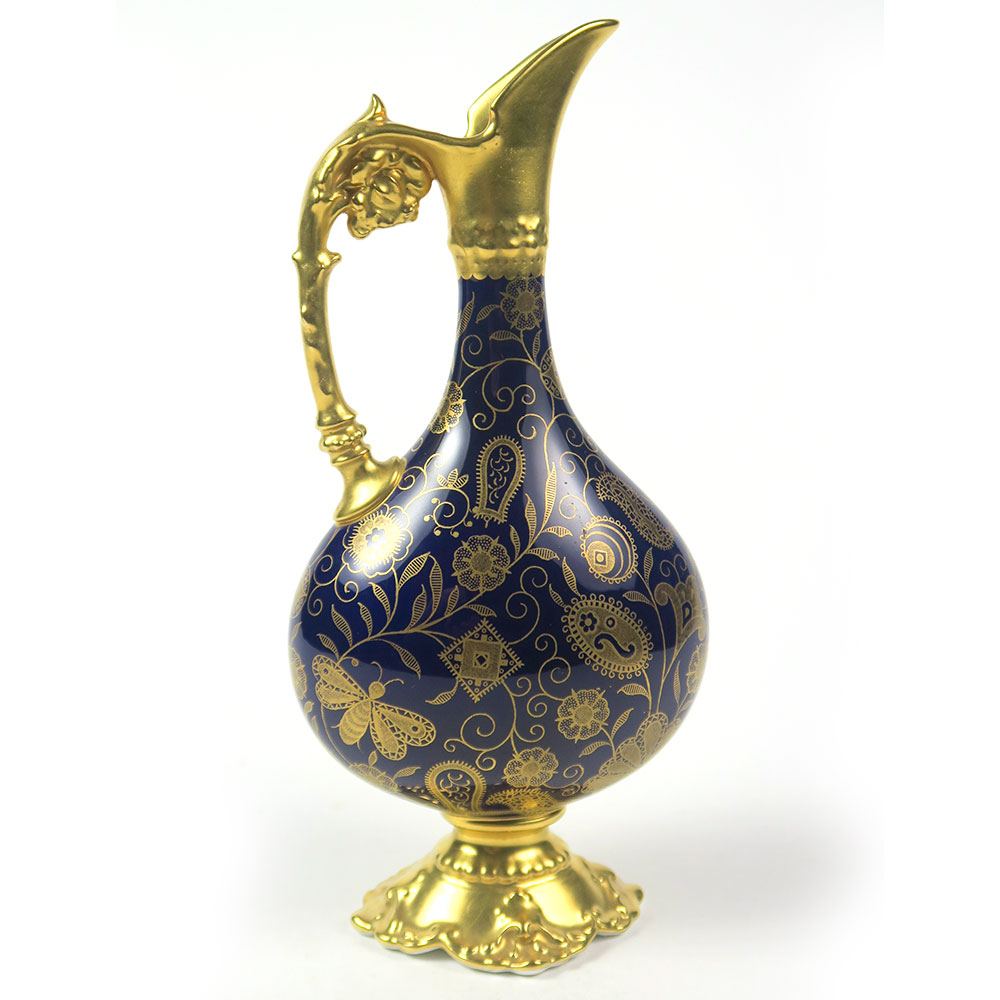
Royal Crown Derby ewer
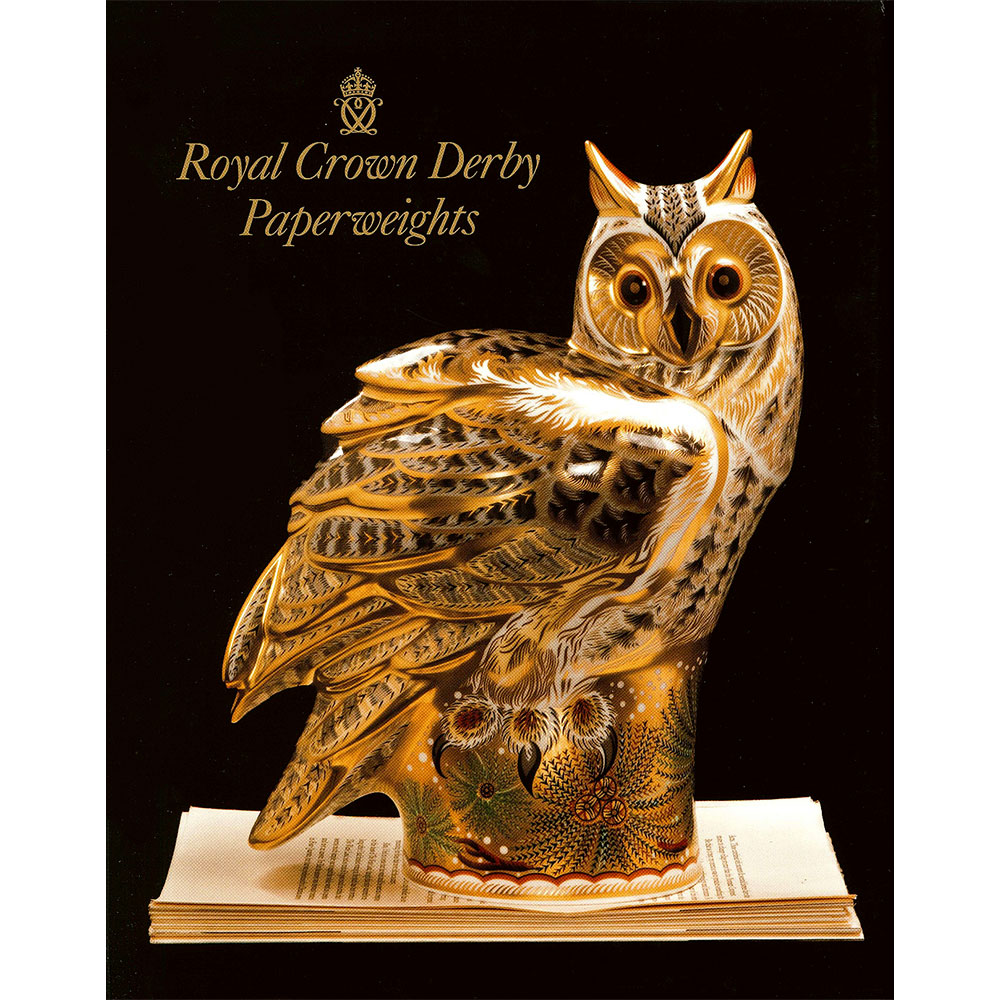
Royal Crown Derby Paperweights book
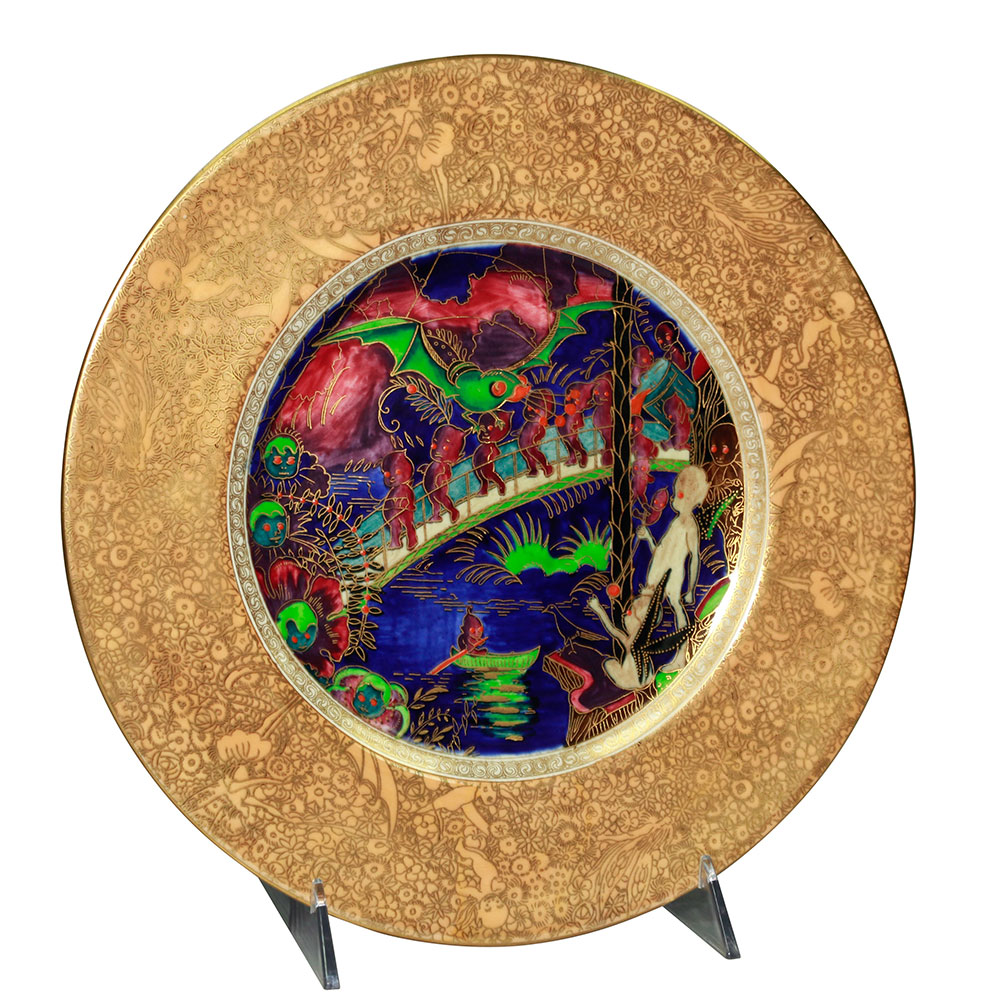
Wedgwood Fairyland Lustre Imps on a Bridge
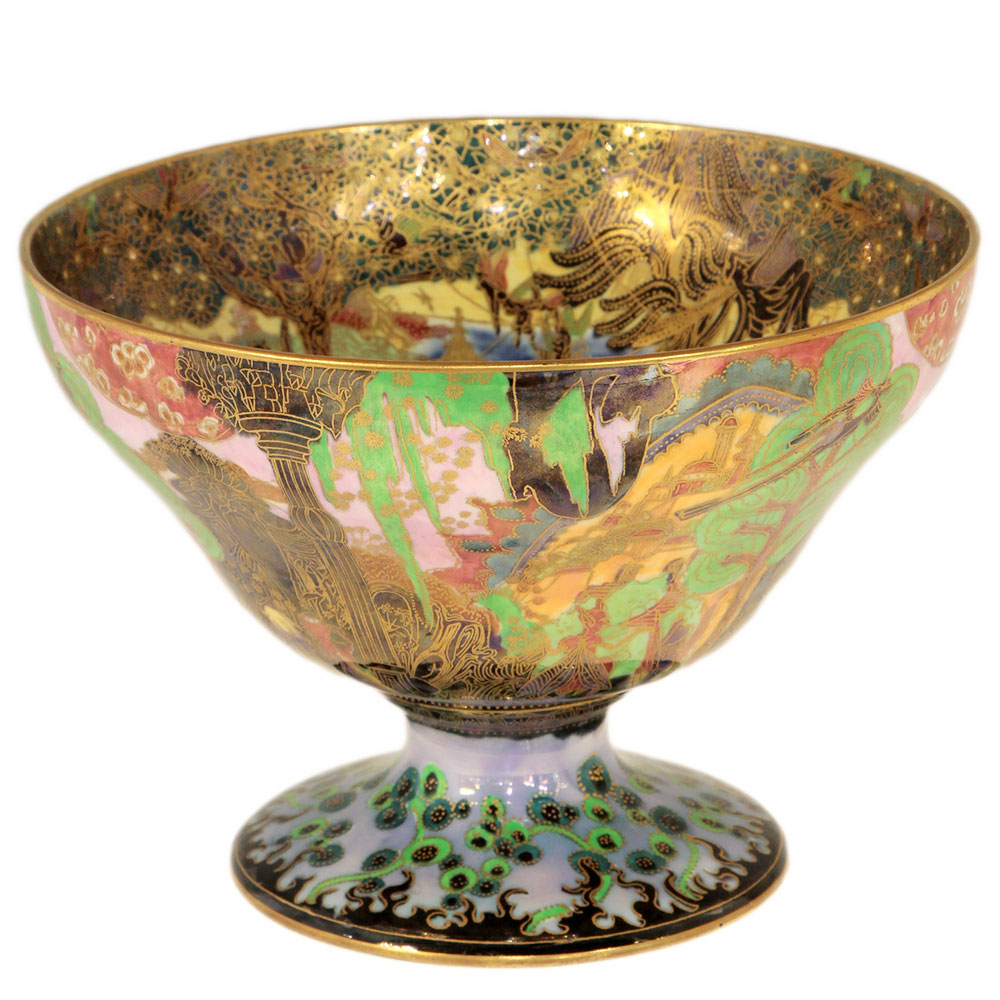
Wedgwood Fairyland Lustre Bowl
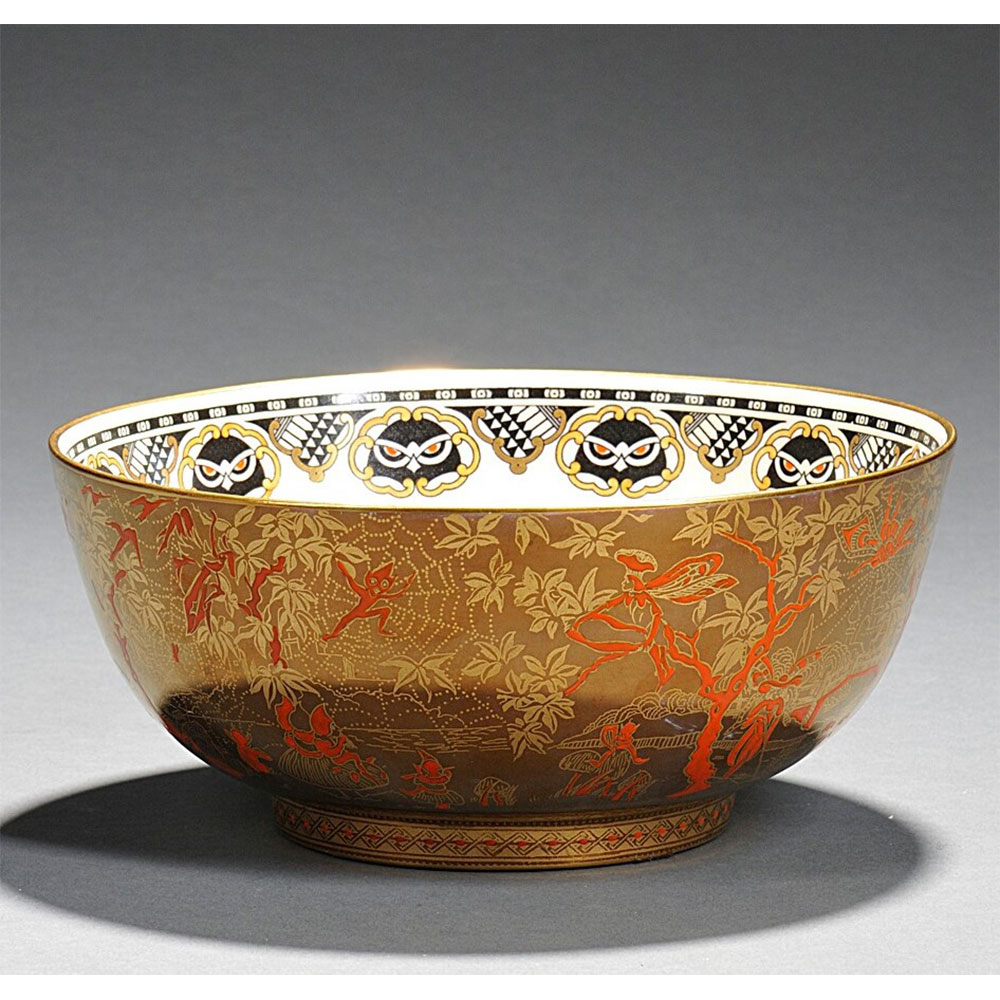
Wedgwood Lustre Coral and Bronze Bowl
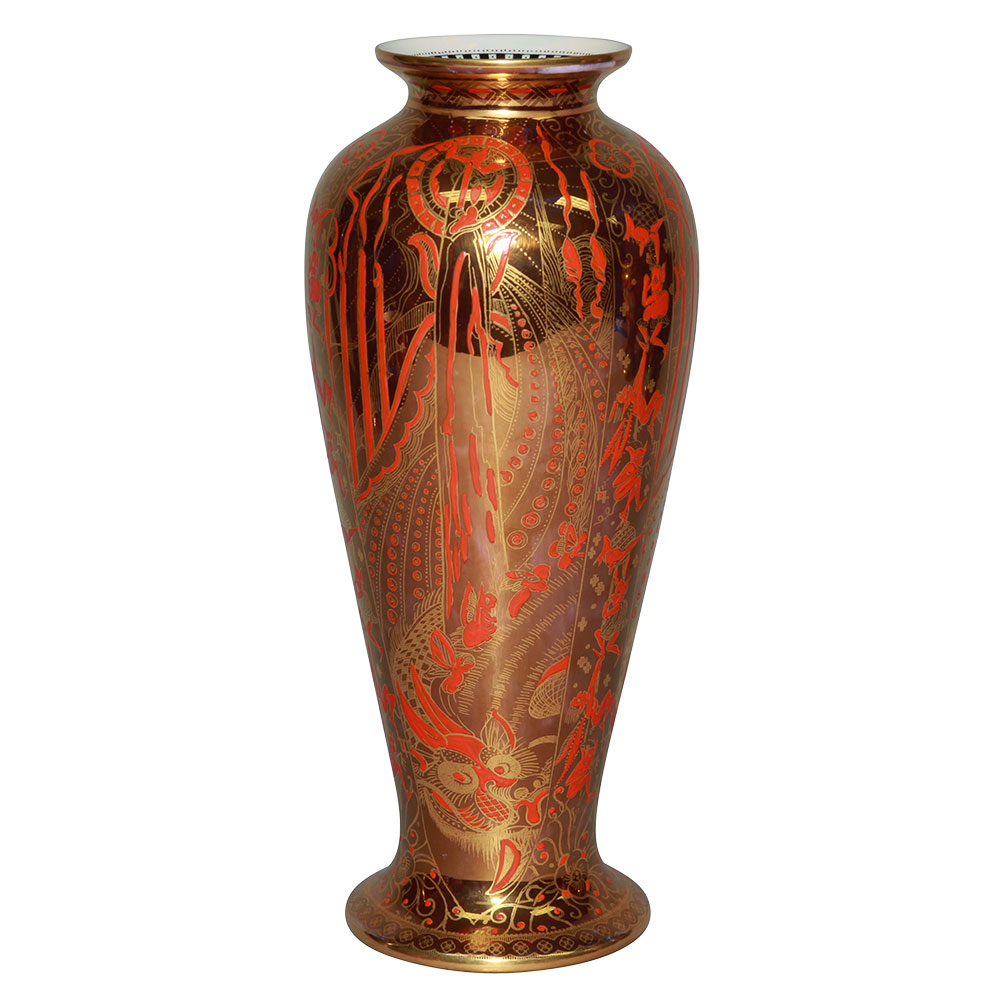
Wedgwood Lustre Coral and Bronze Vase
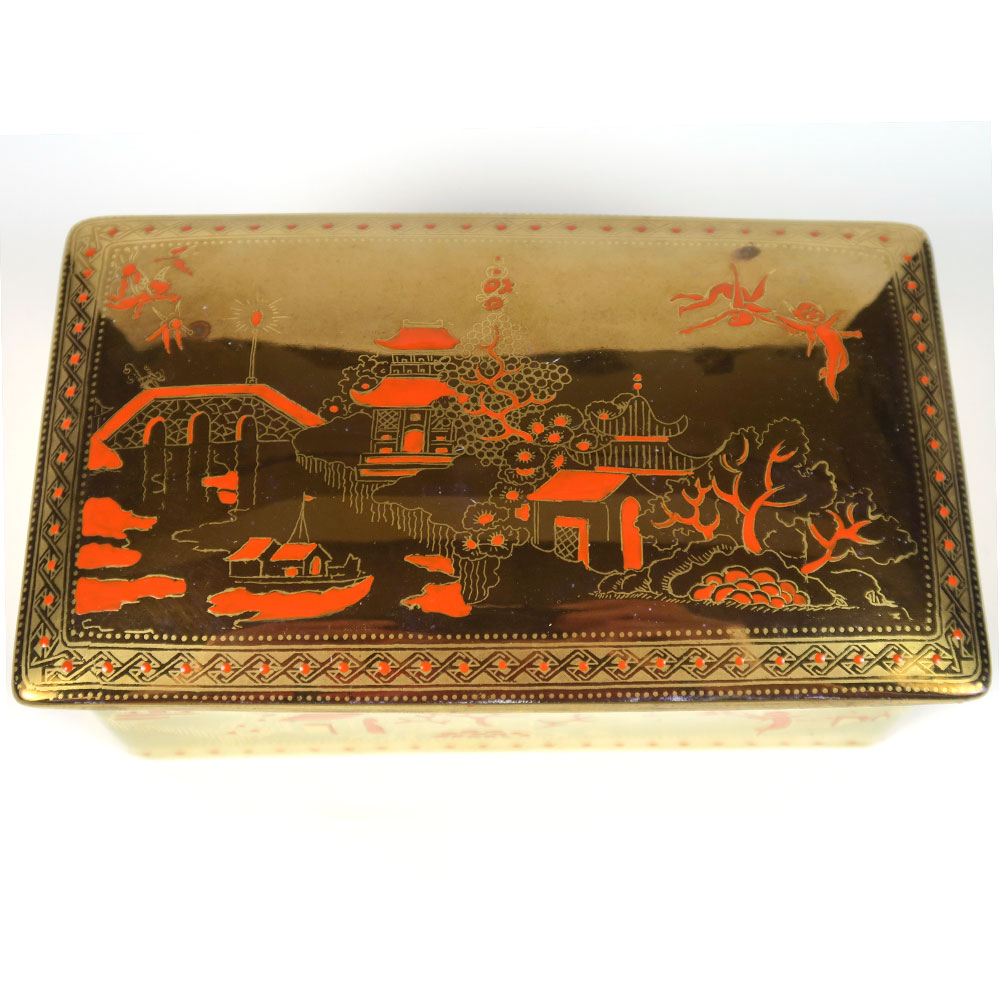
Wedgwood Lustre Coral and Bronze Willow Box
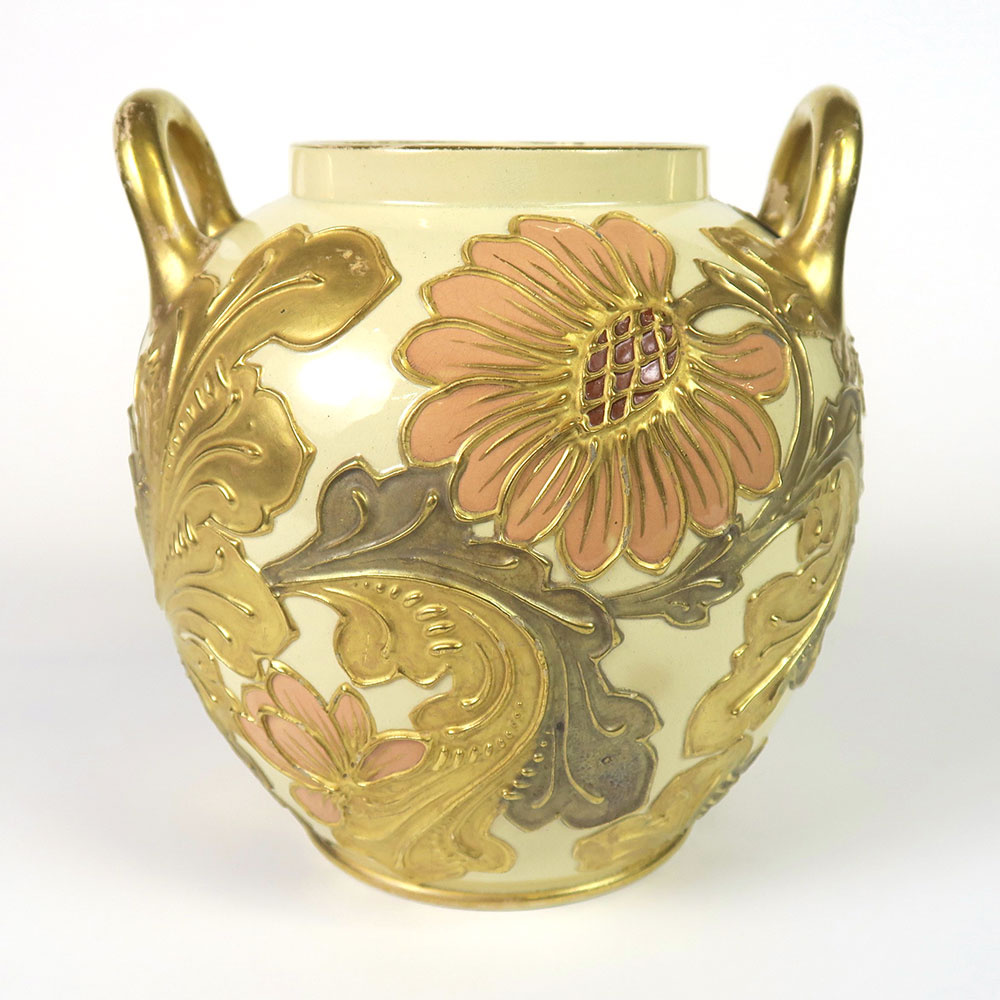
Wedgwood Pot Pourri Jar
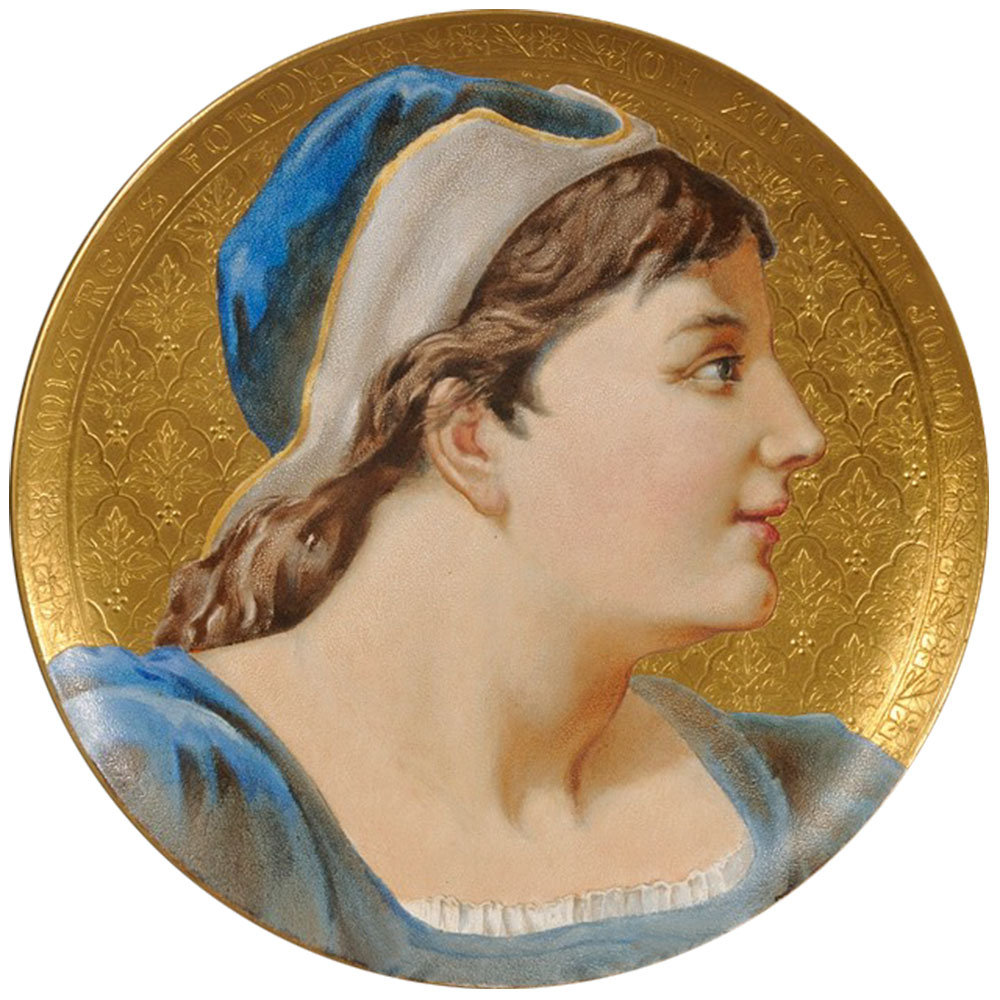
Wedgwood Mistress Ford
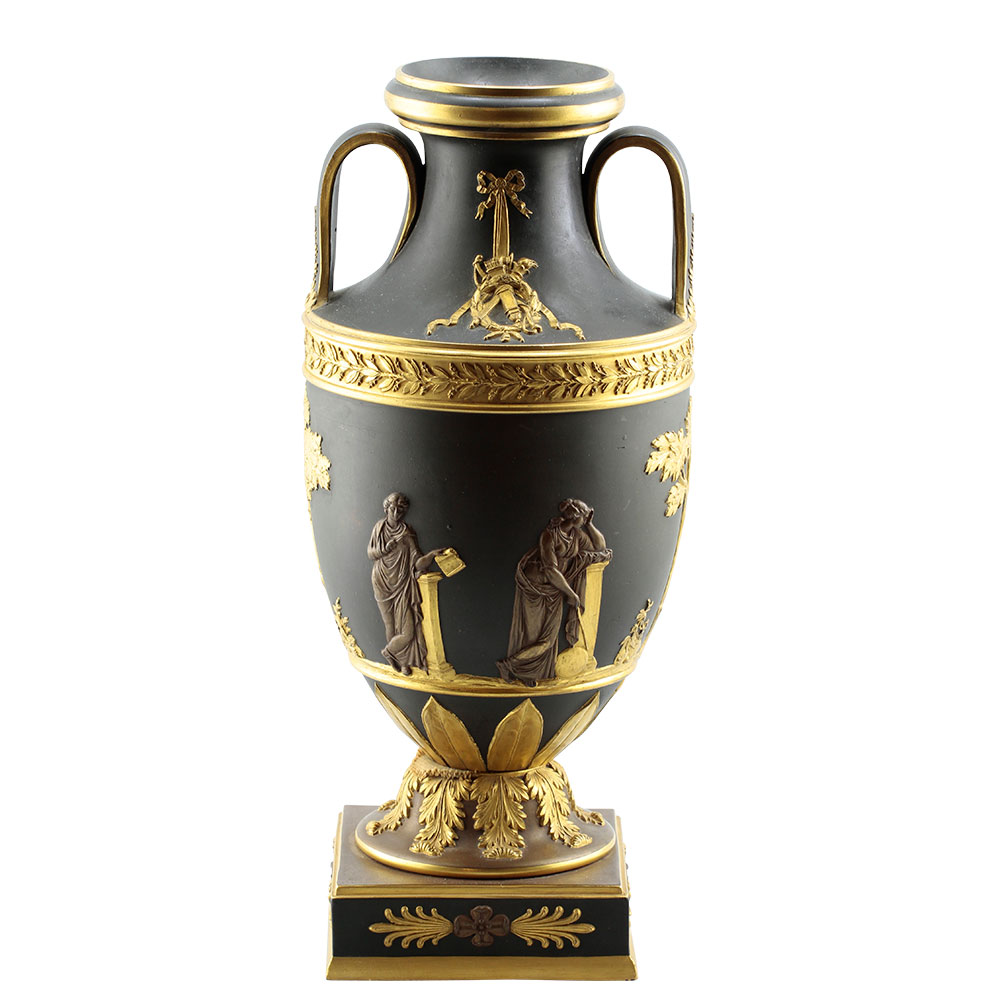
Wedgwood Gilded Black Basalt
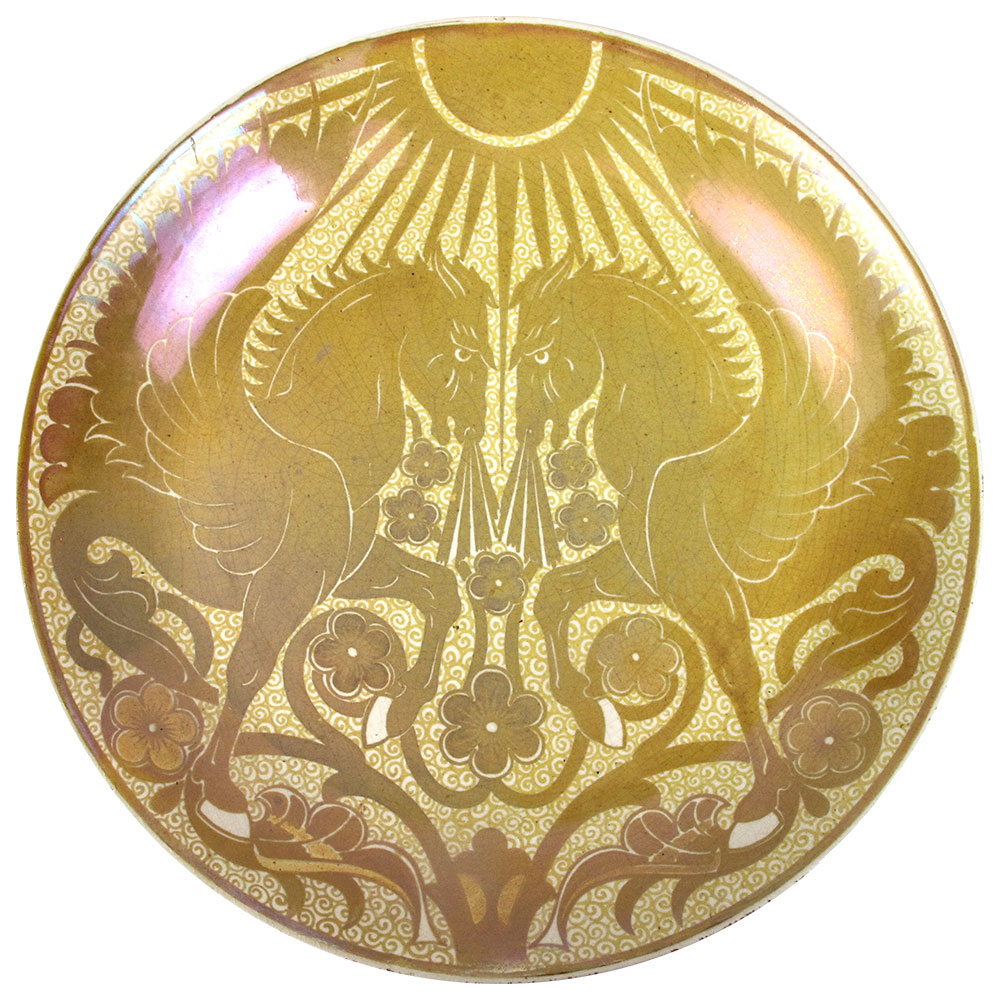
William de Morgan Pegasus
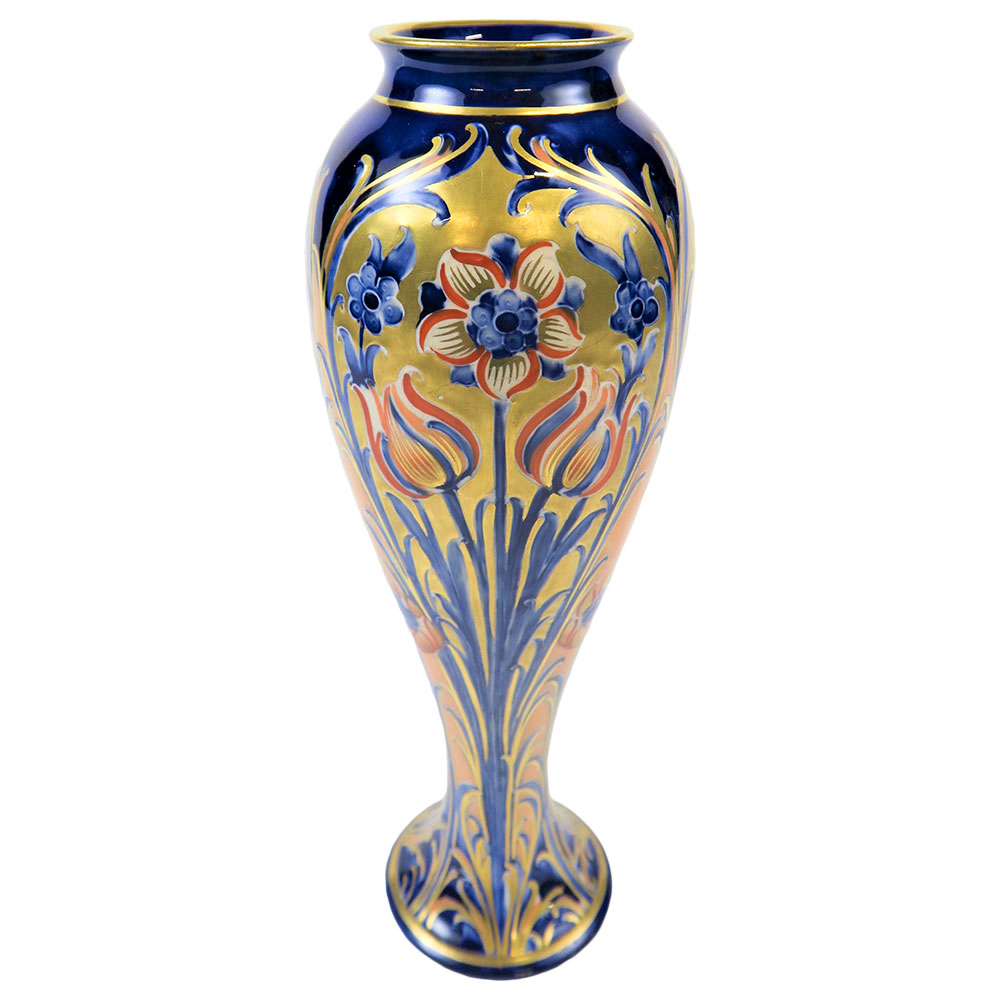
Moorcroft Alhambra Vase
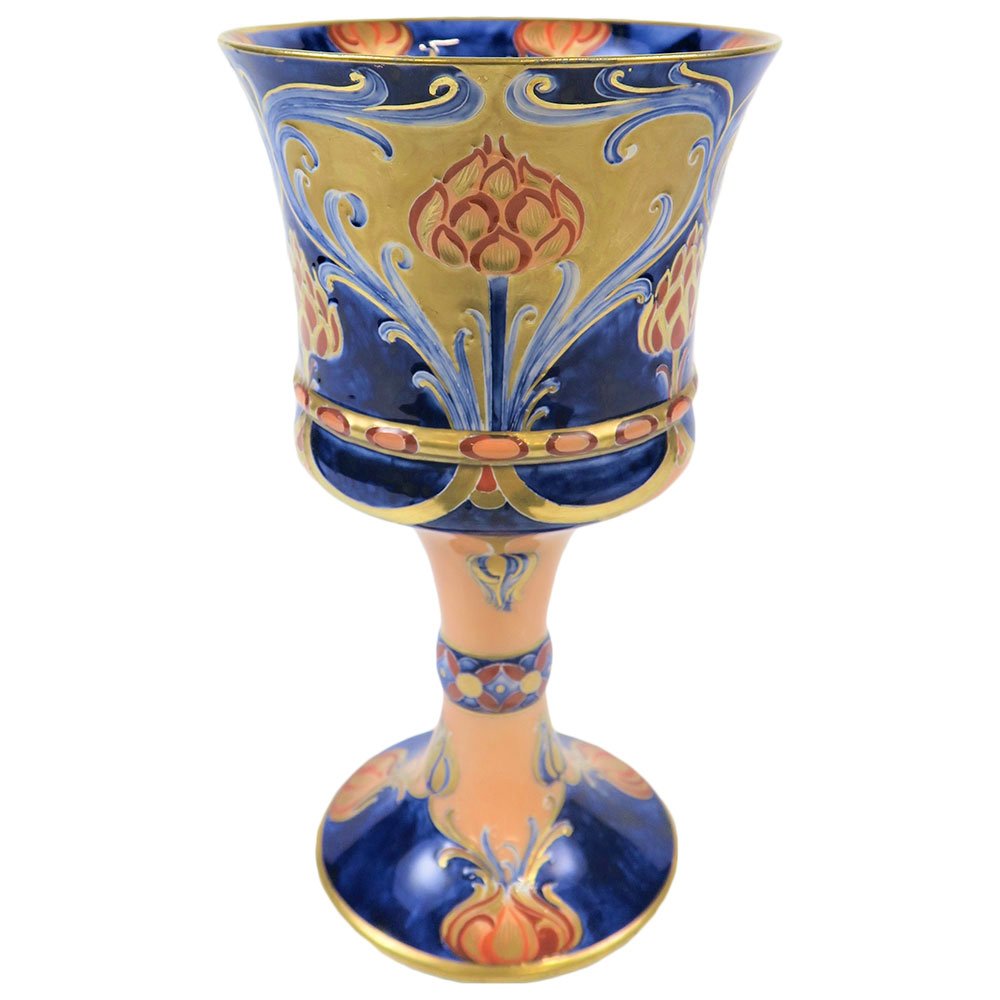
Moorcroft Alhambra Chalice
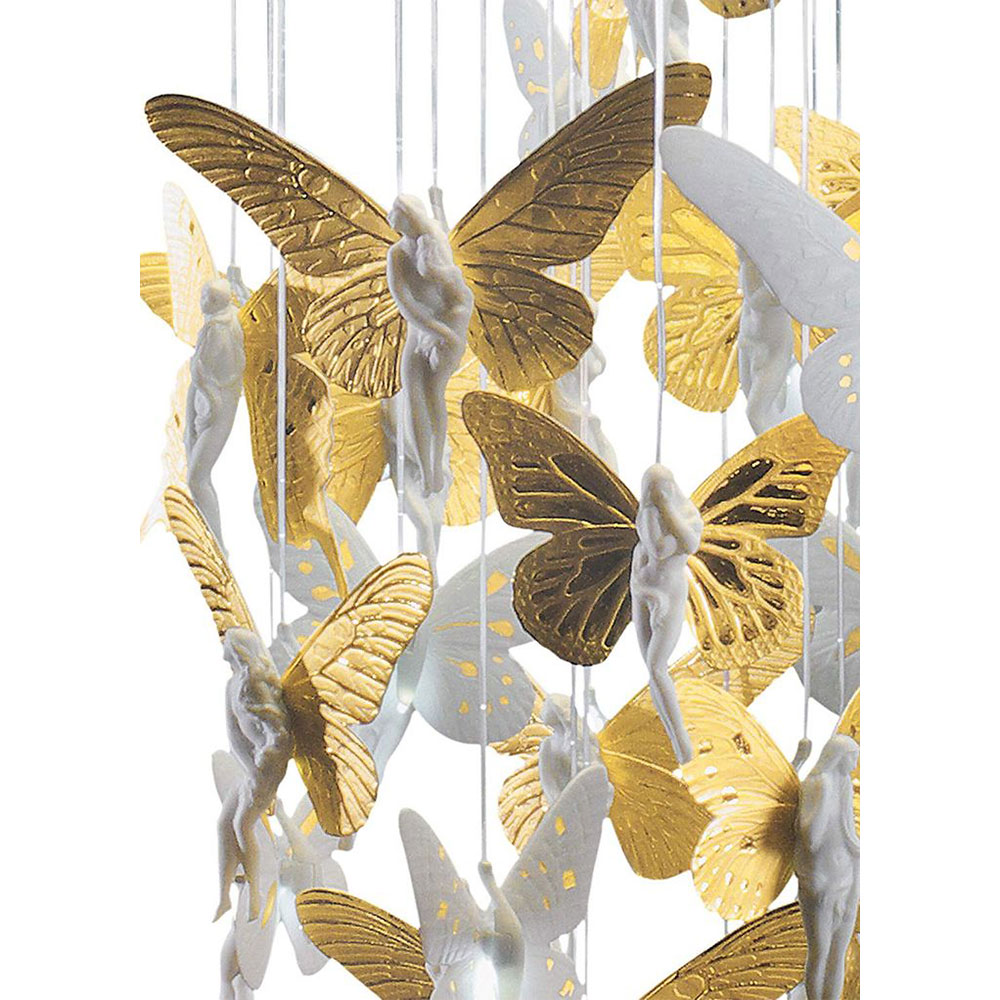
Lladro Niagara Golden Fairies
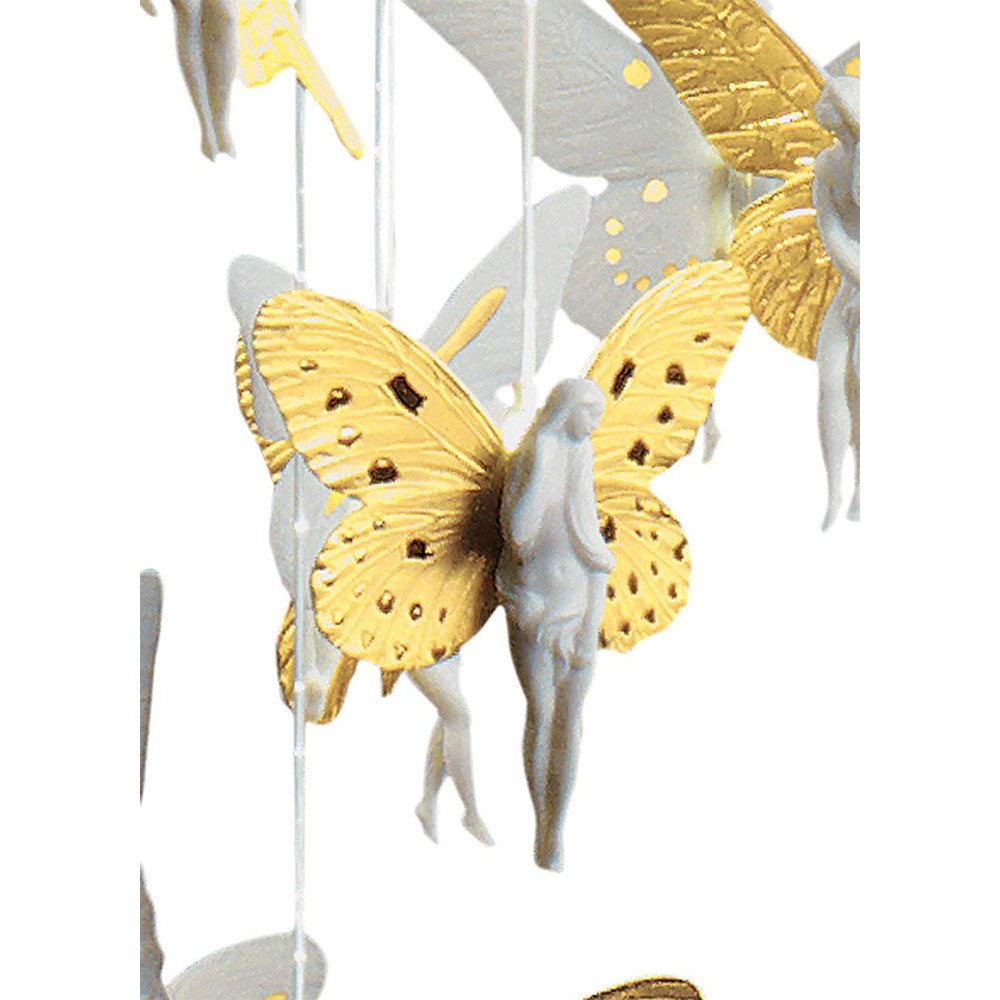
Lladro Niagara Golden Fairies
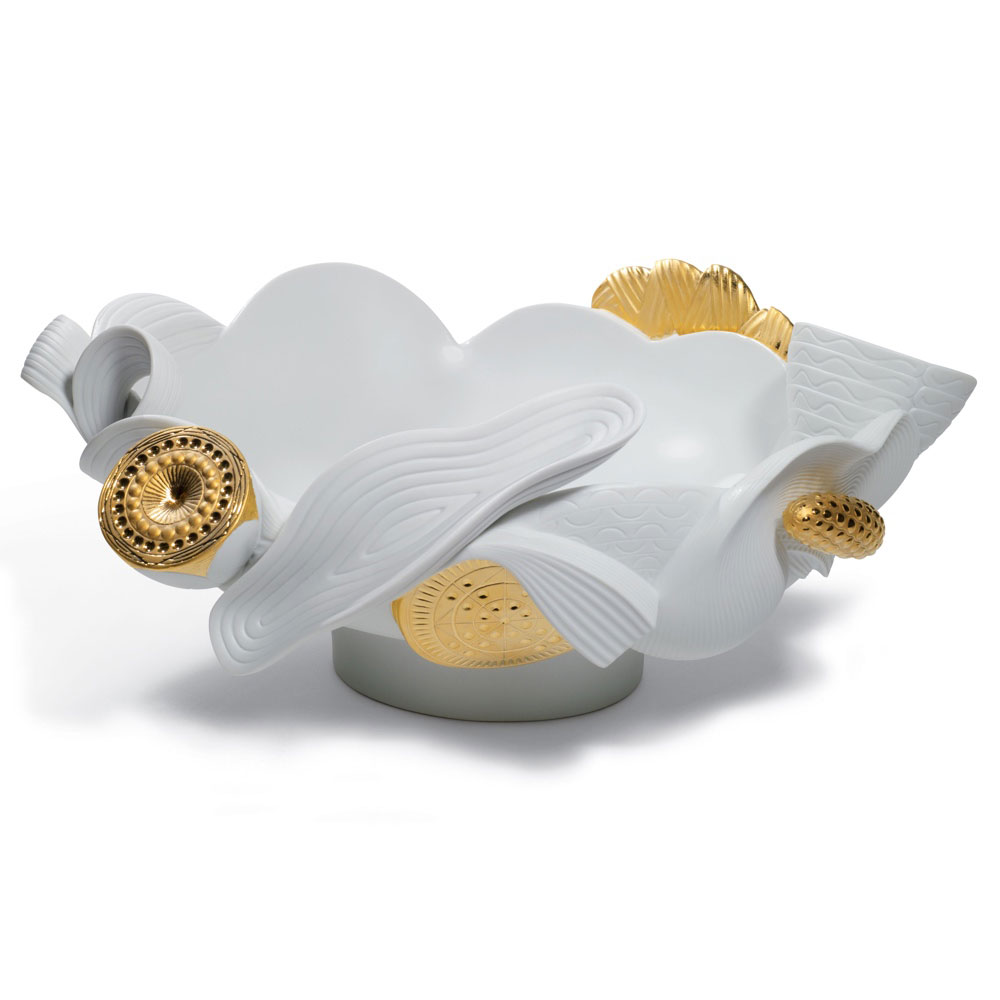
Lladró Naturofantastic Centerpiece
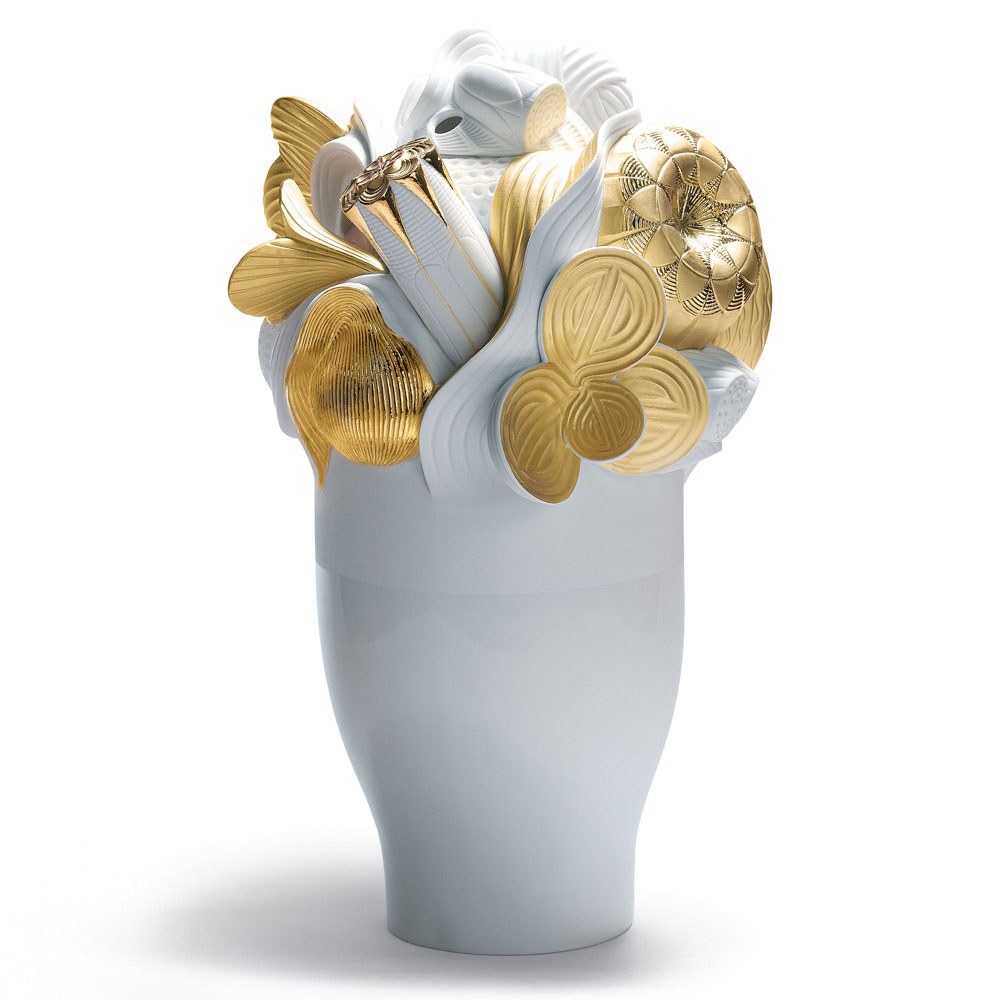
Lladró Naturofantastic Vase
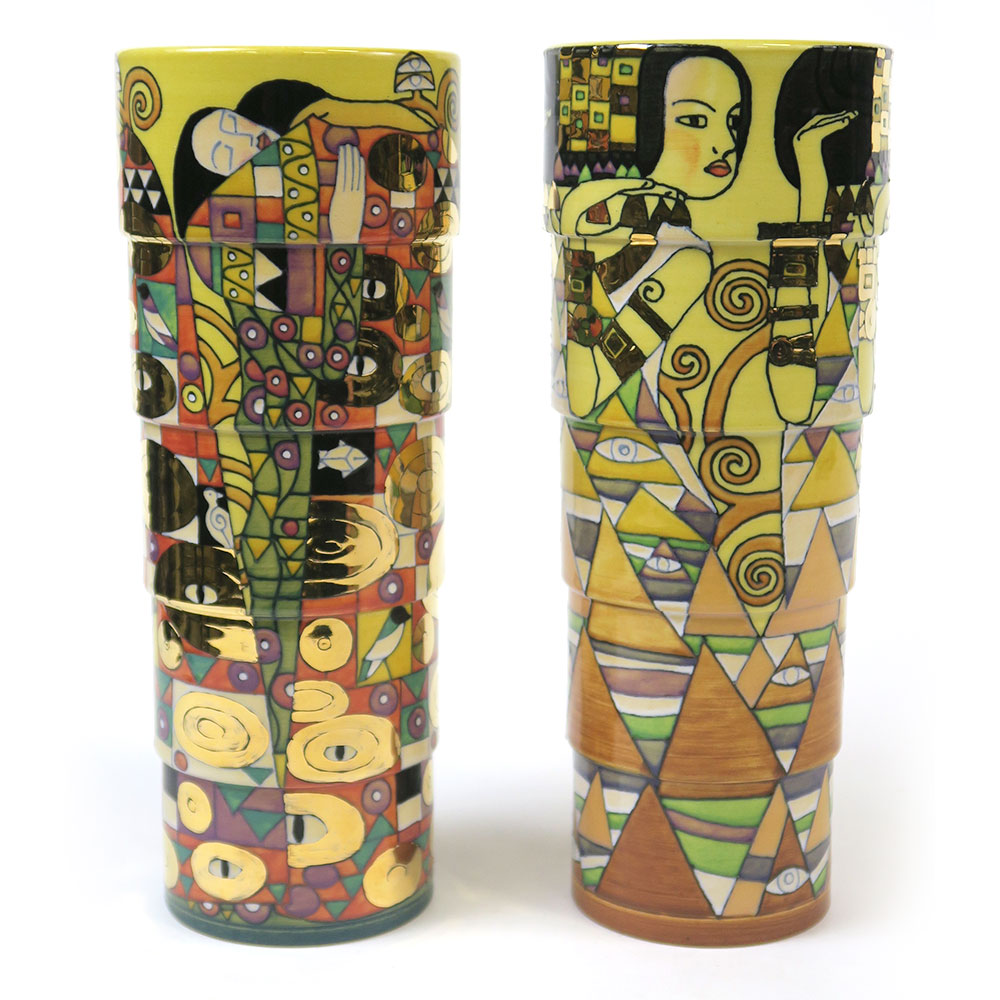
Dennis Chinaworks Klimt Vases
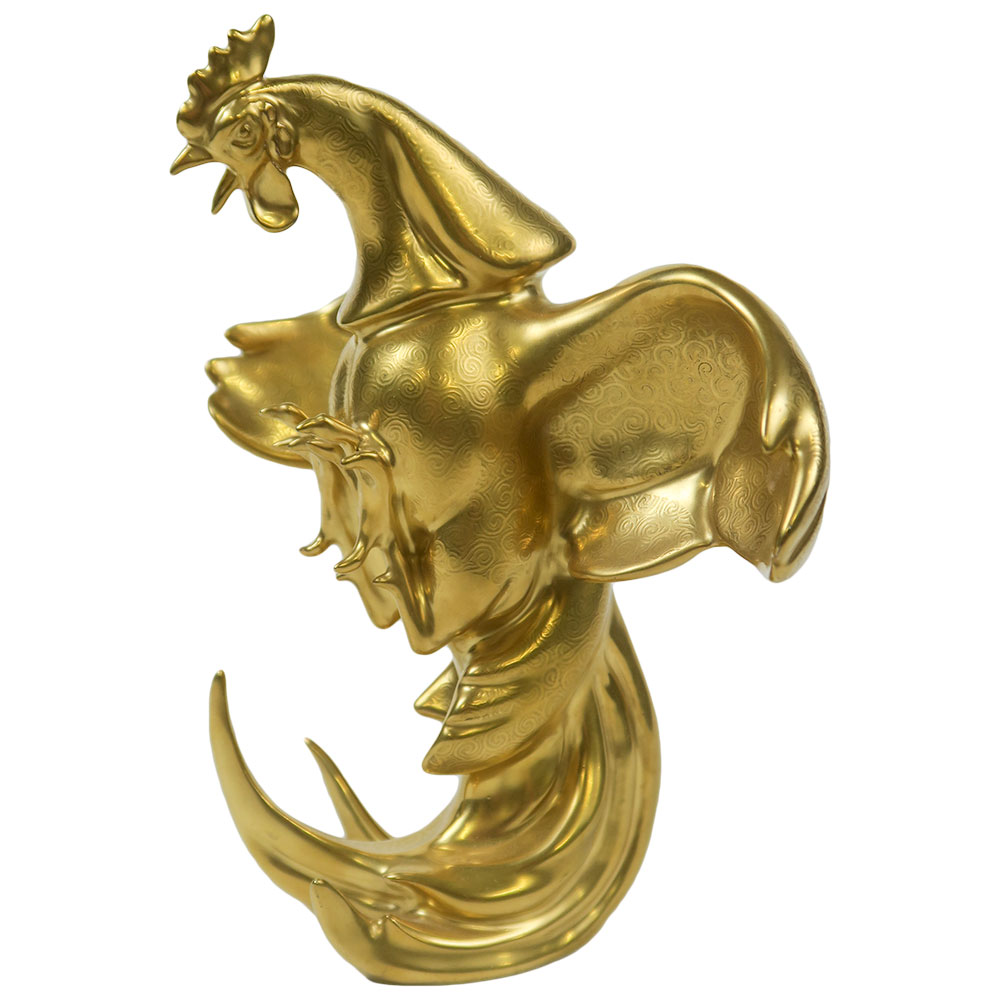
Minton Golden Luster Cockerel
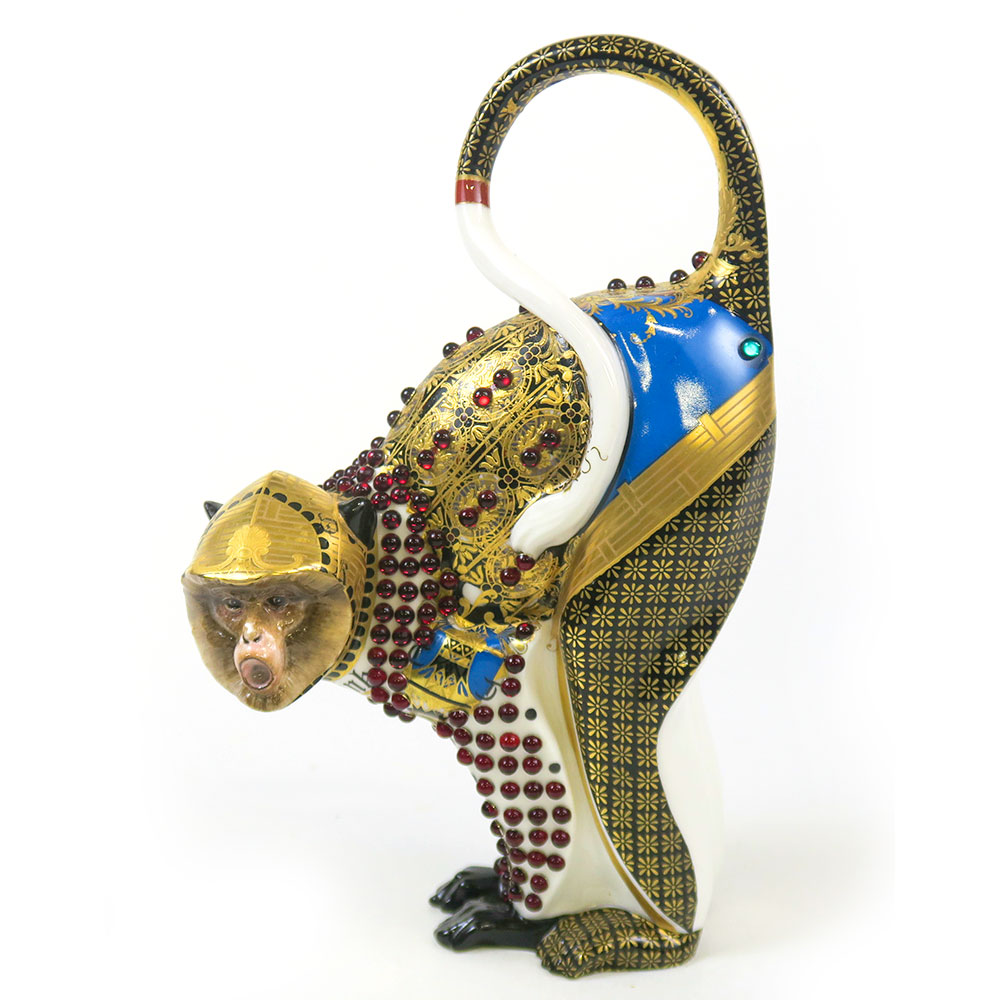
Minton Gold & Jeweled Monkey by A. Hopper
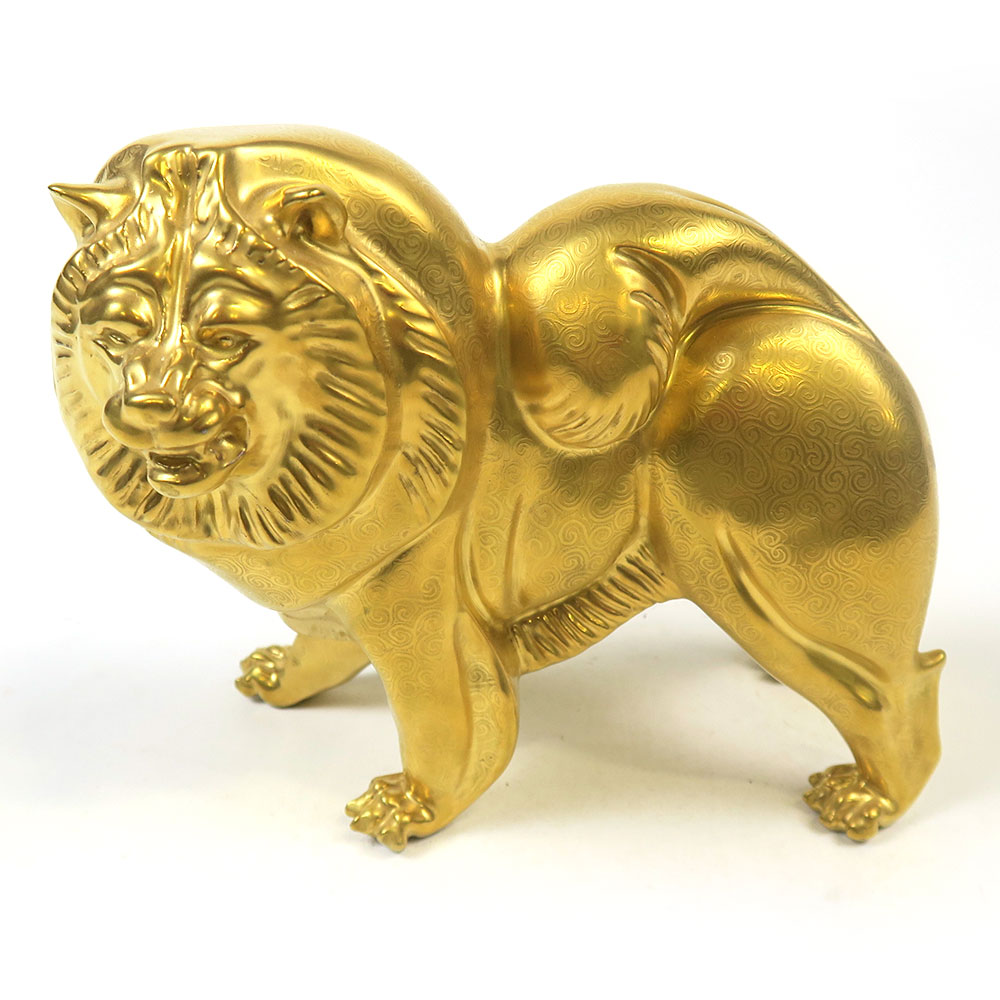
Minton Acid Etched Chow Dog
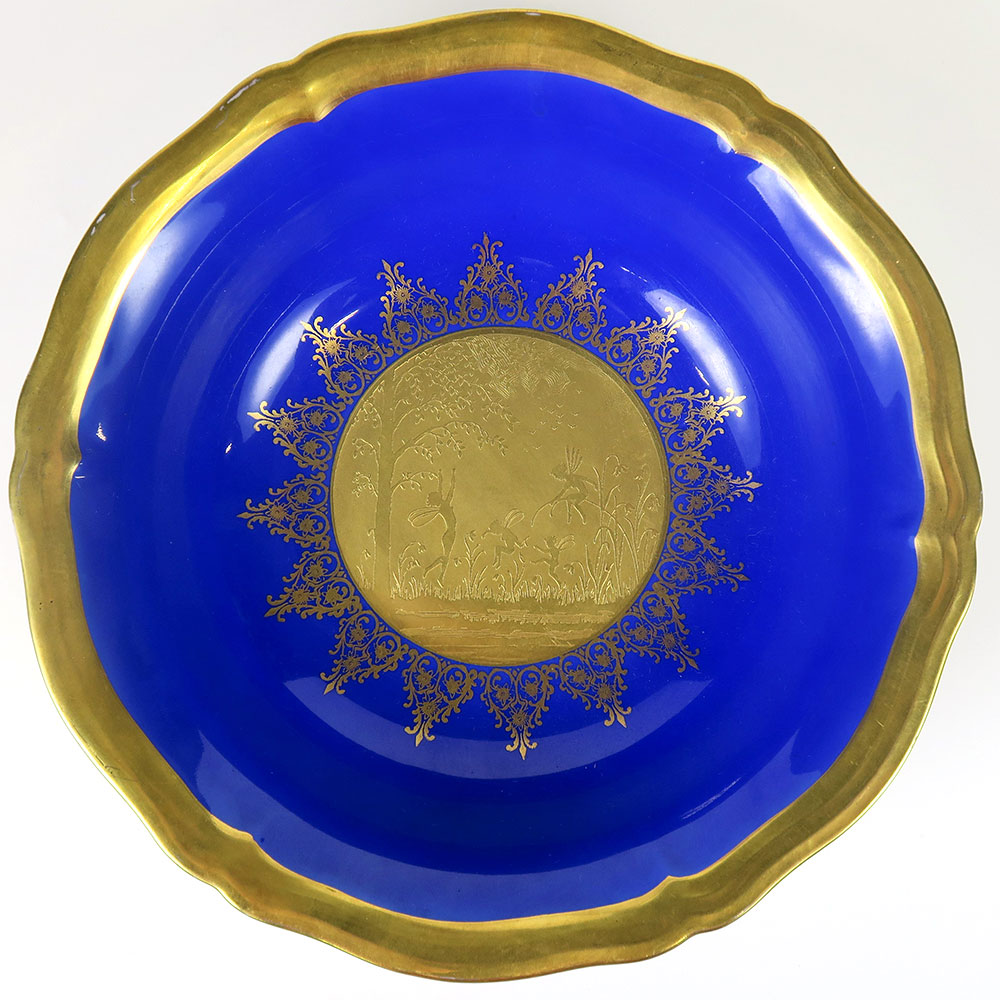
Rosenthal Golden Fairies bowl
